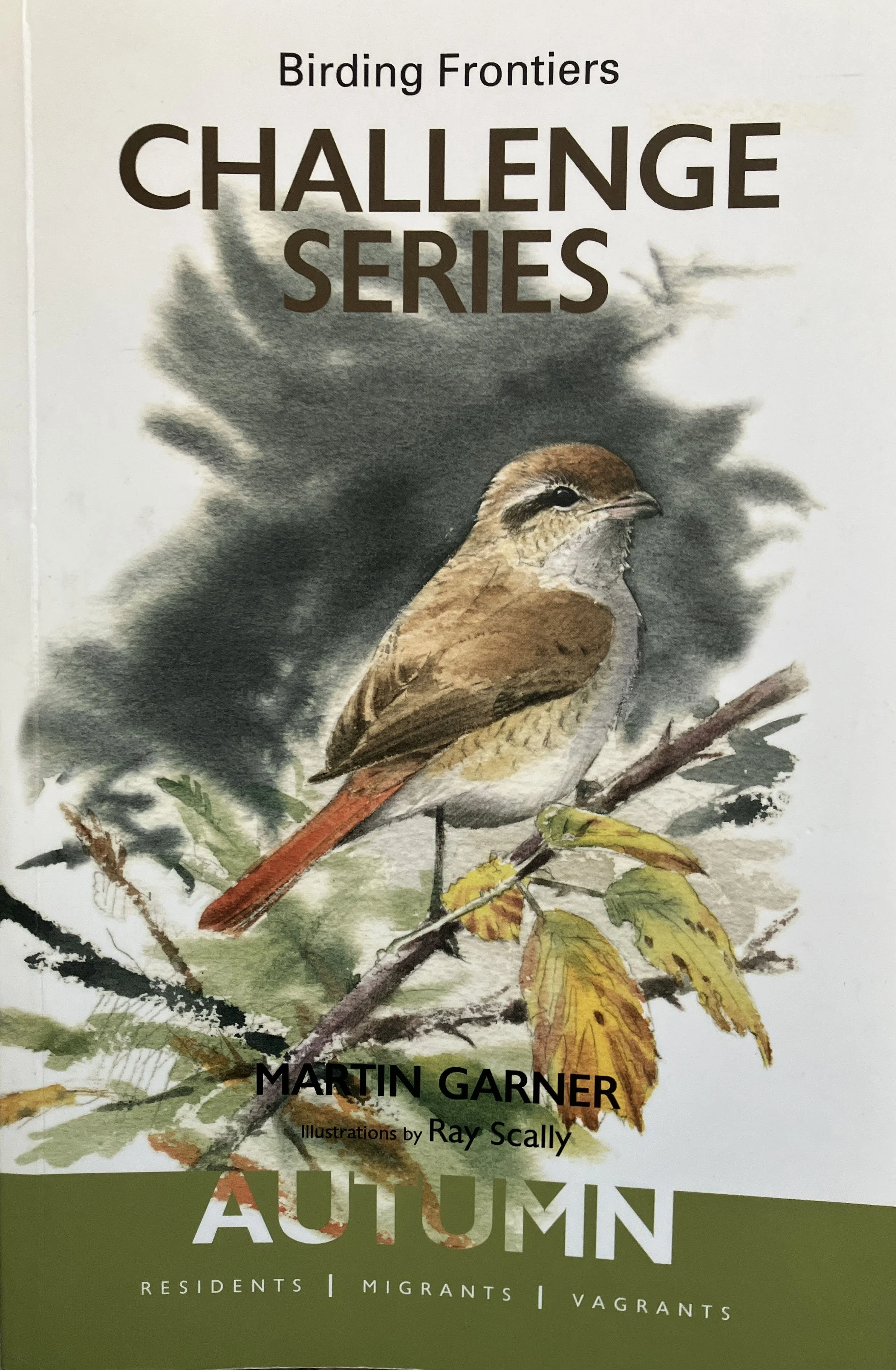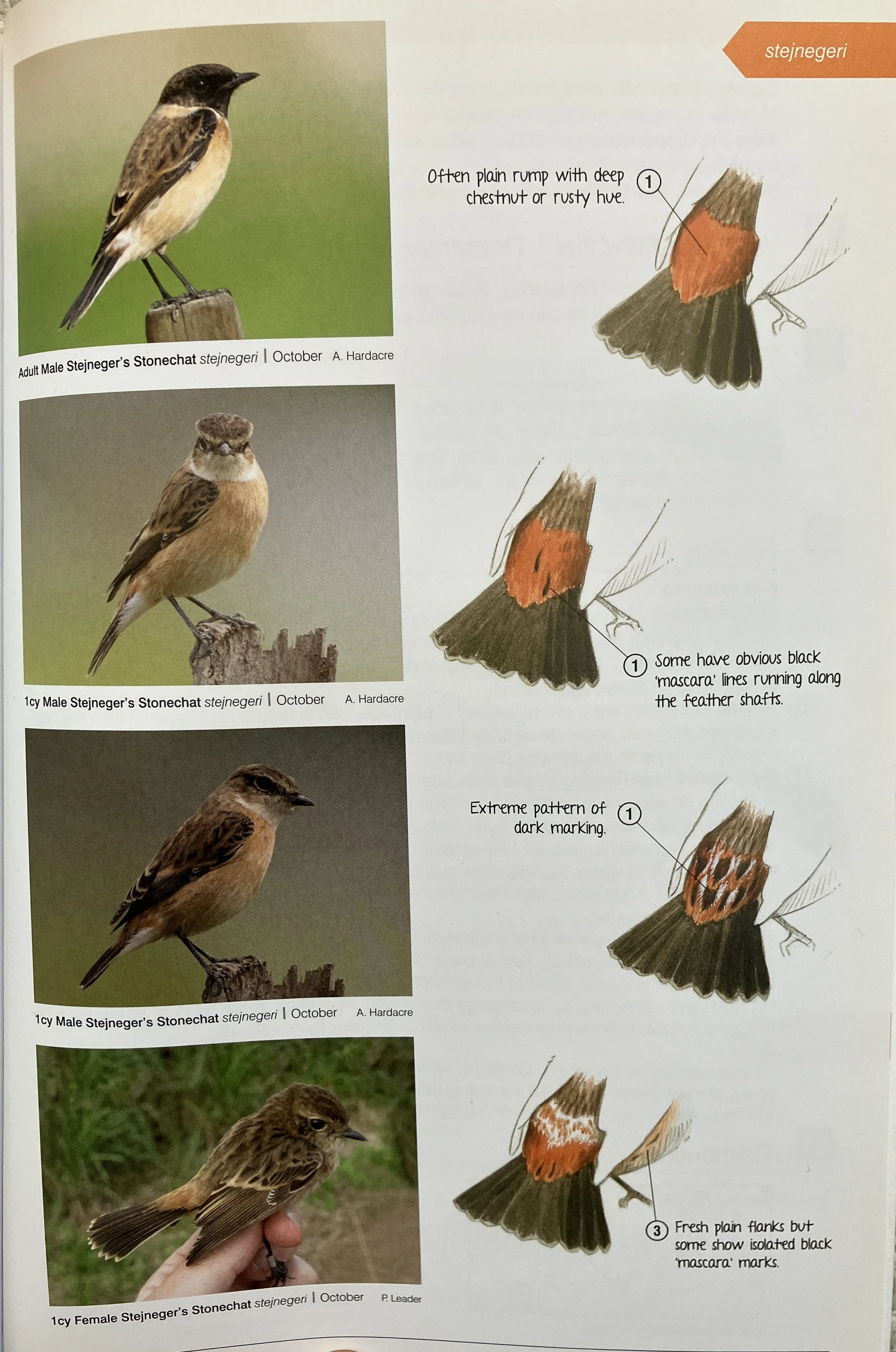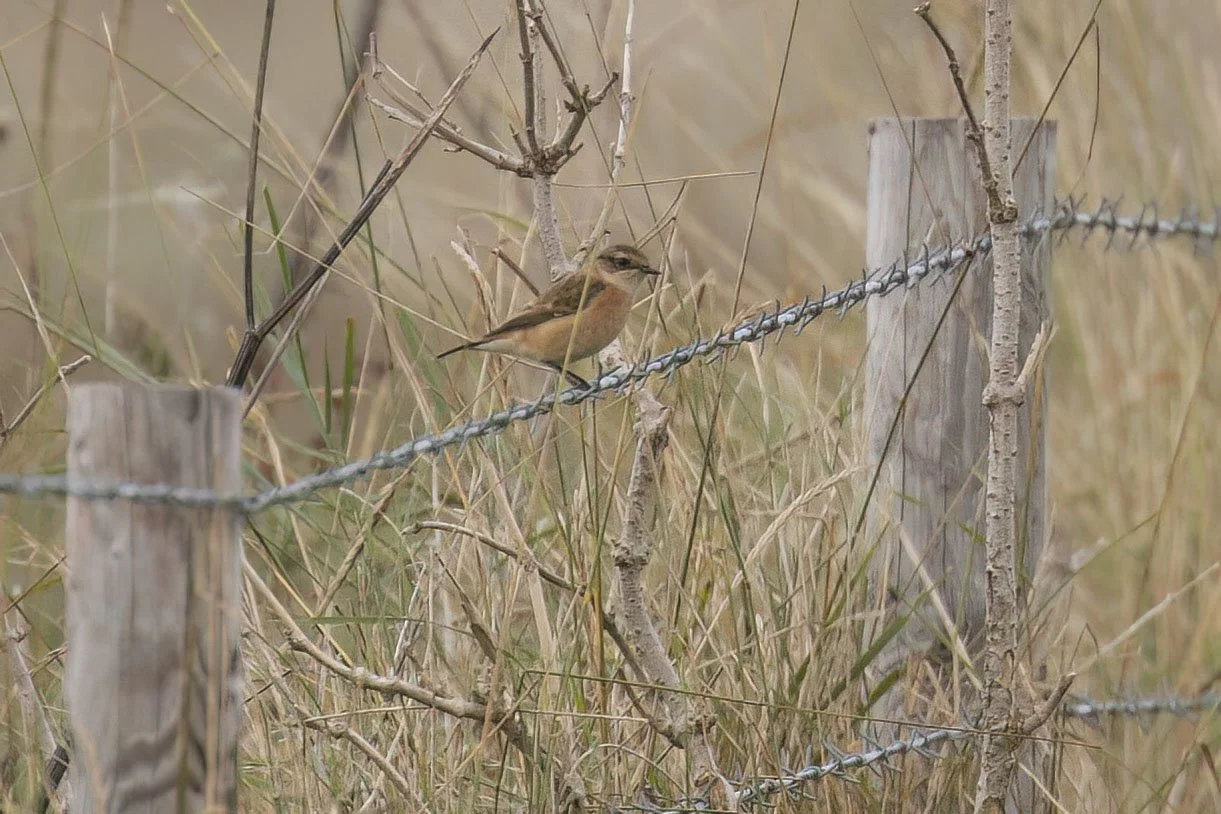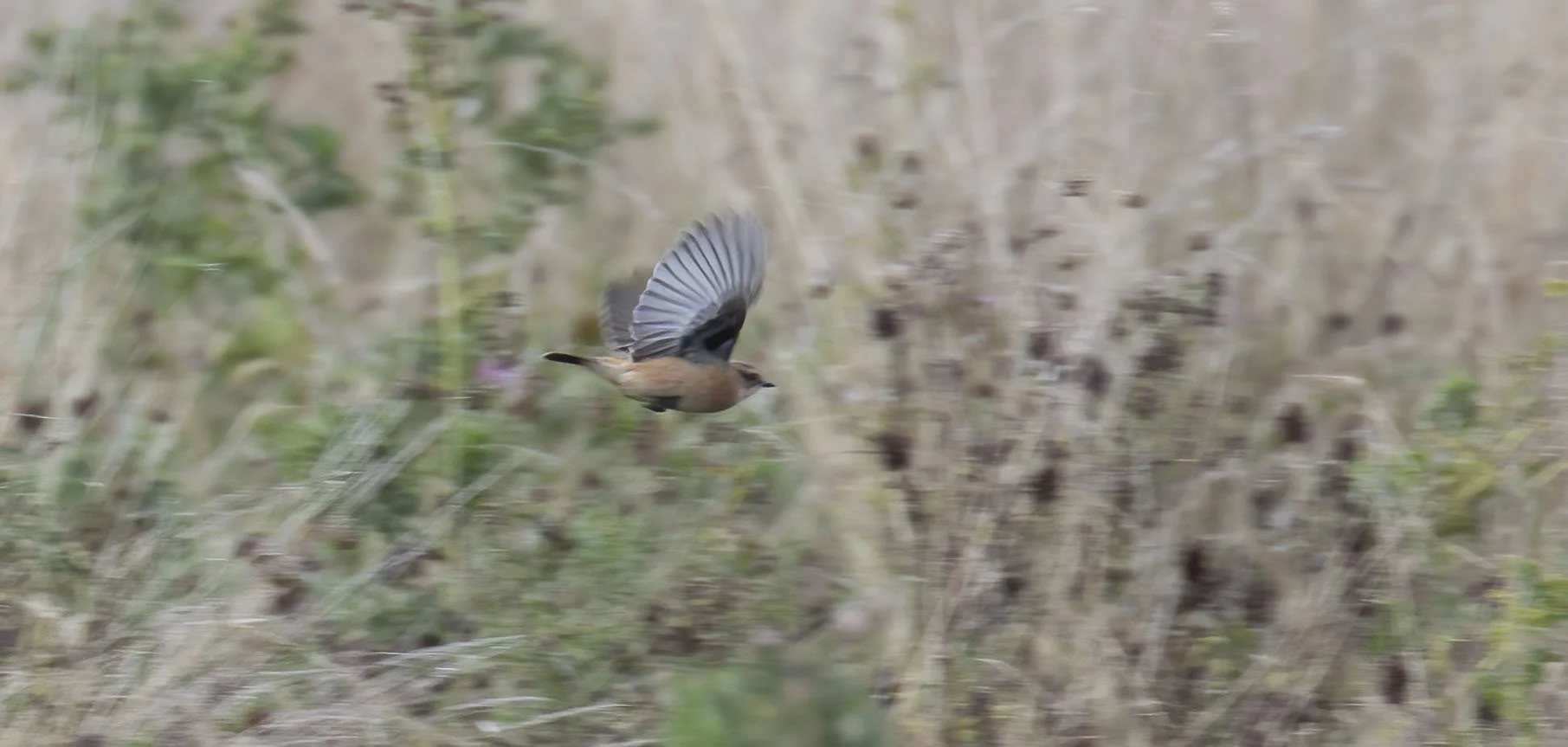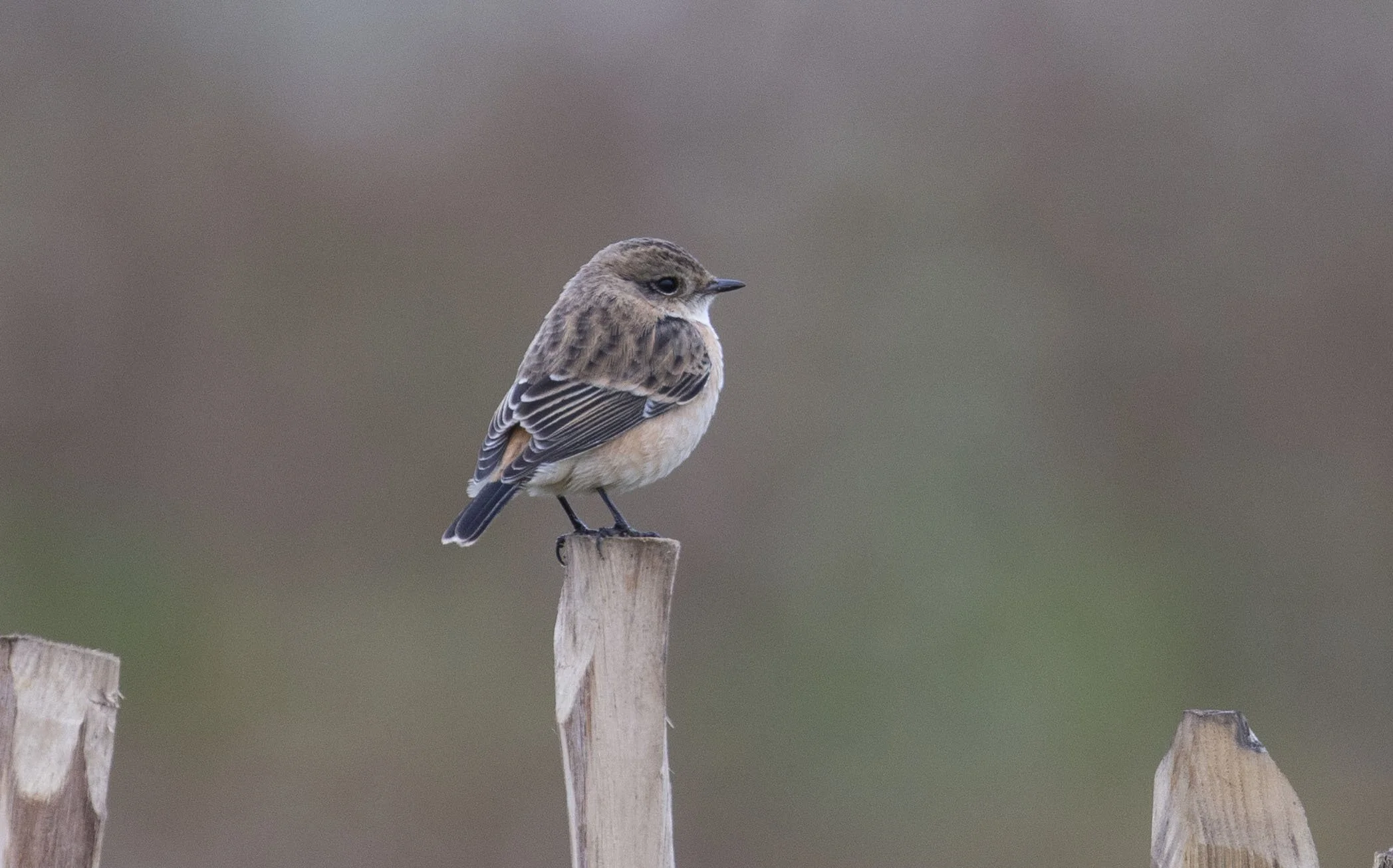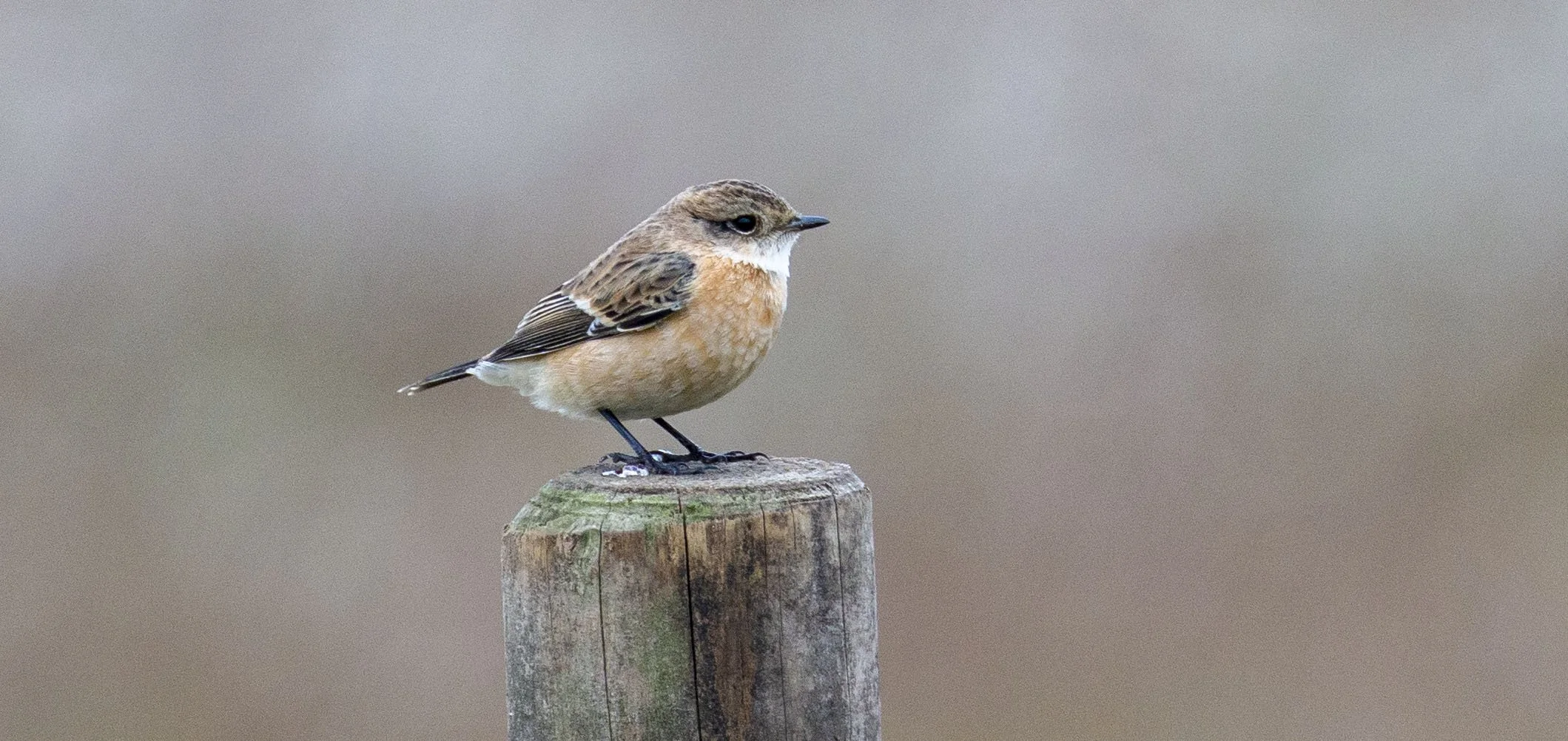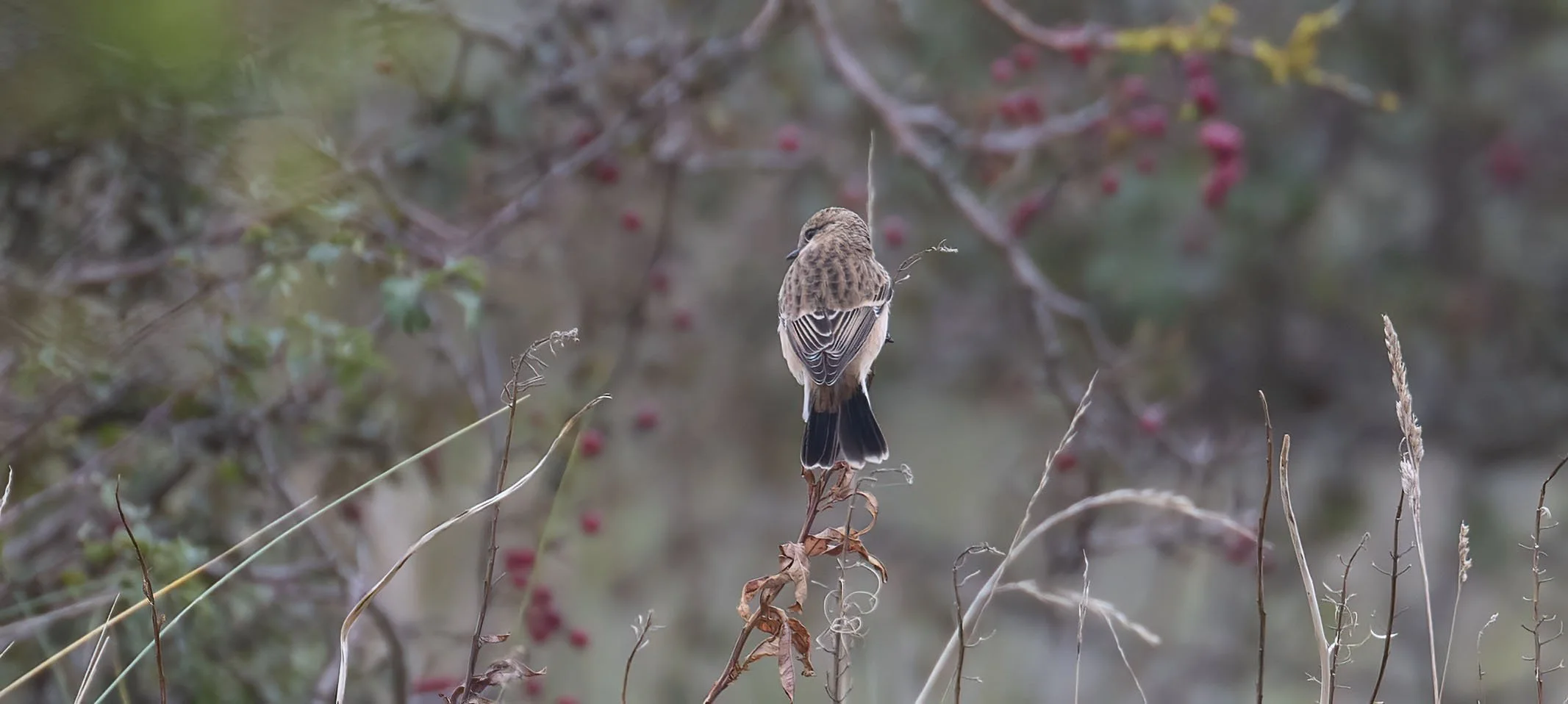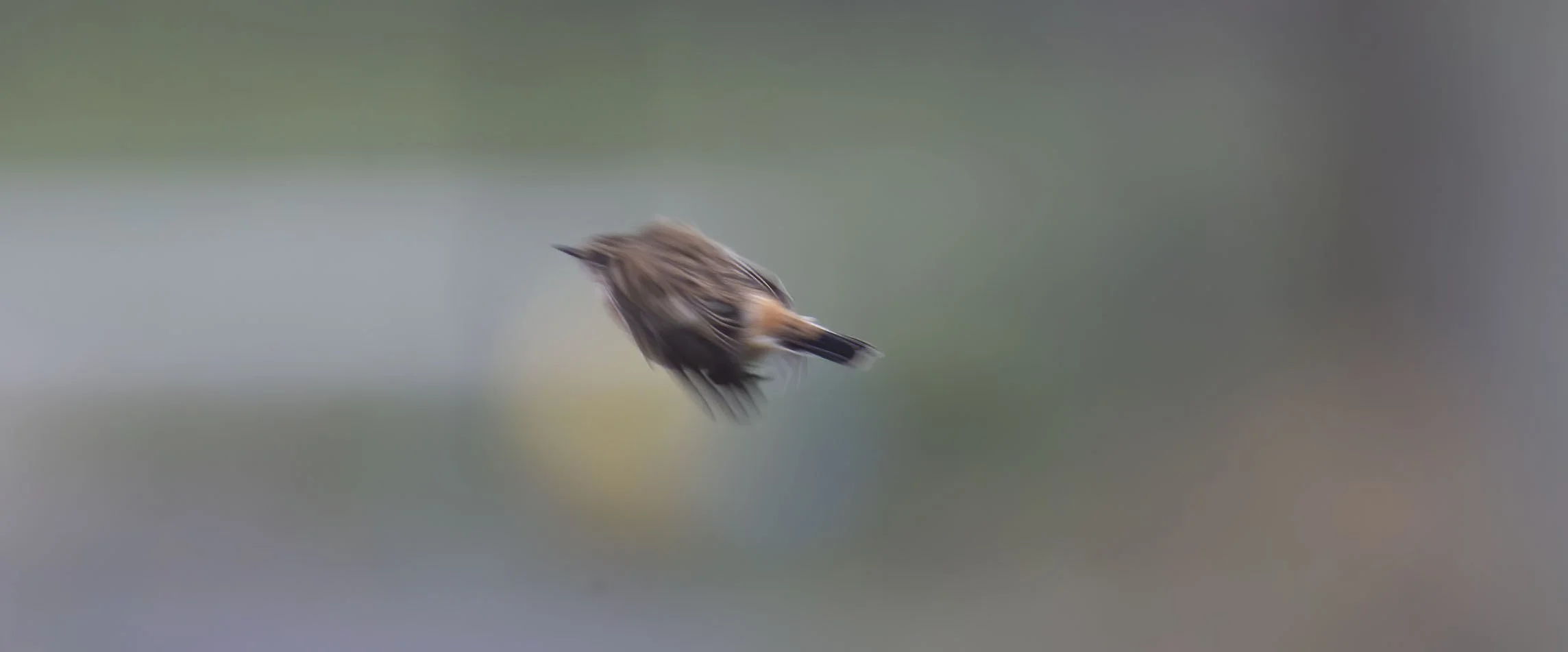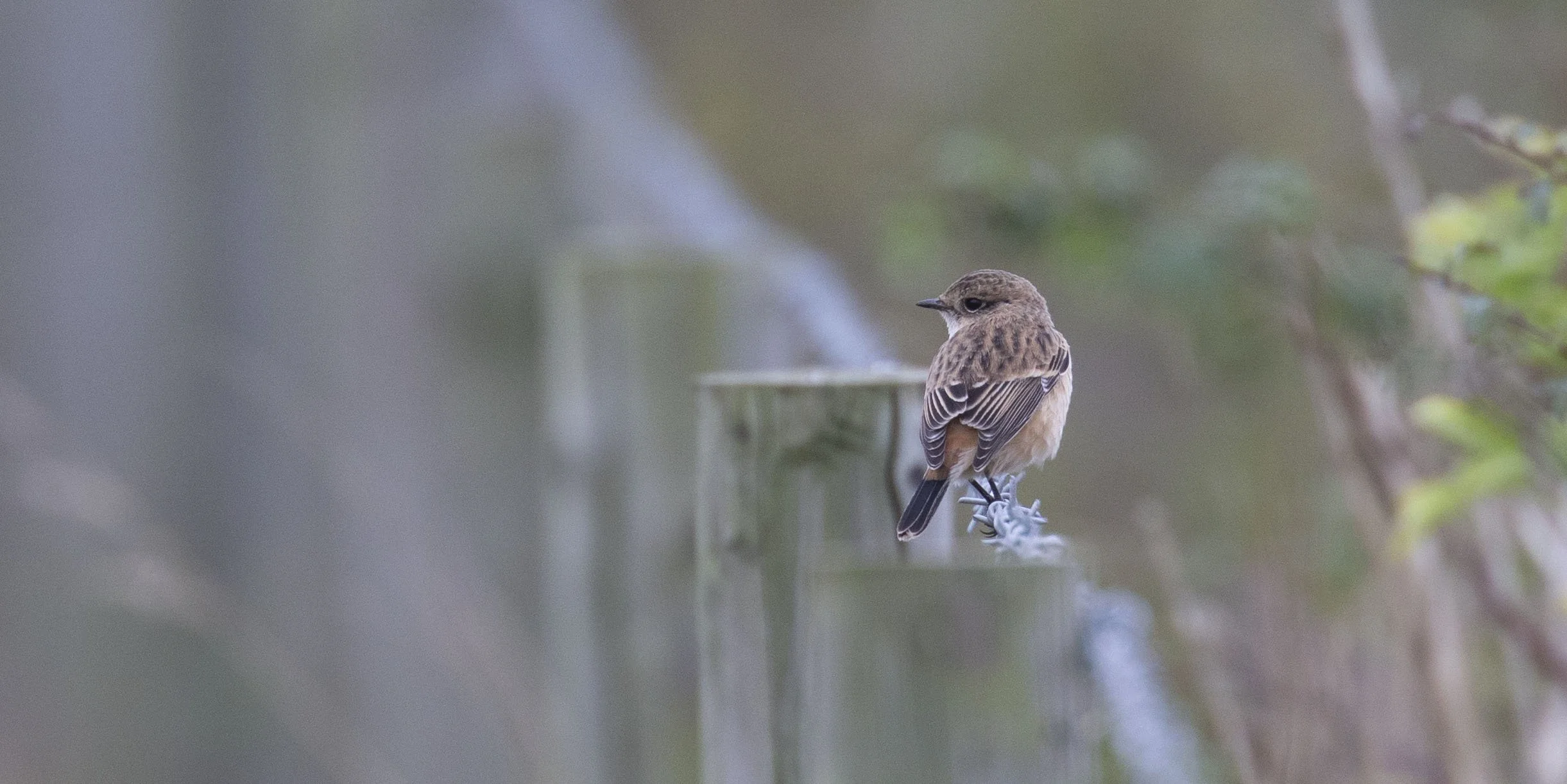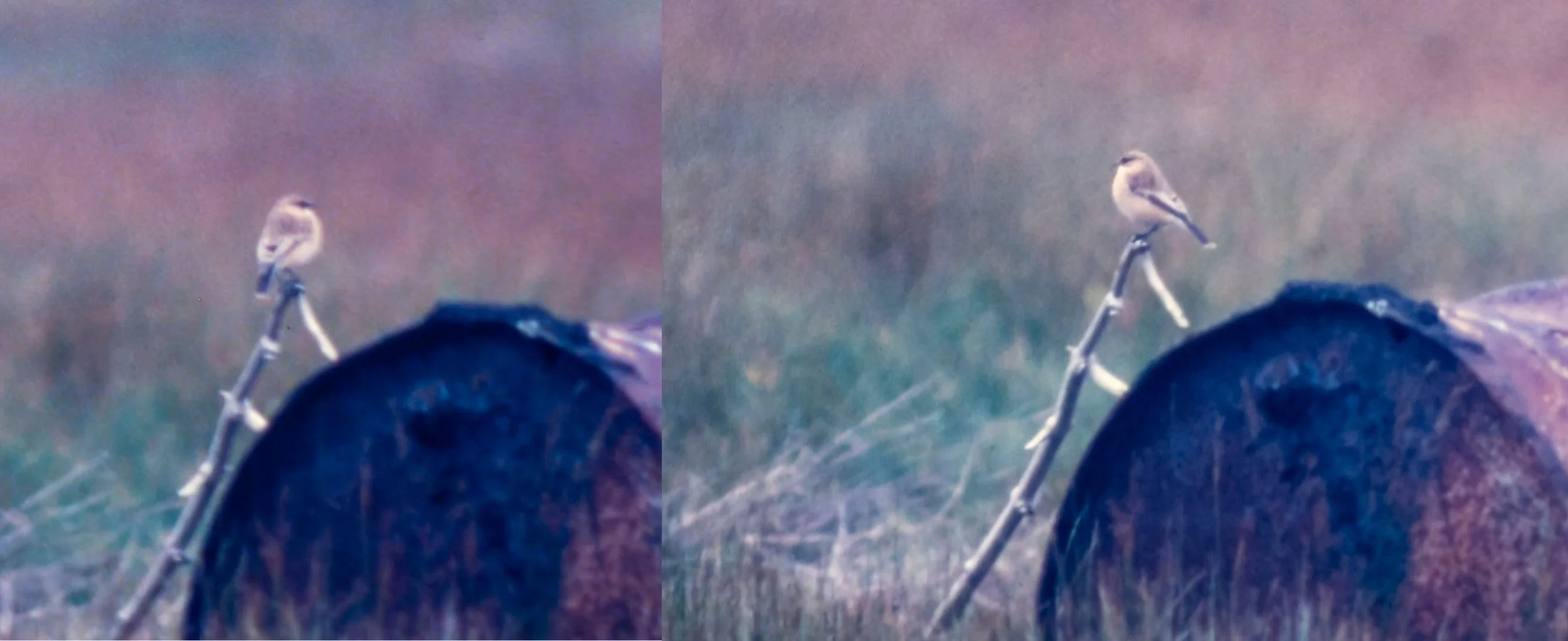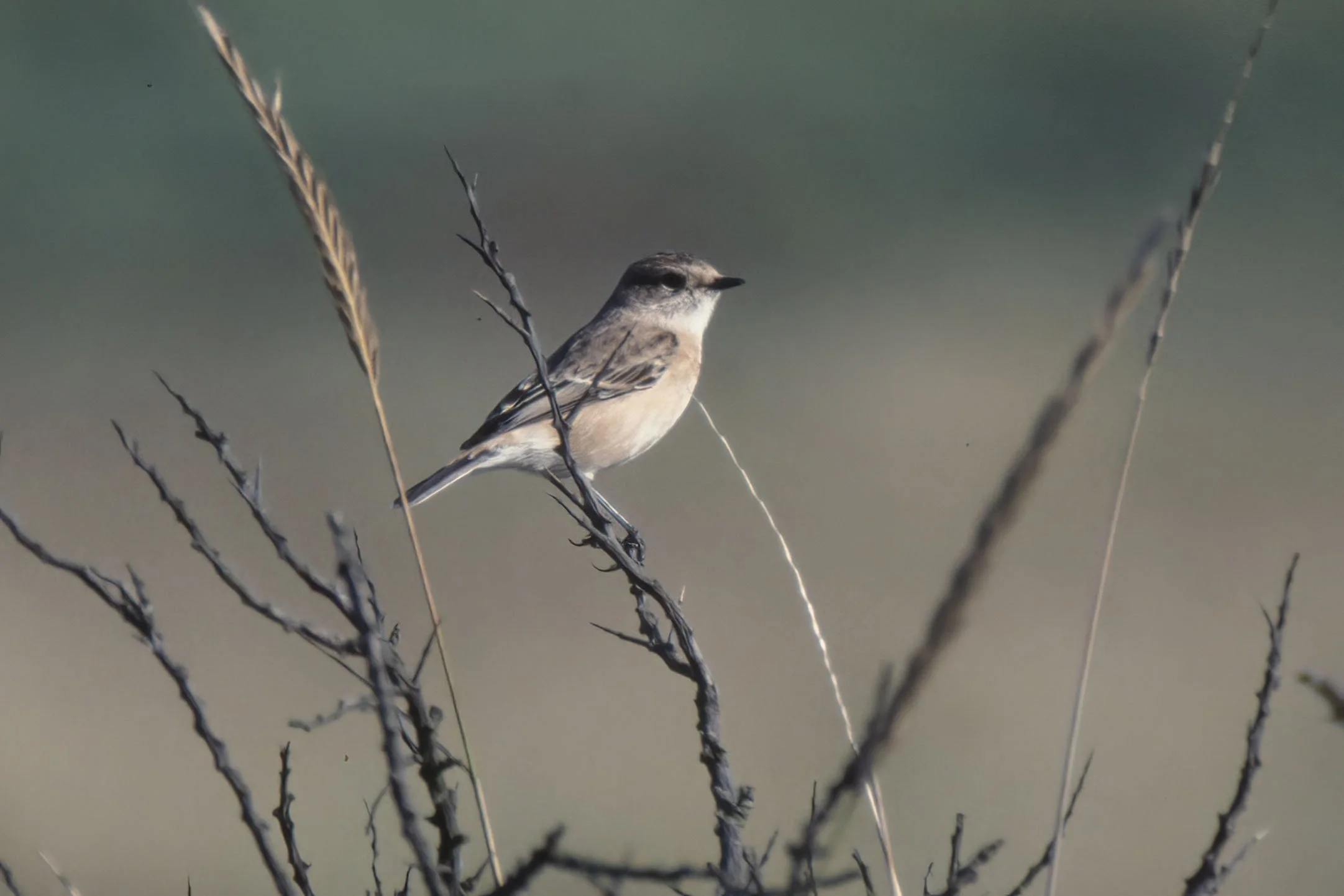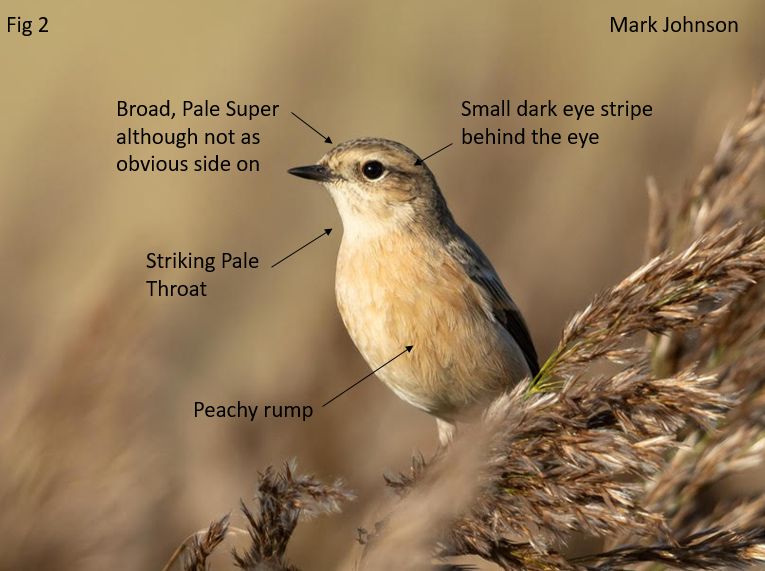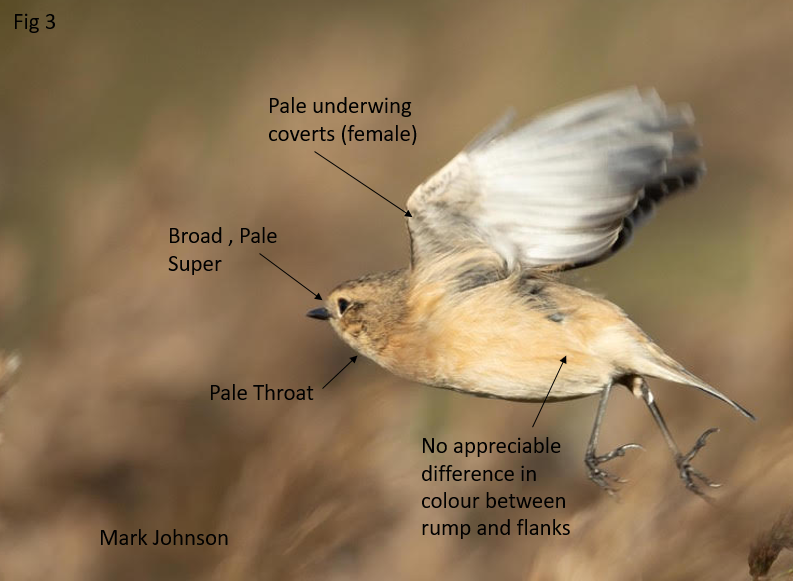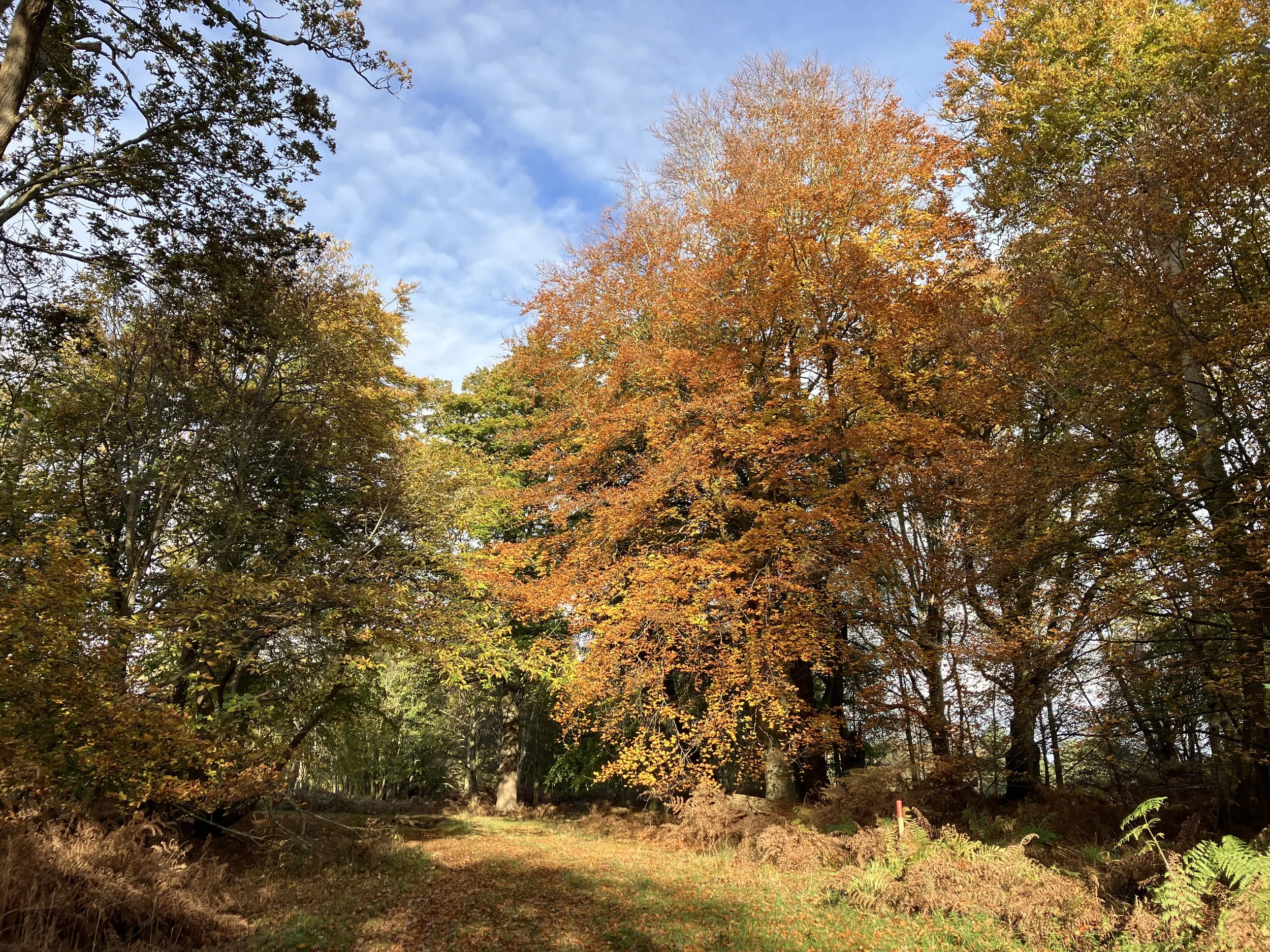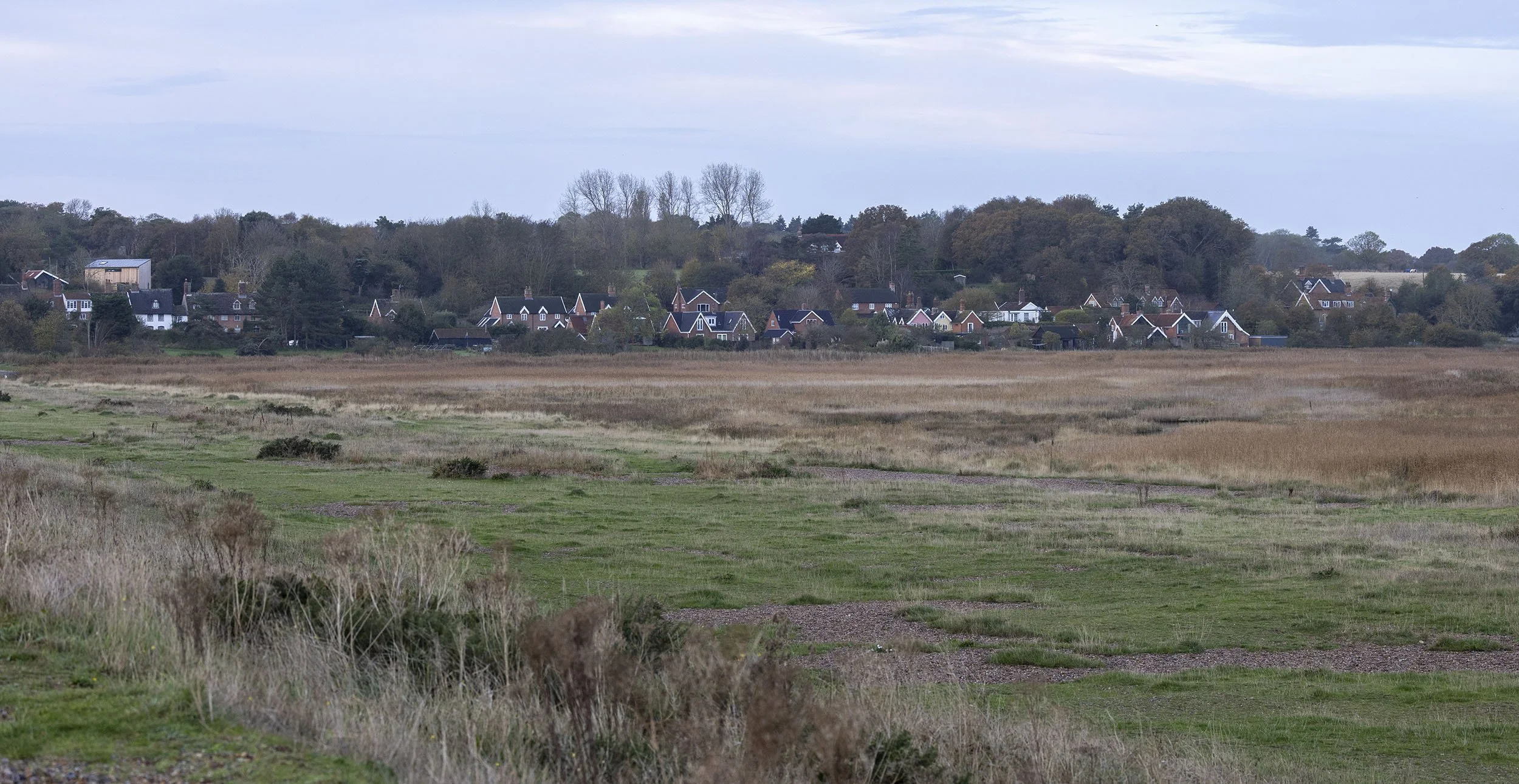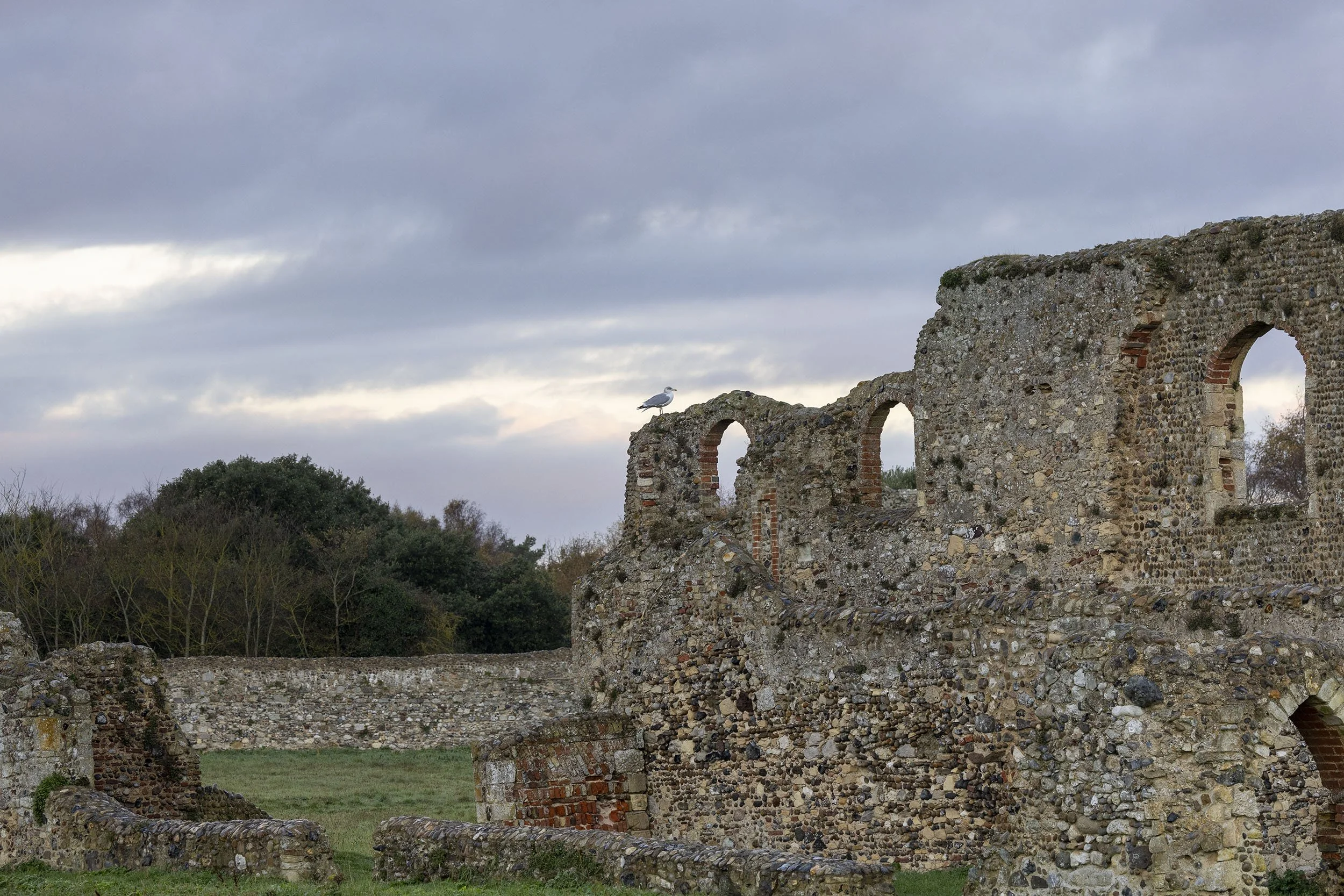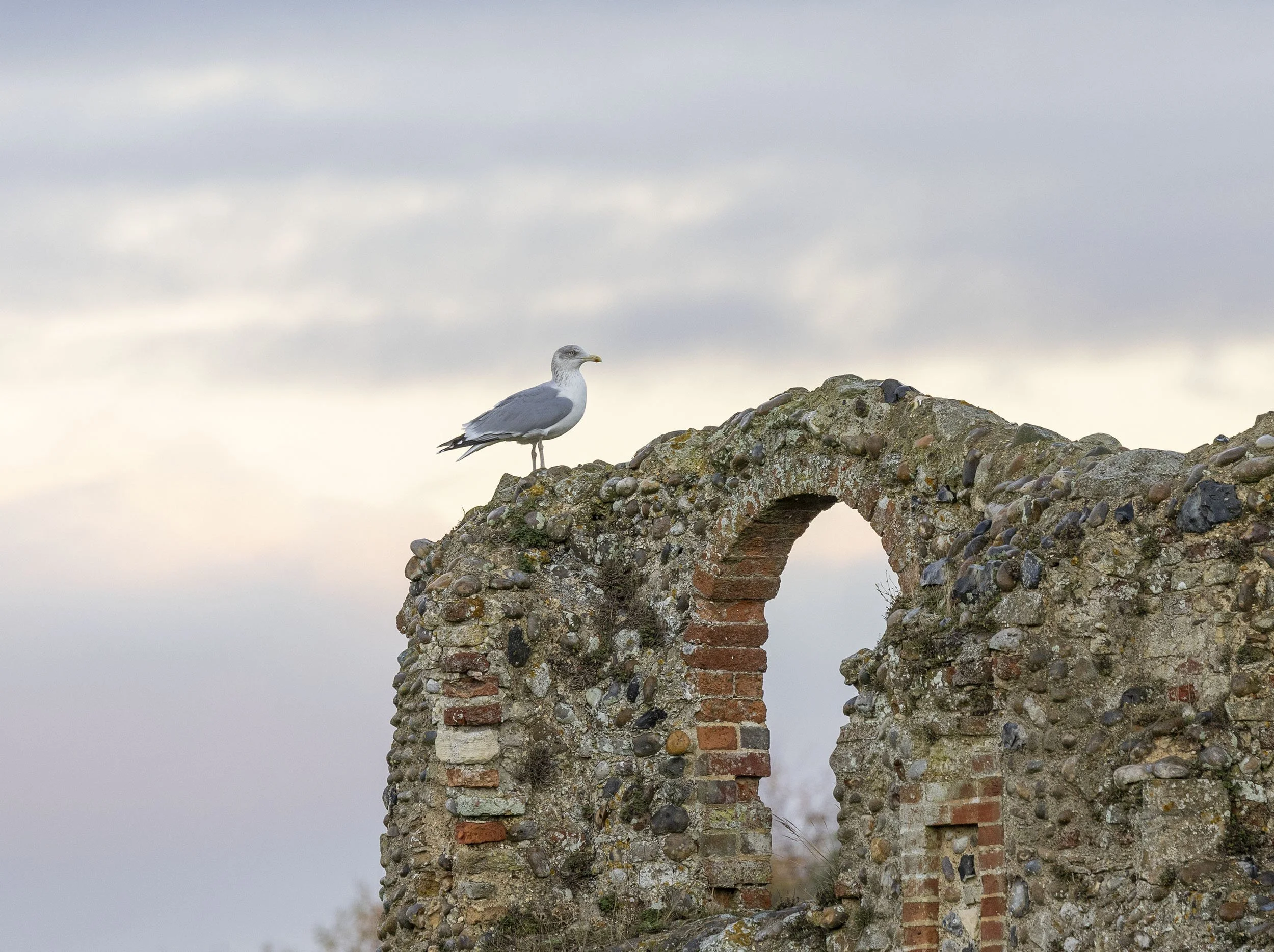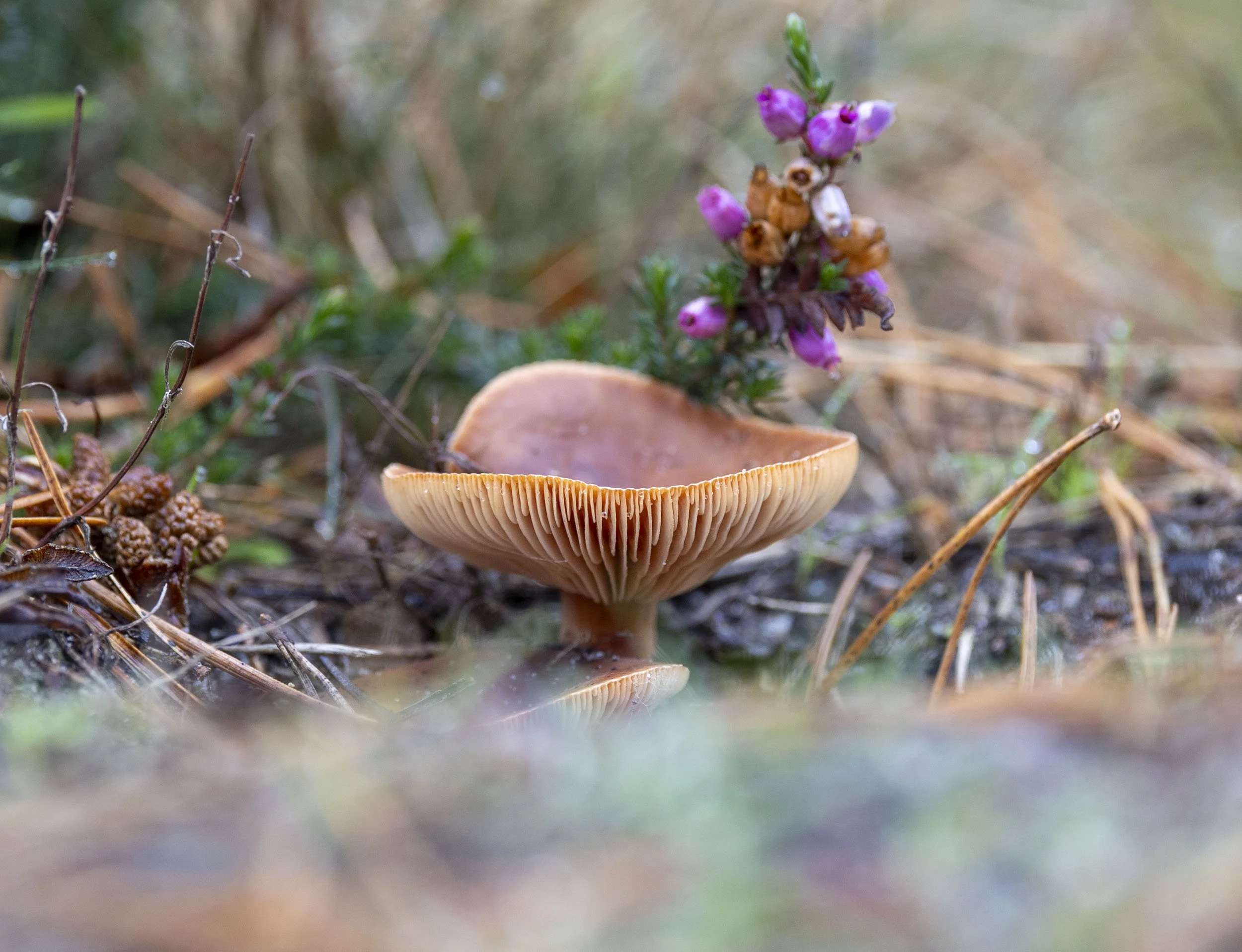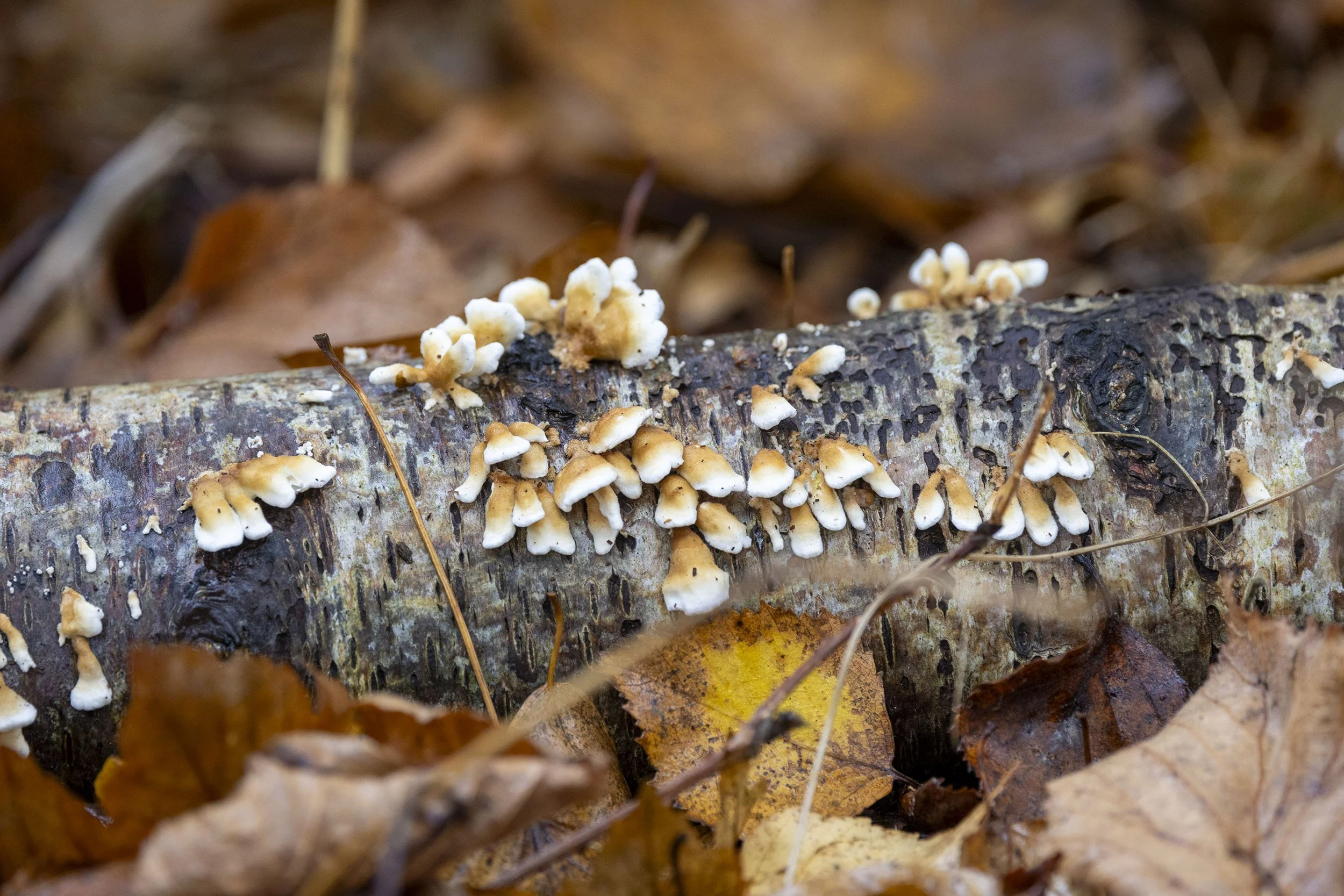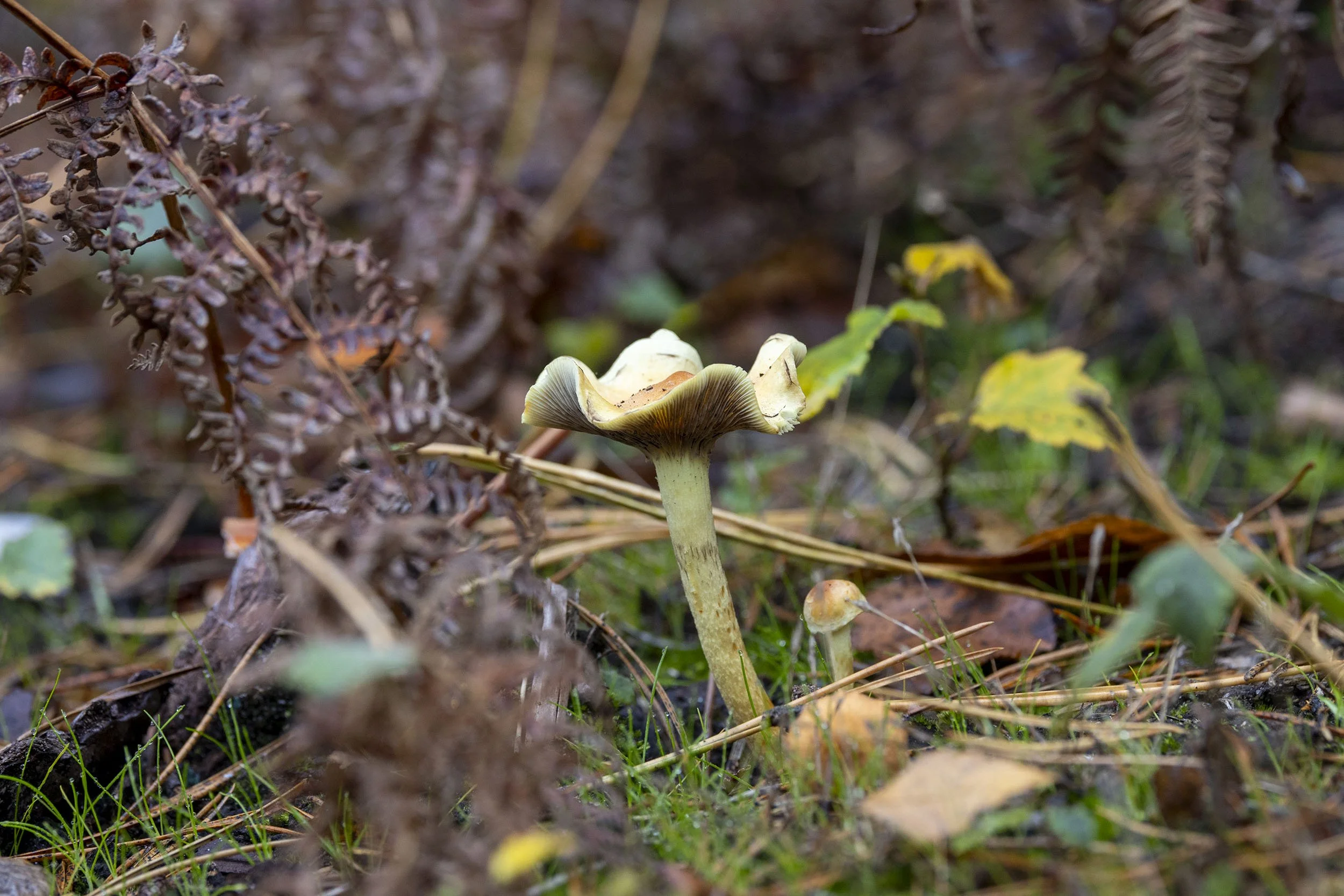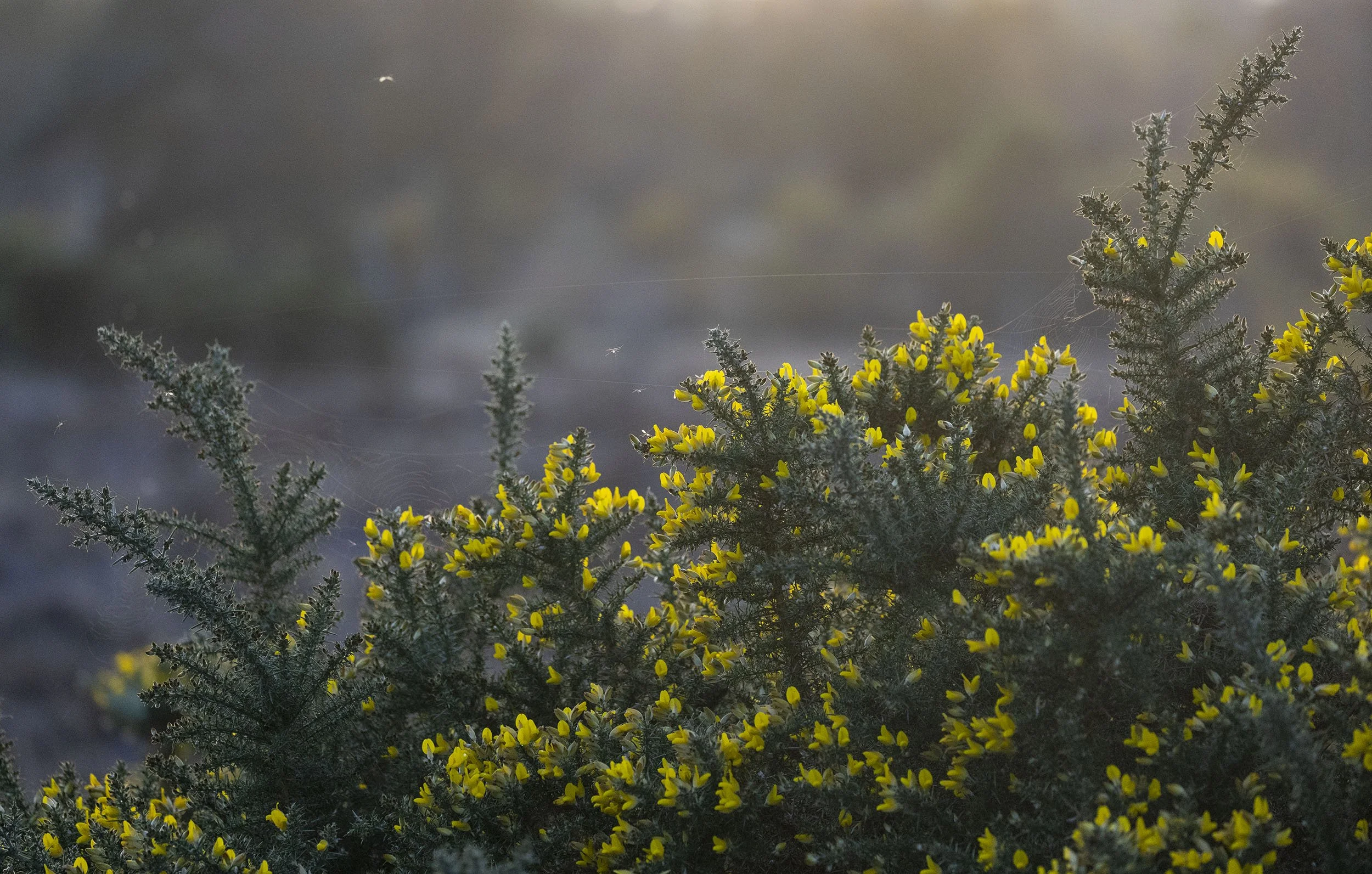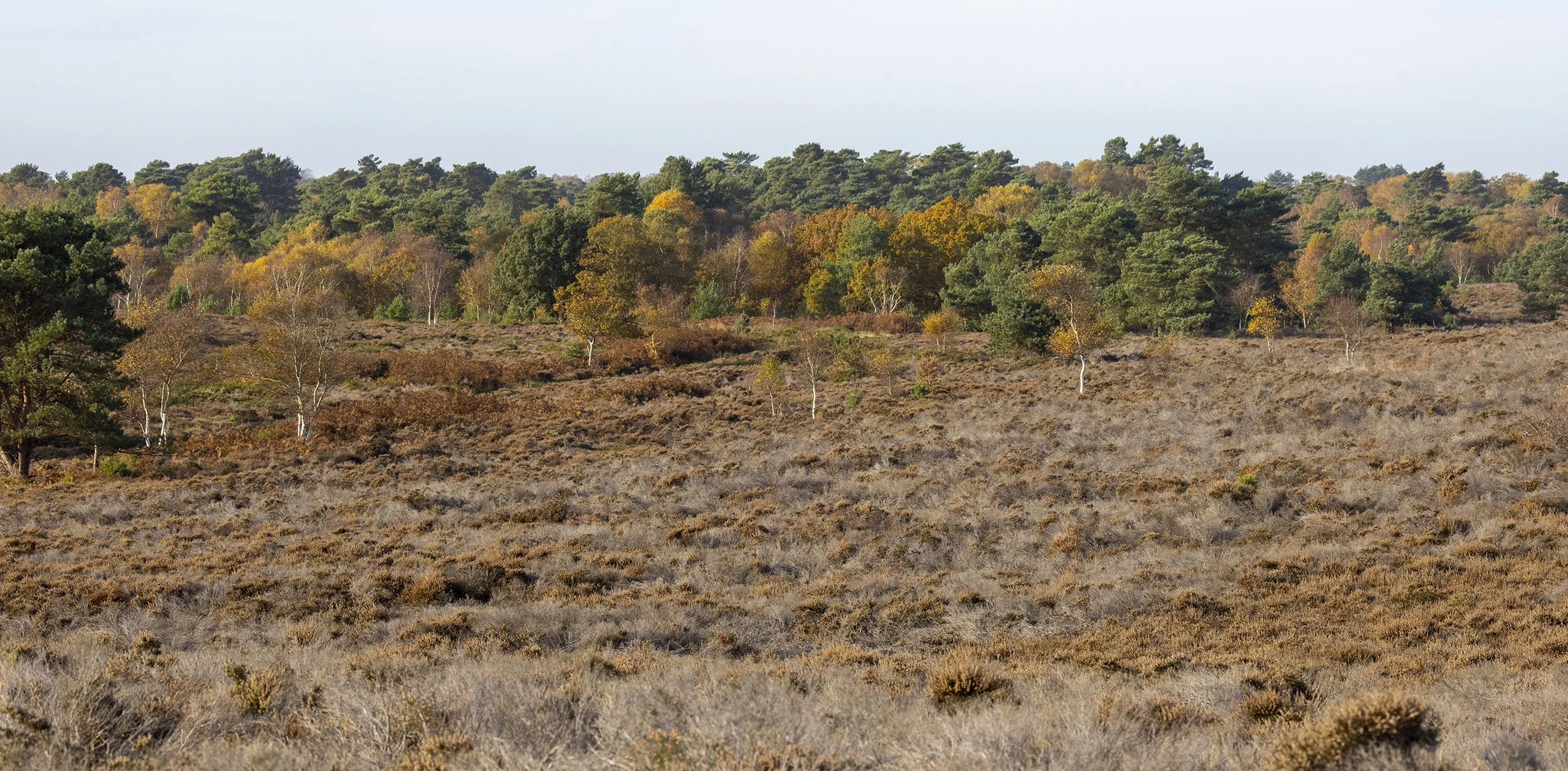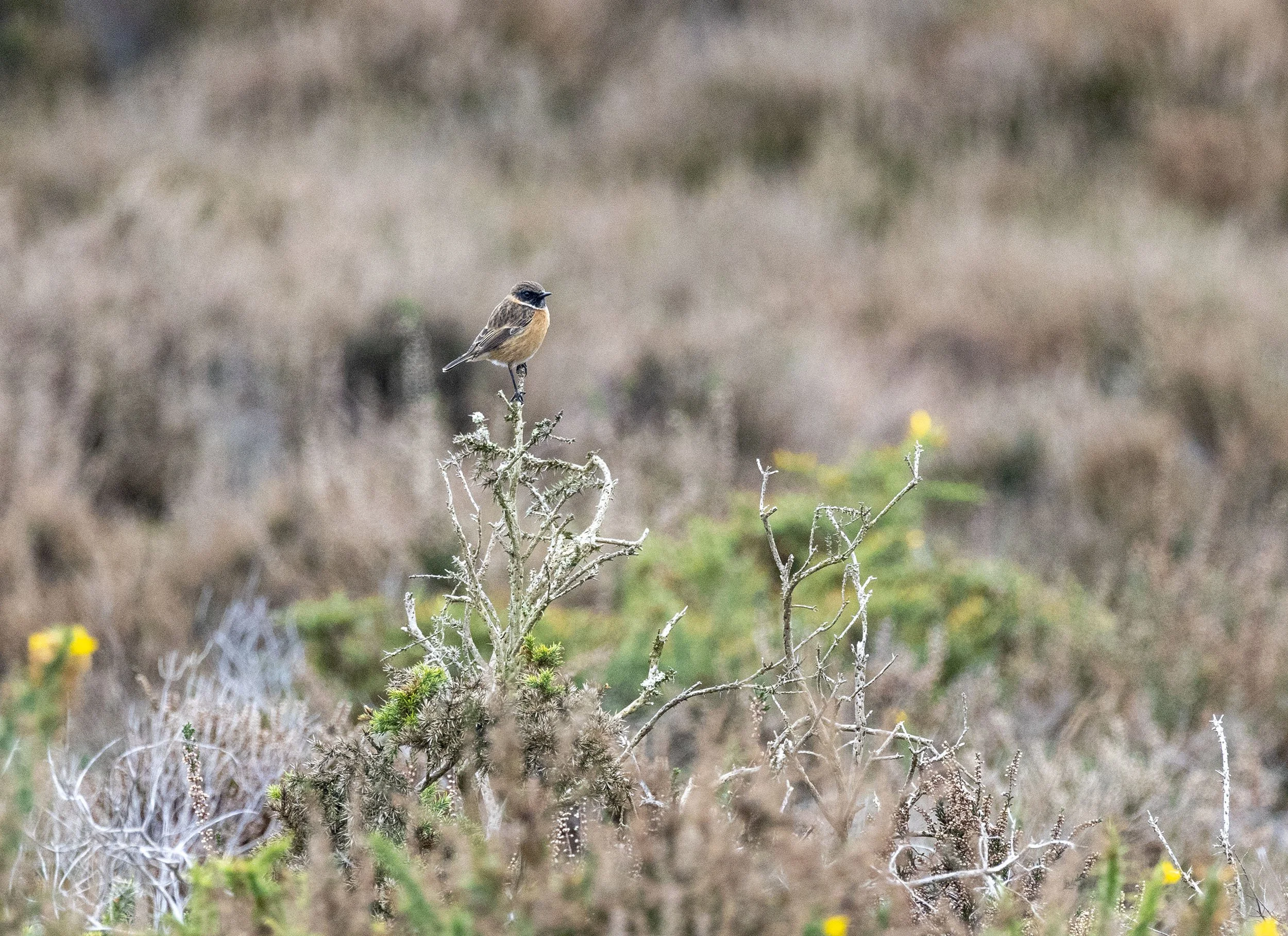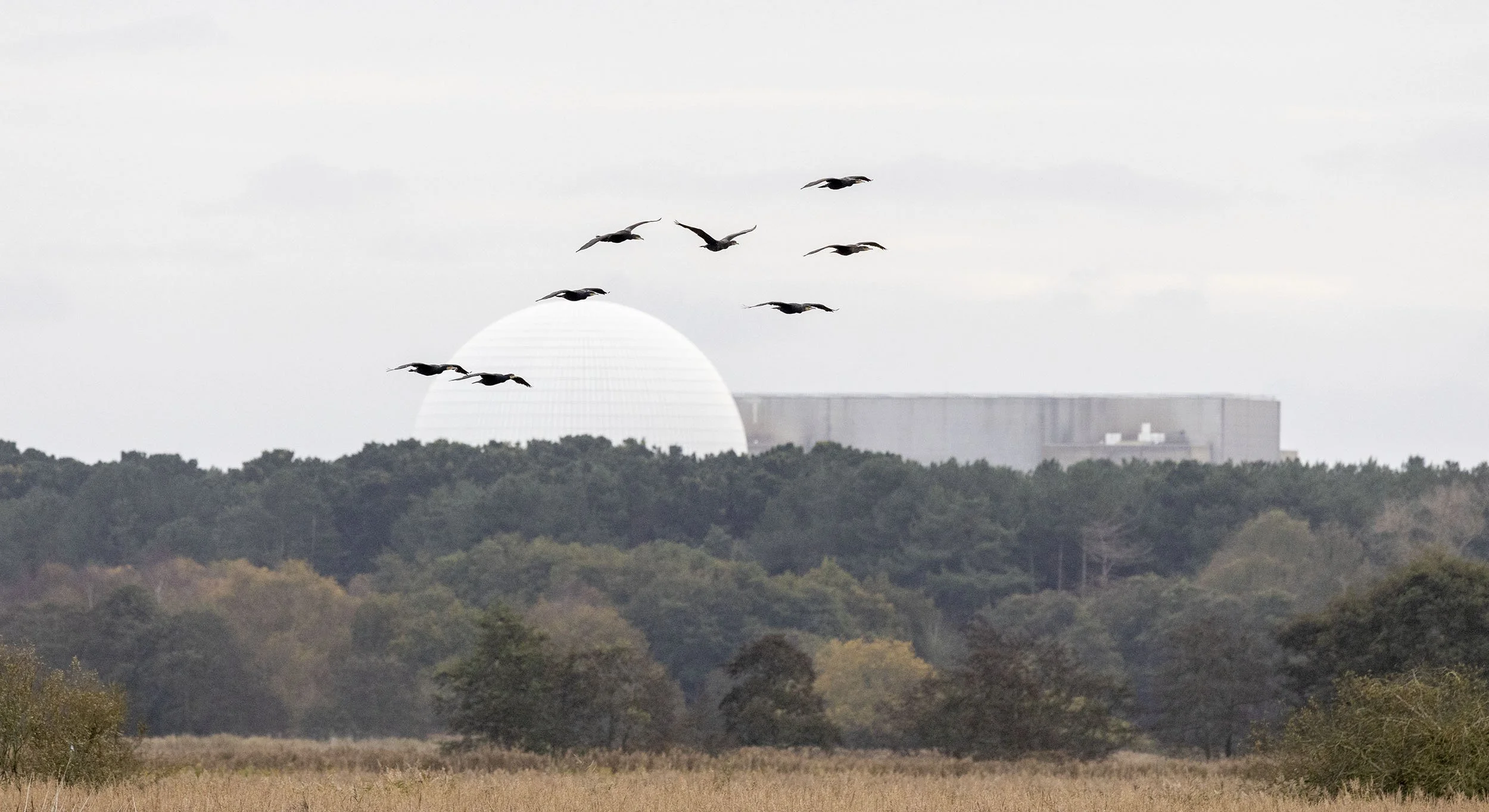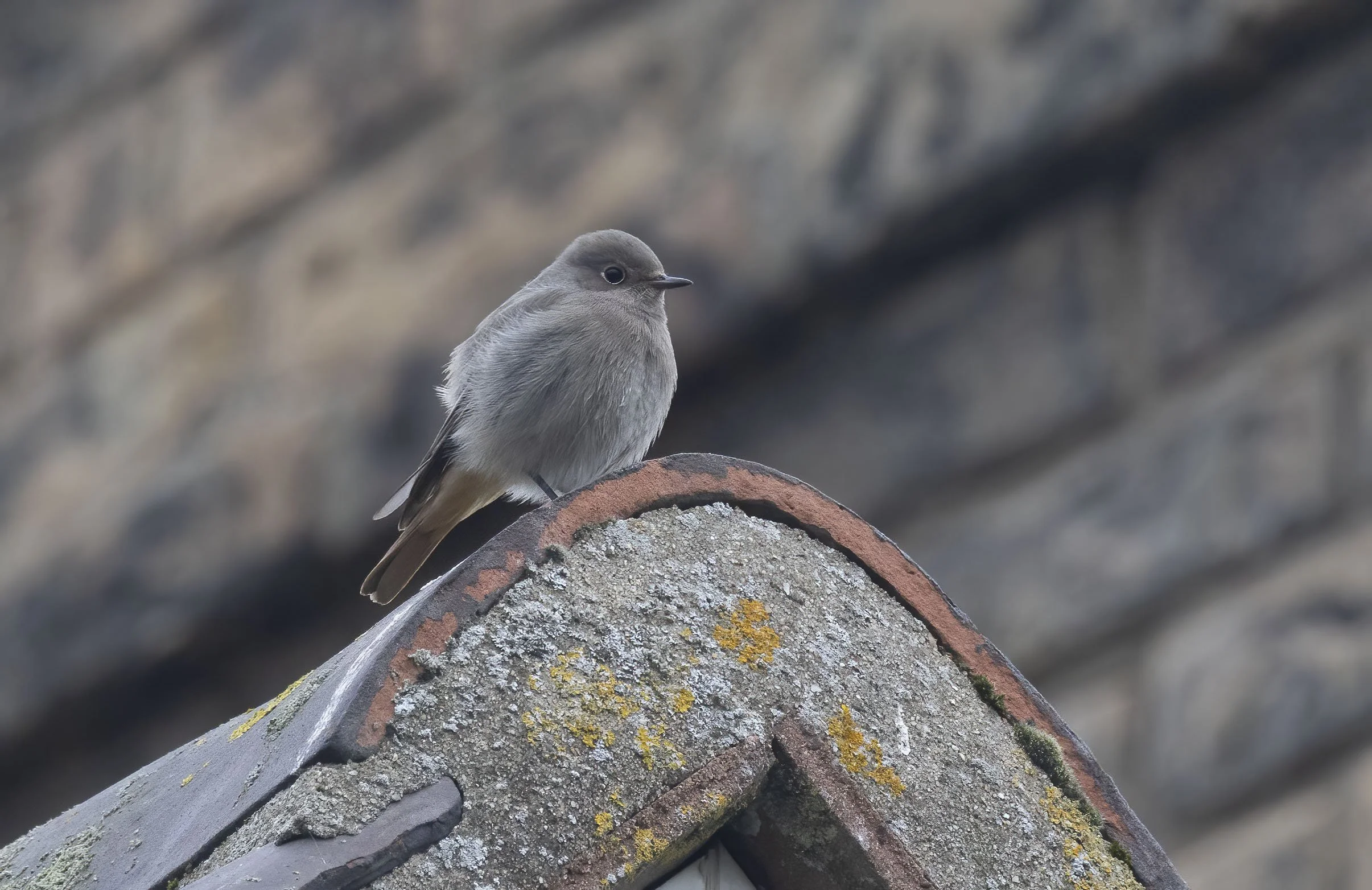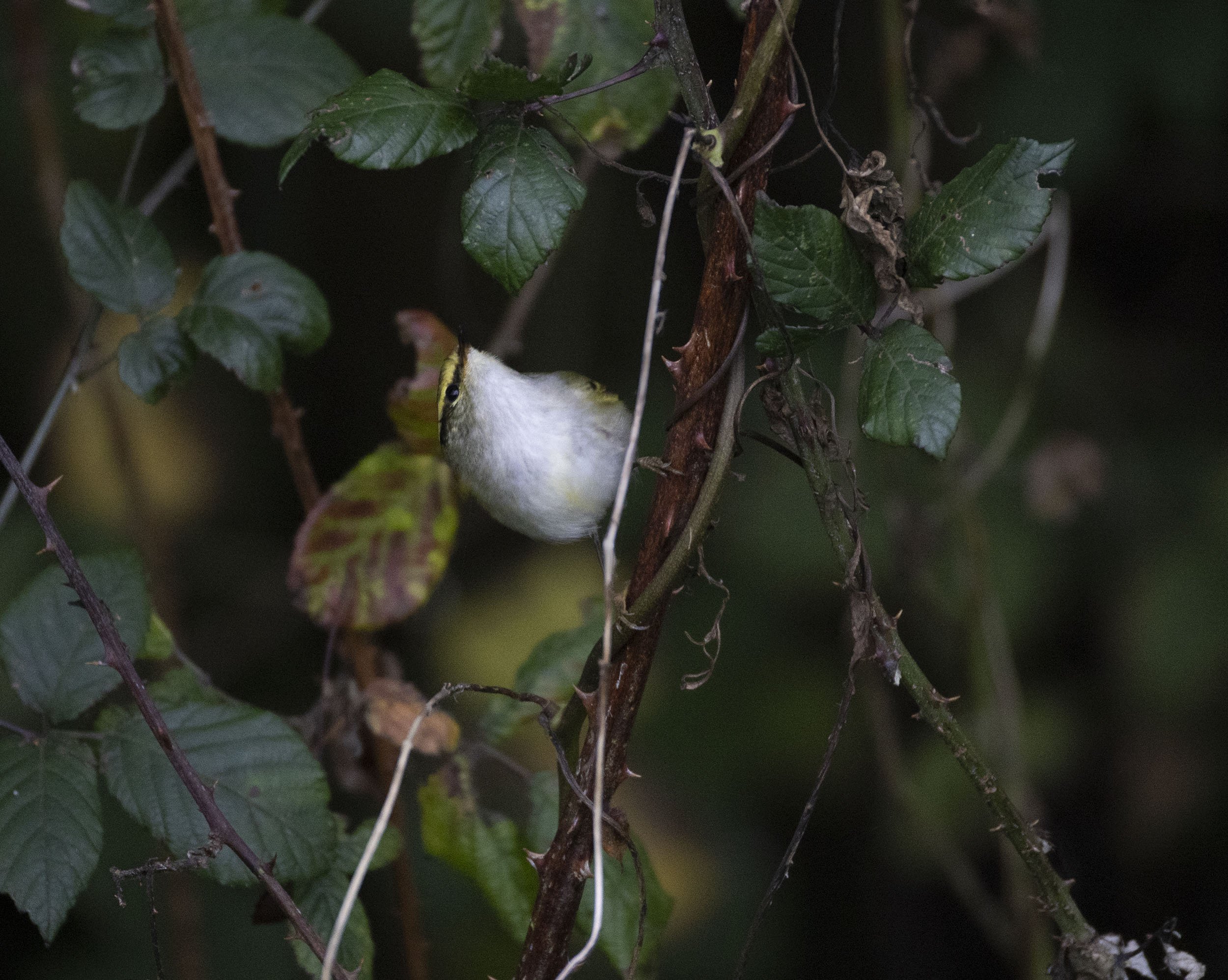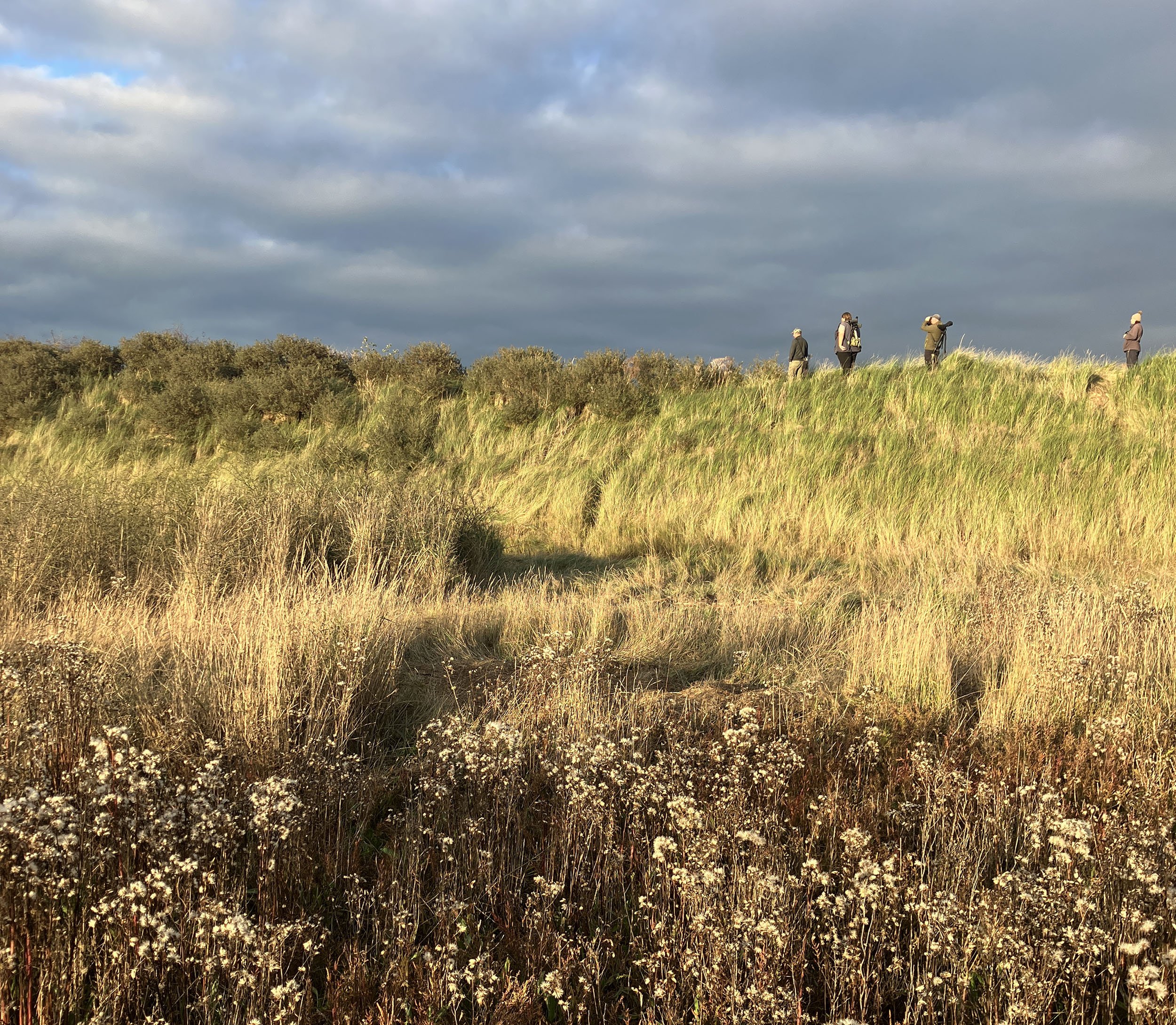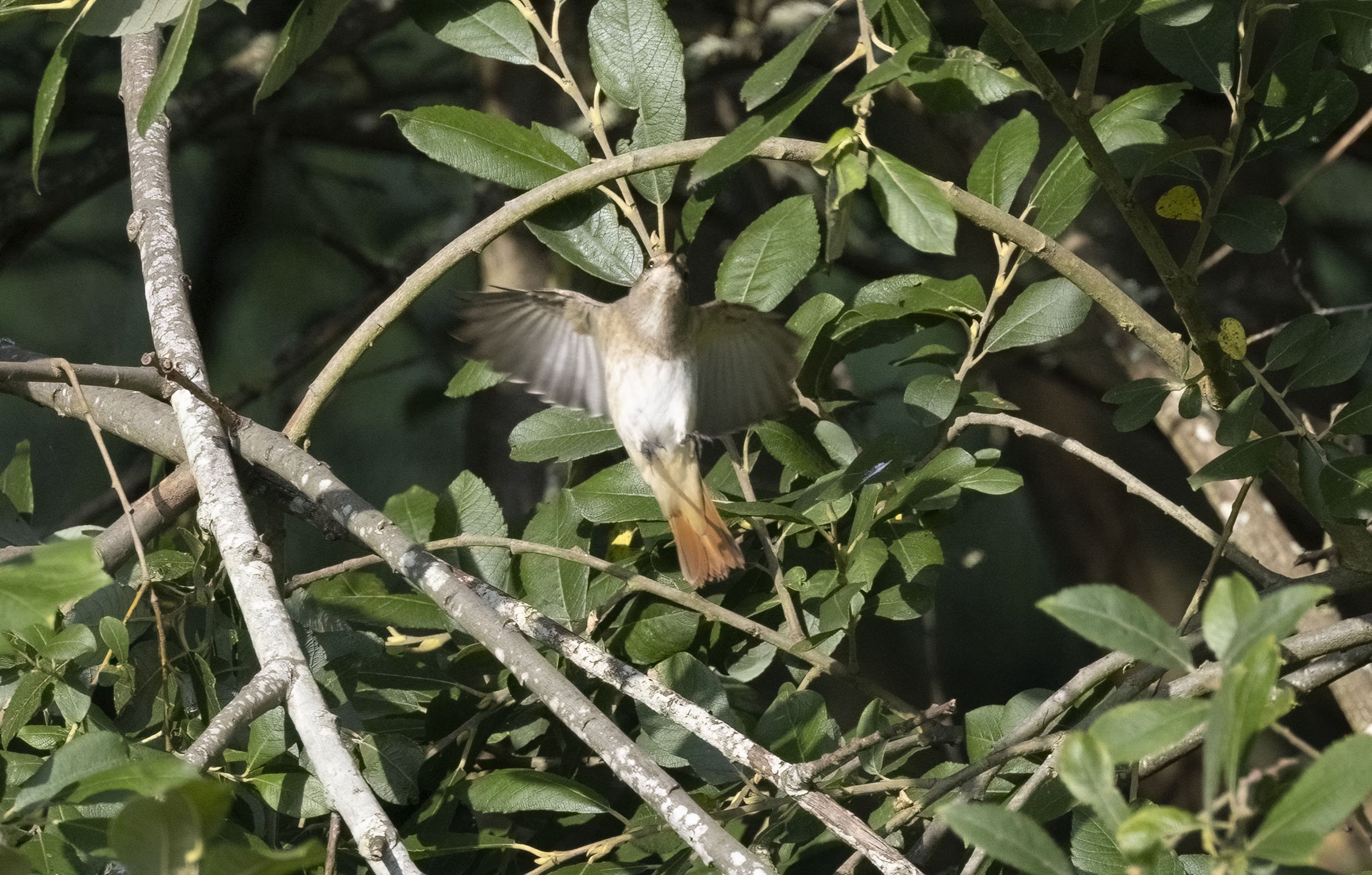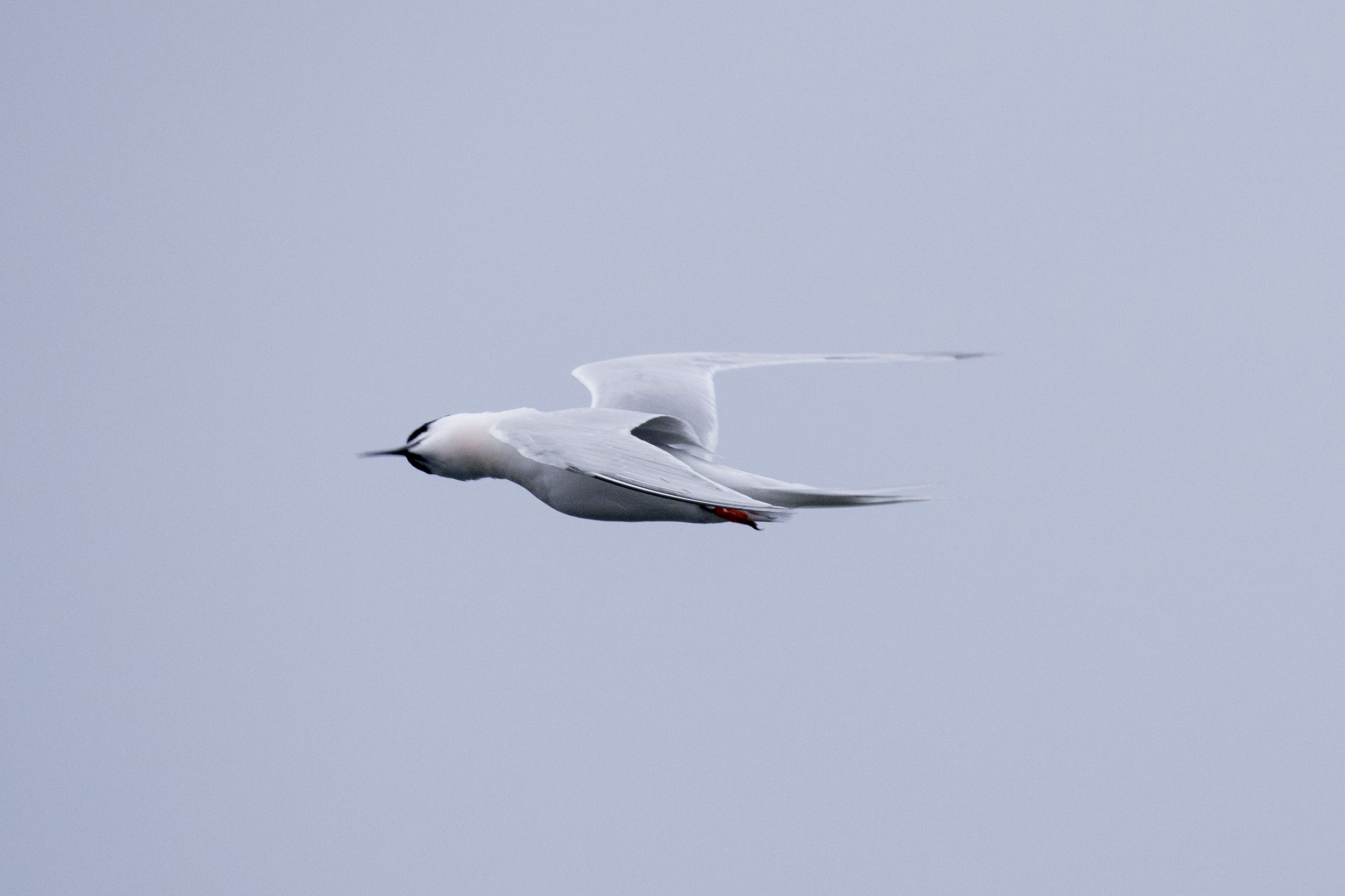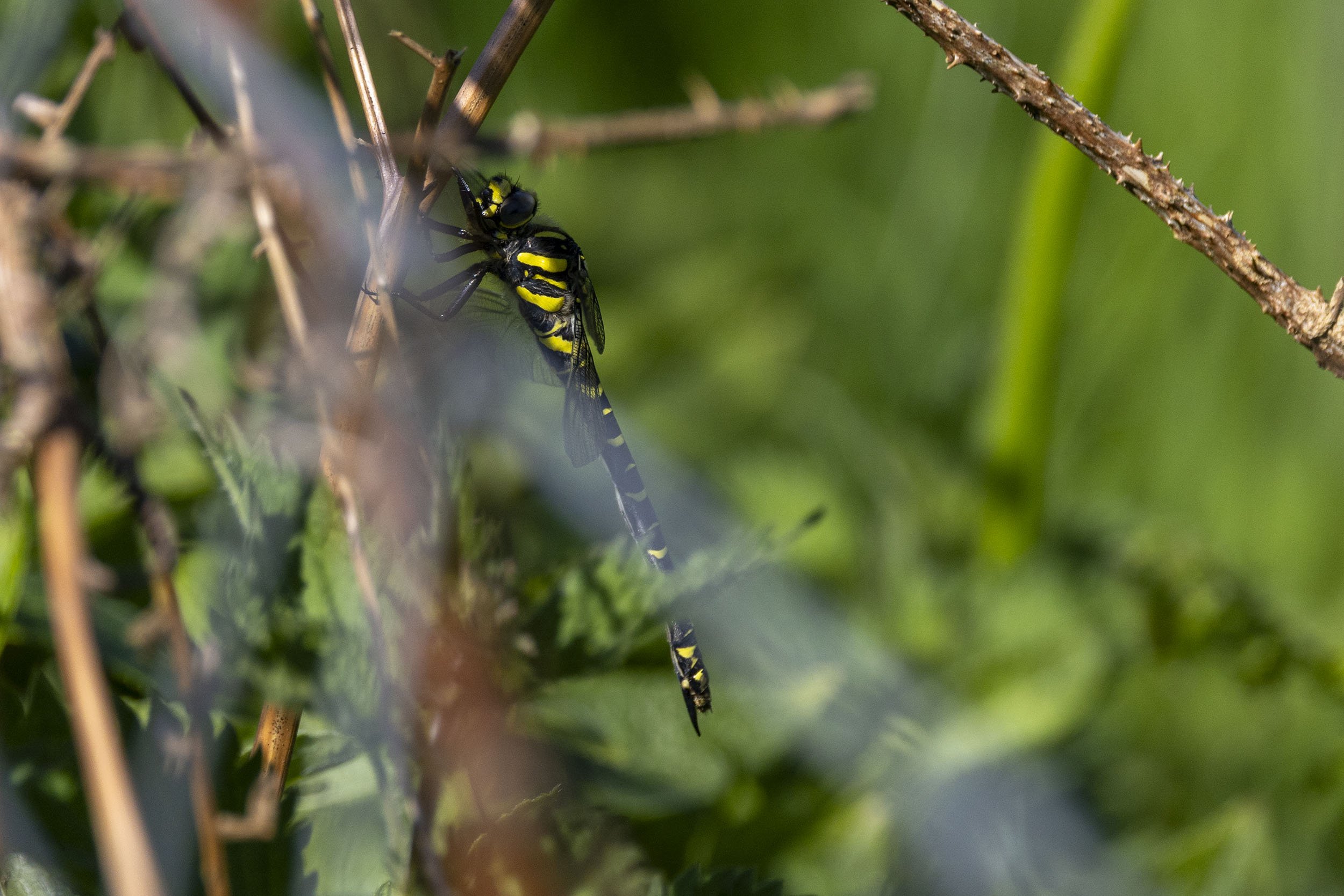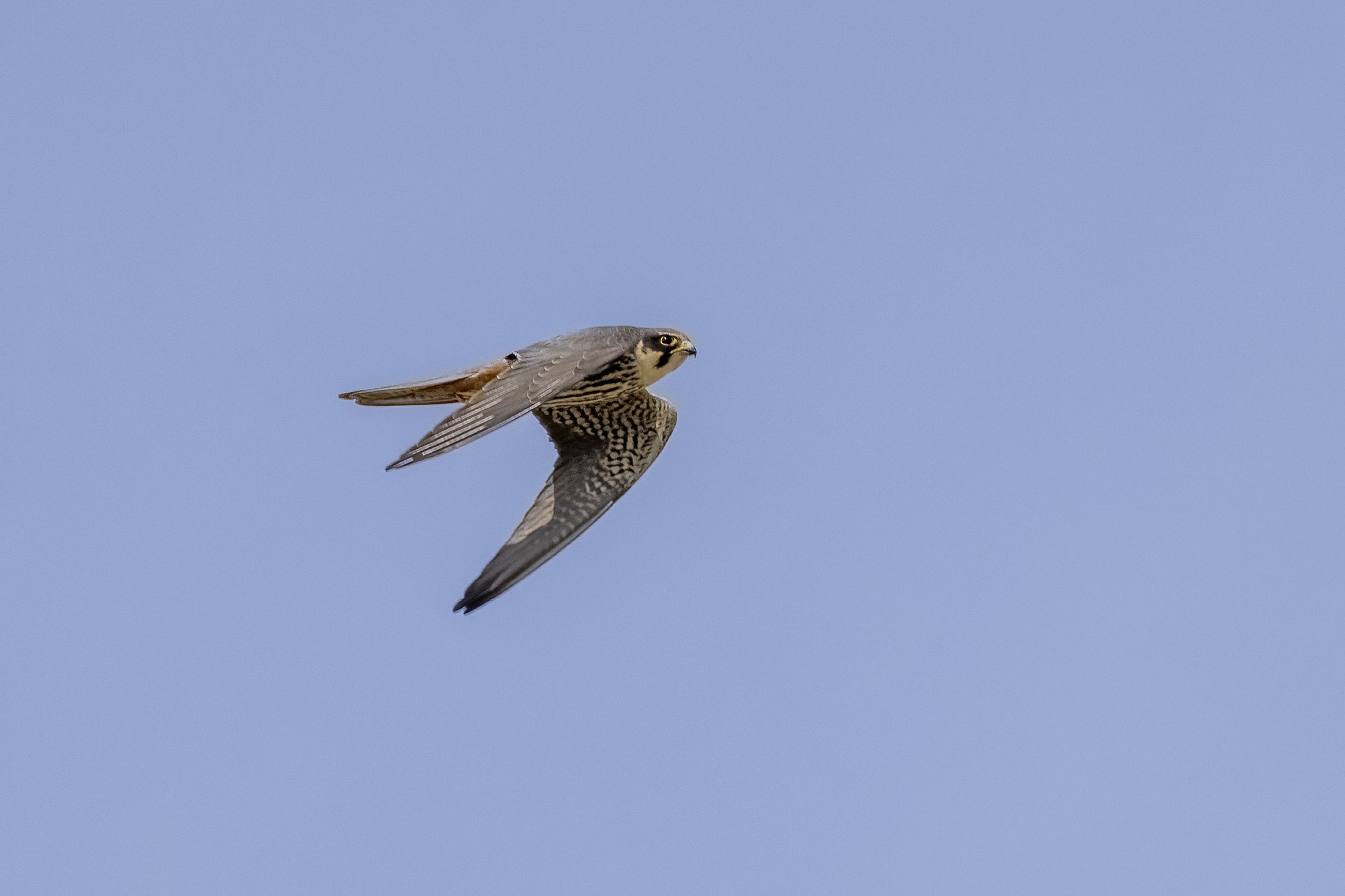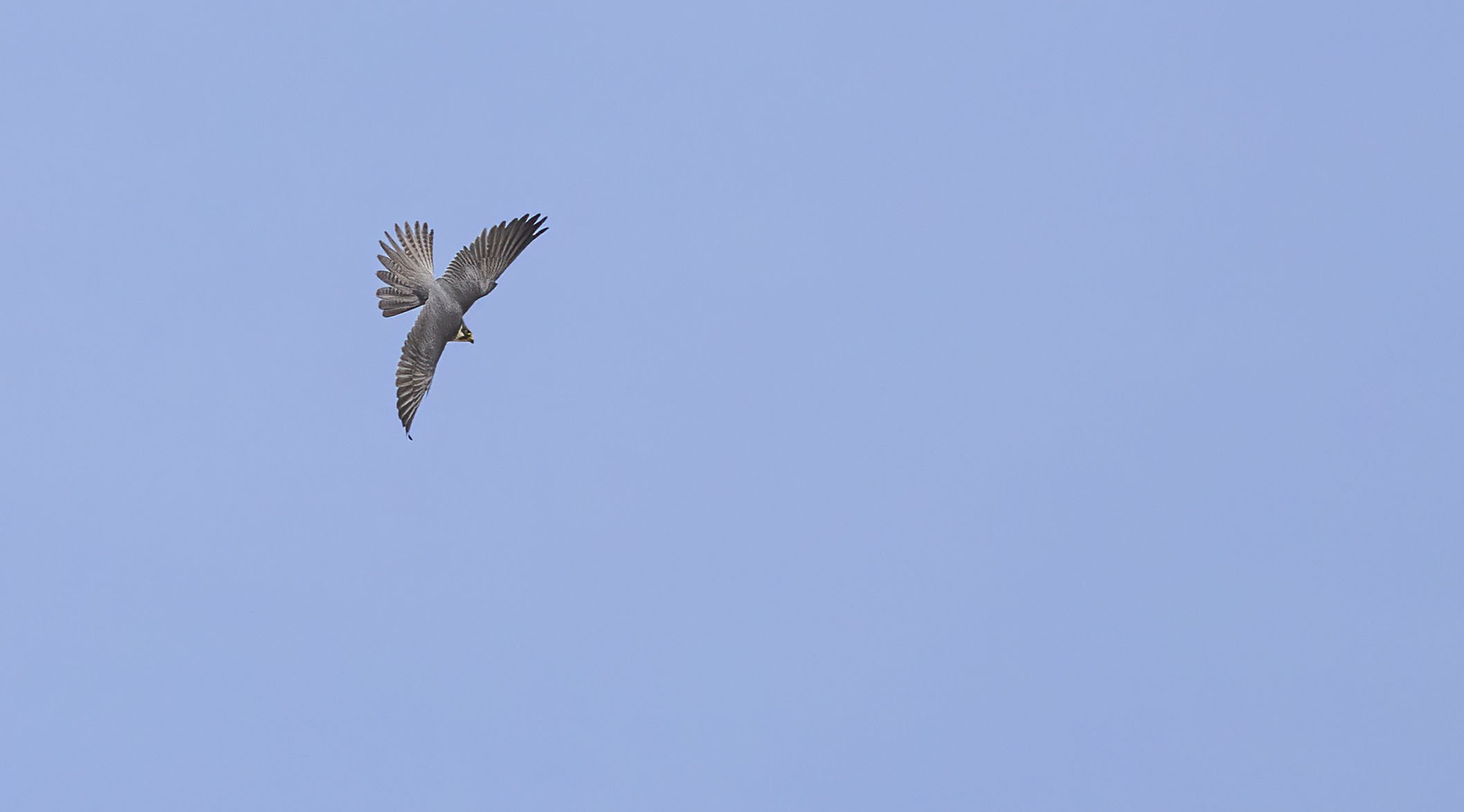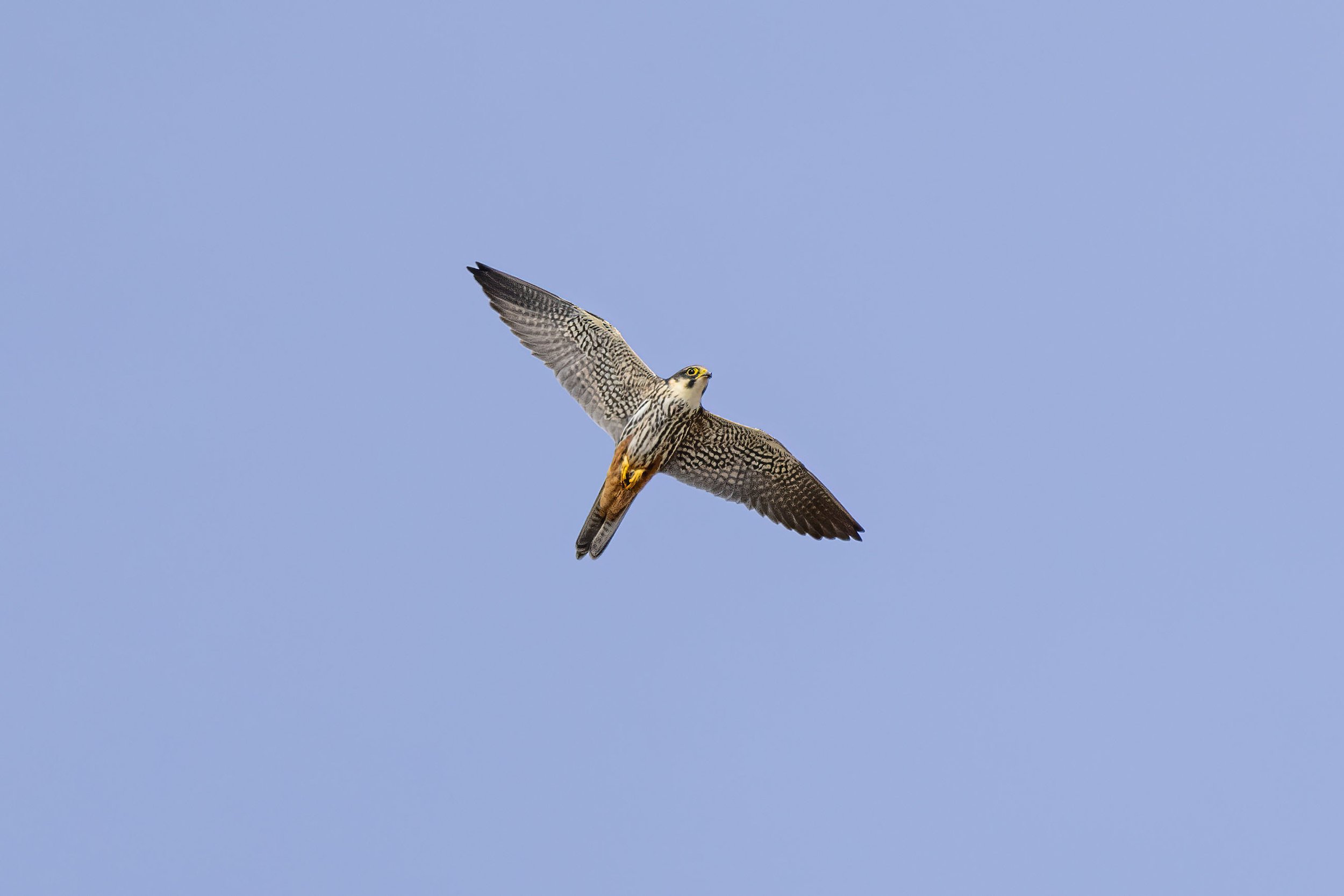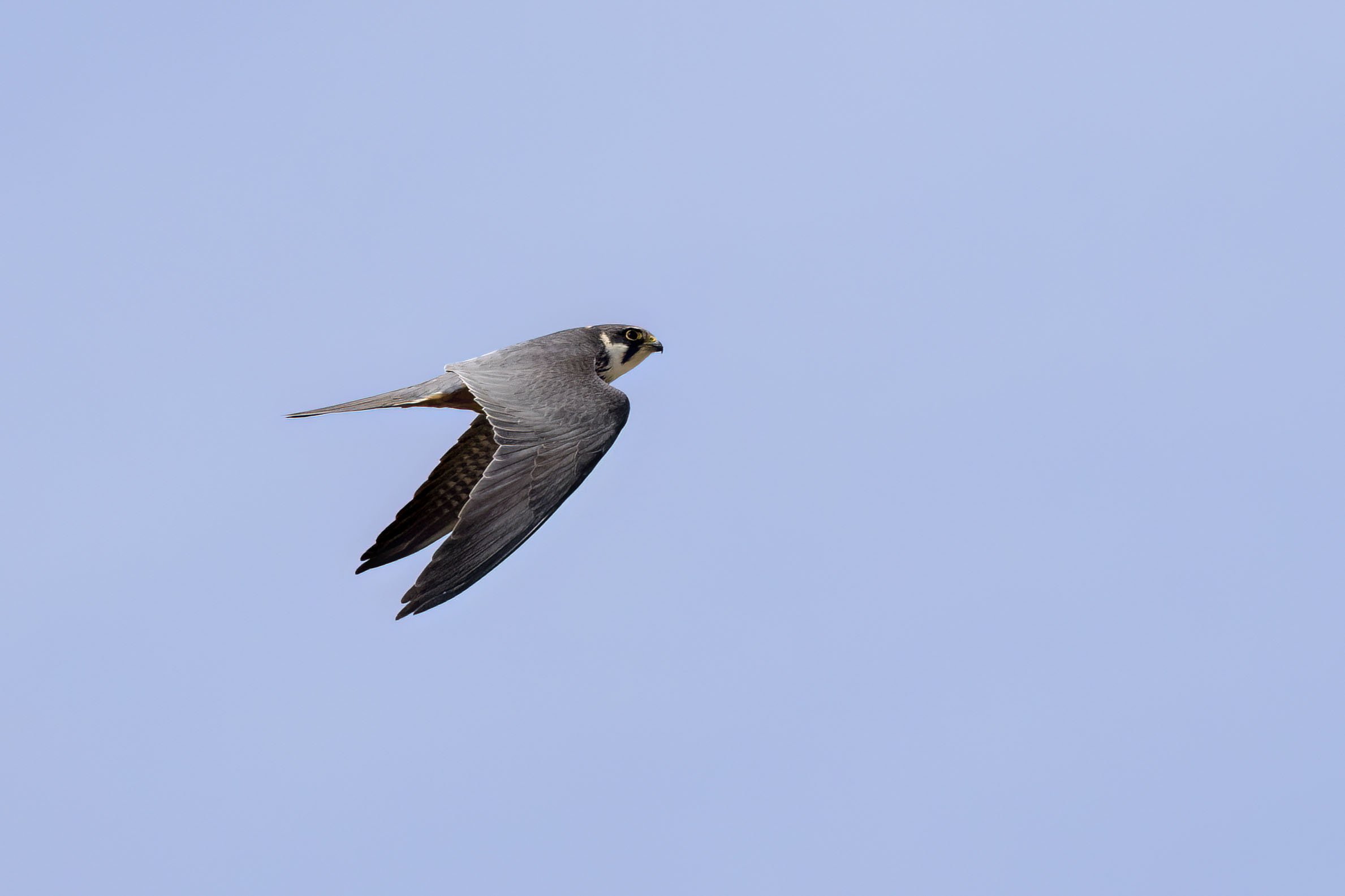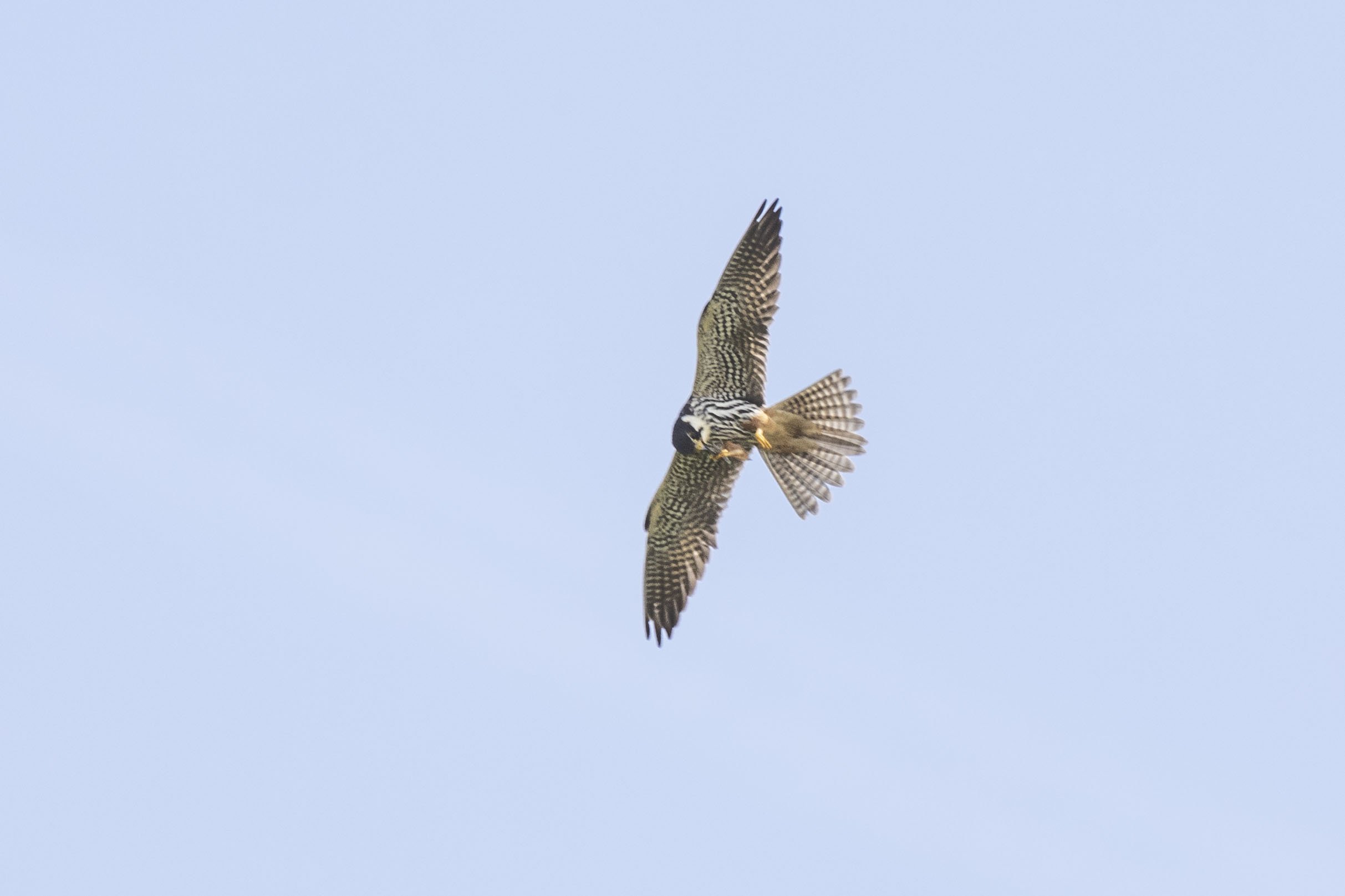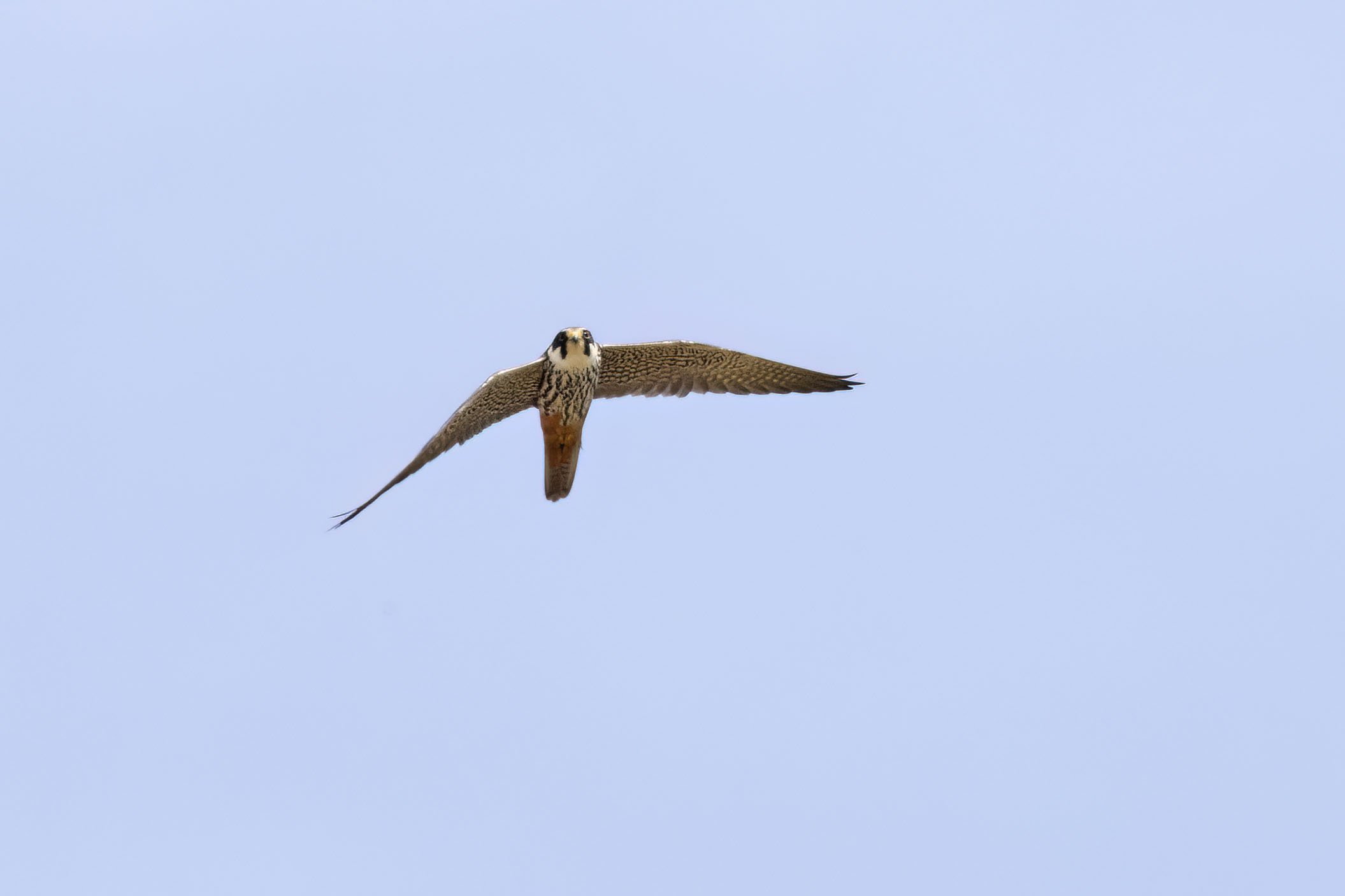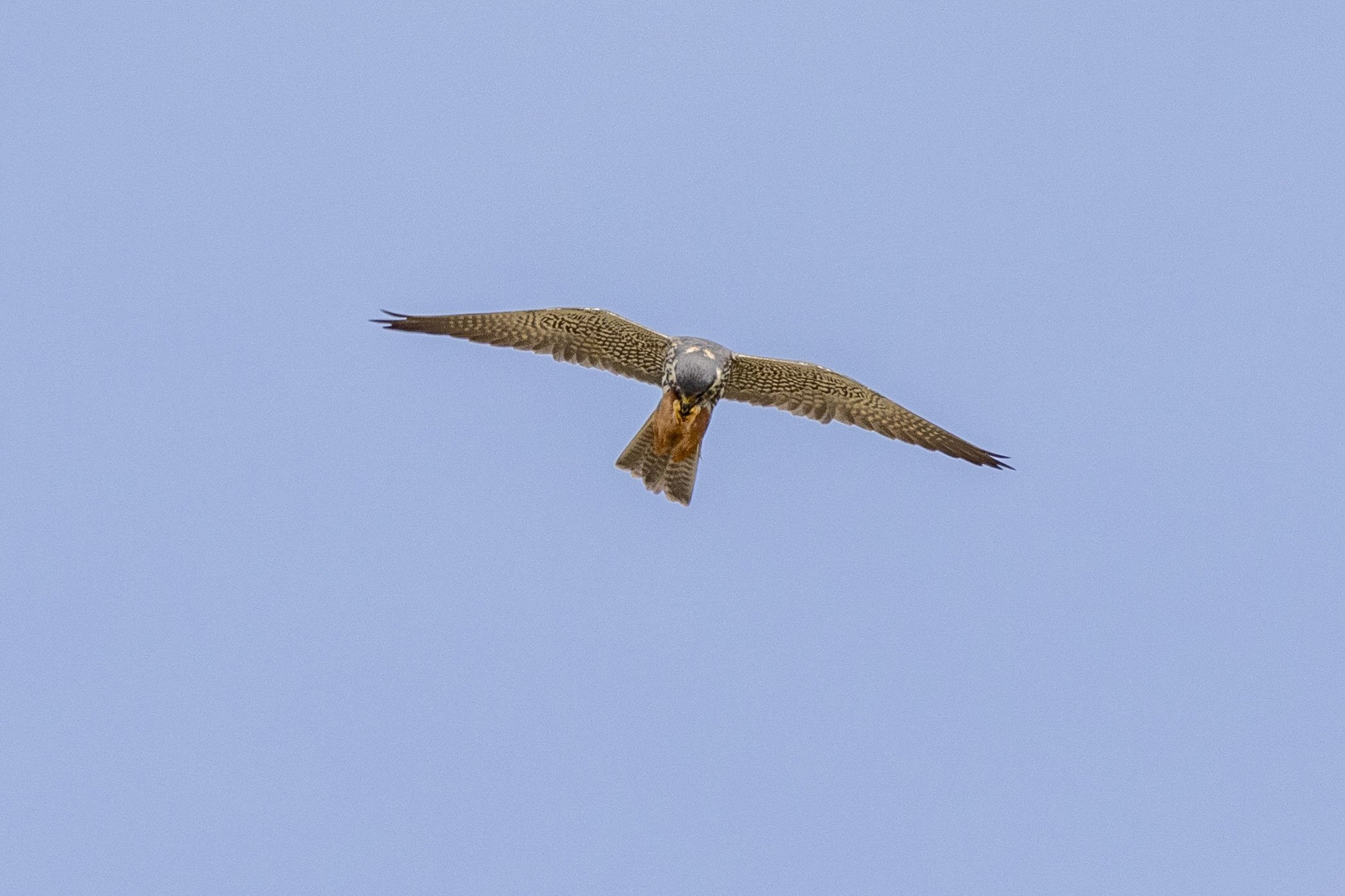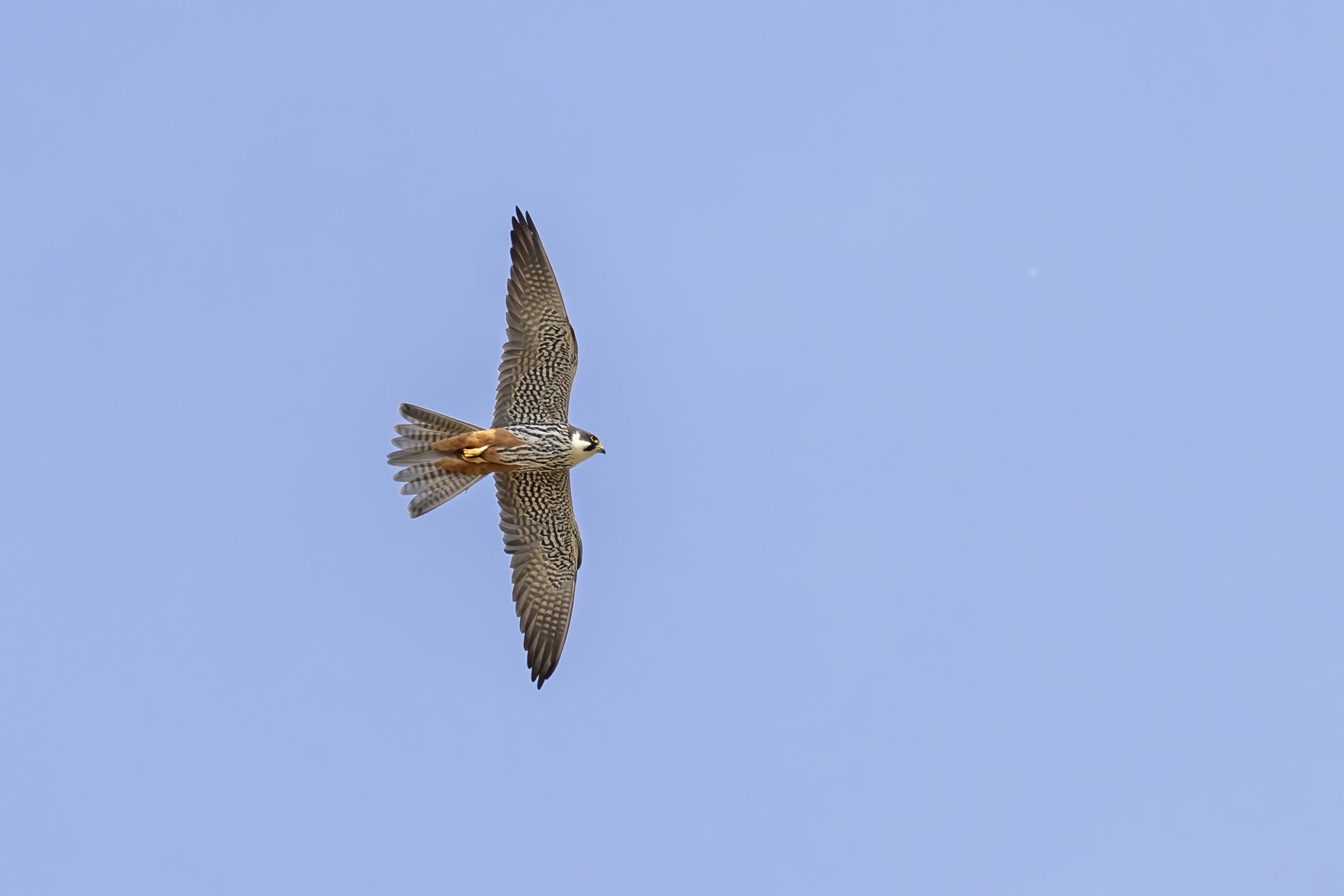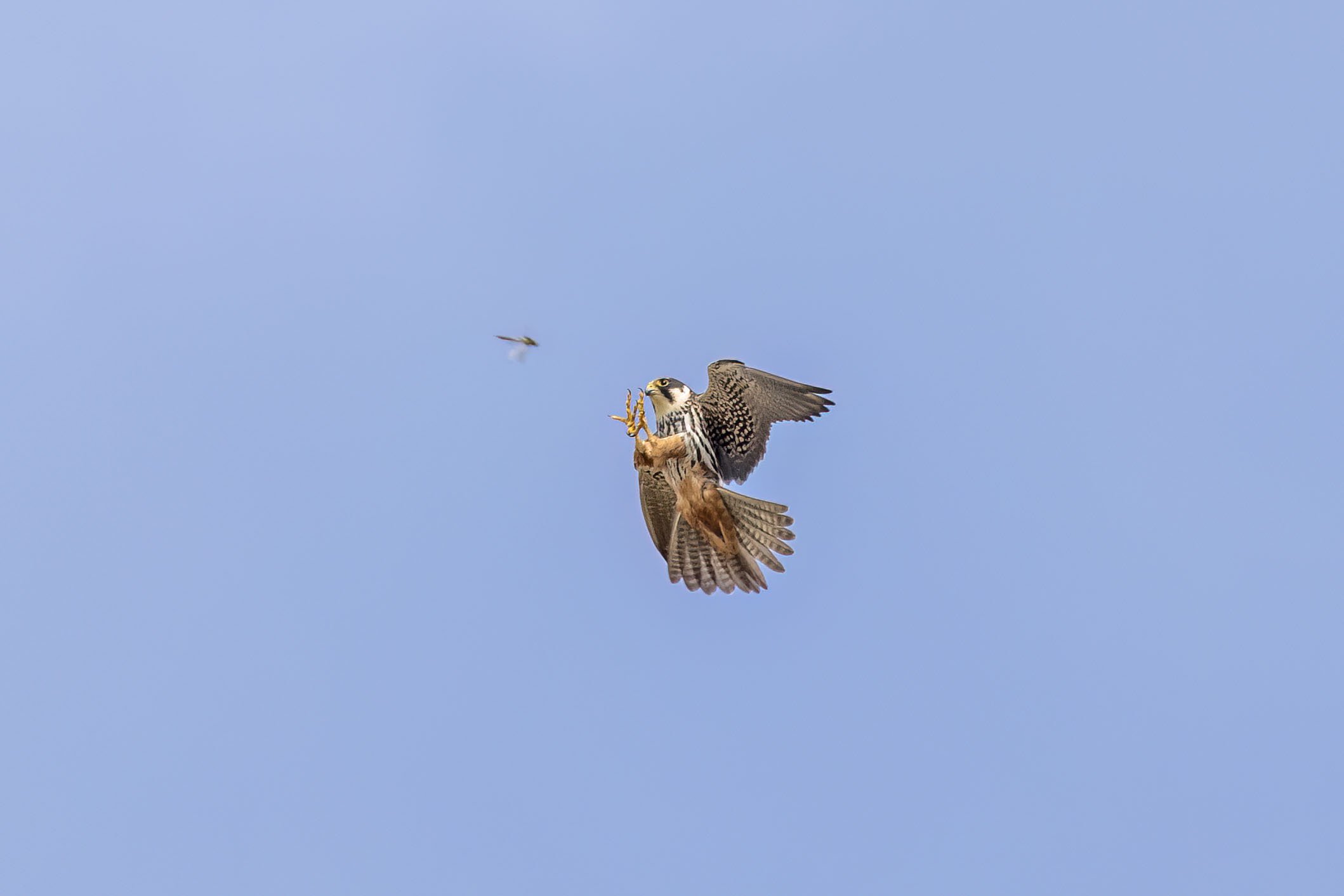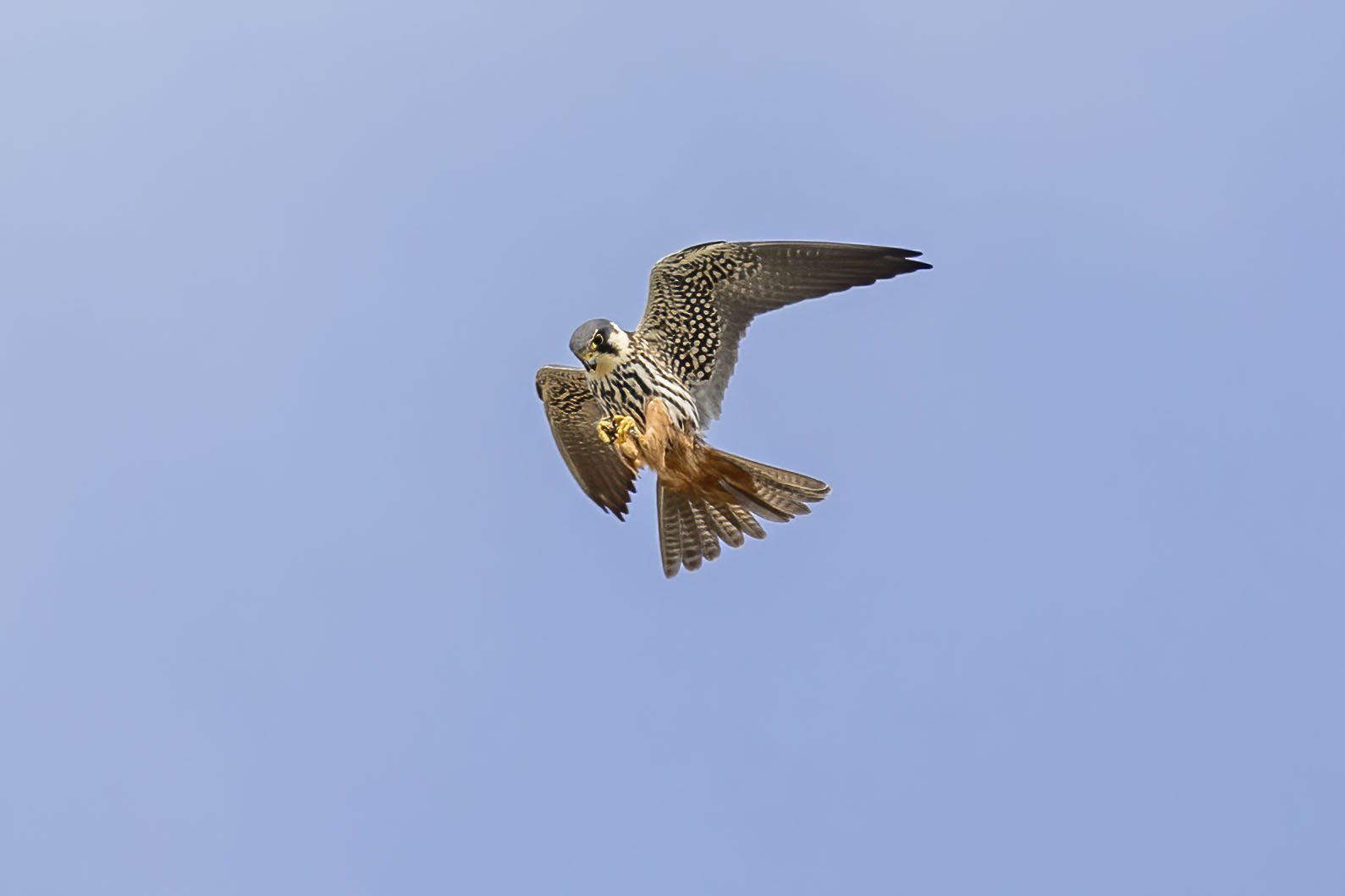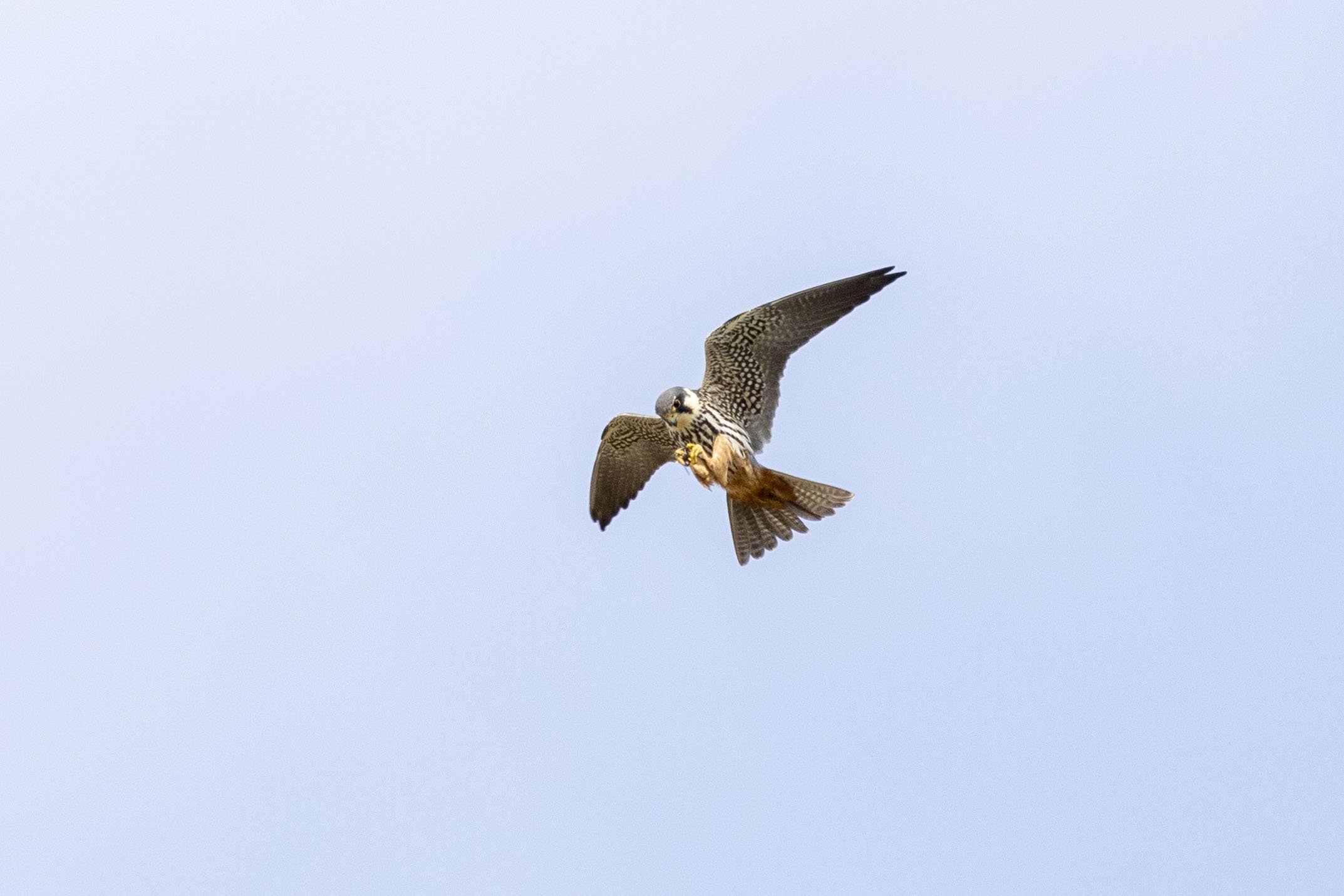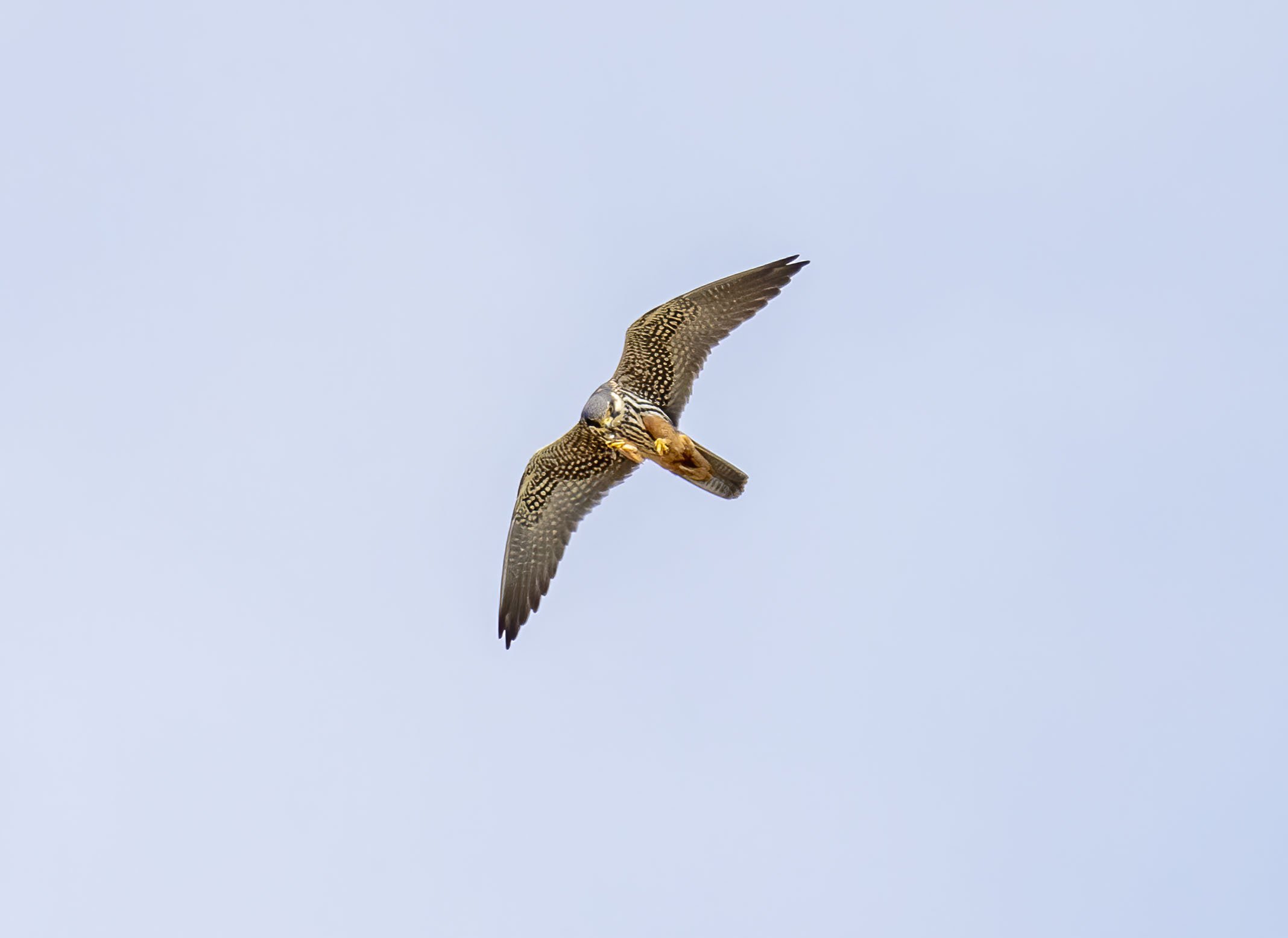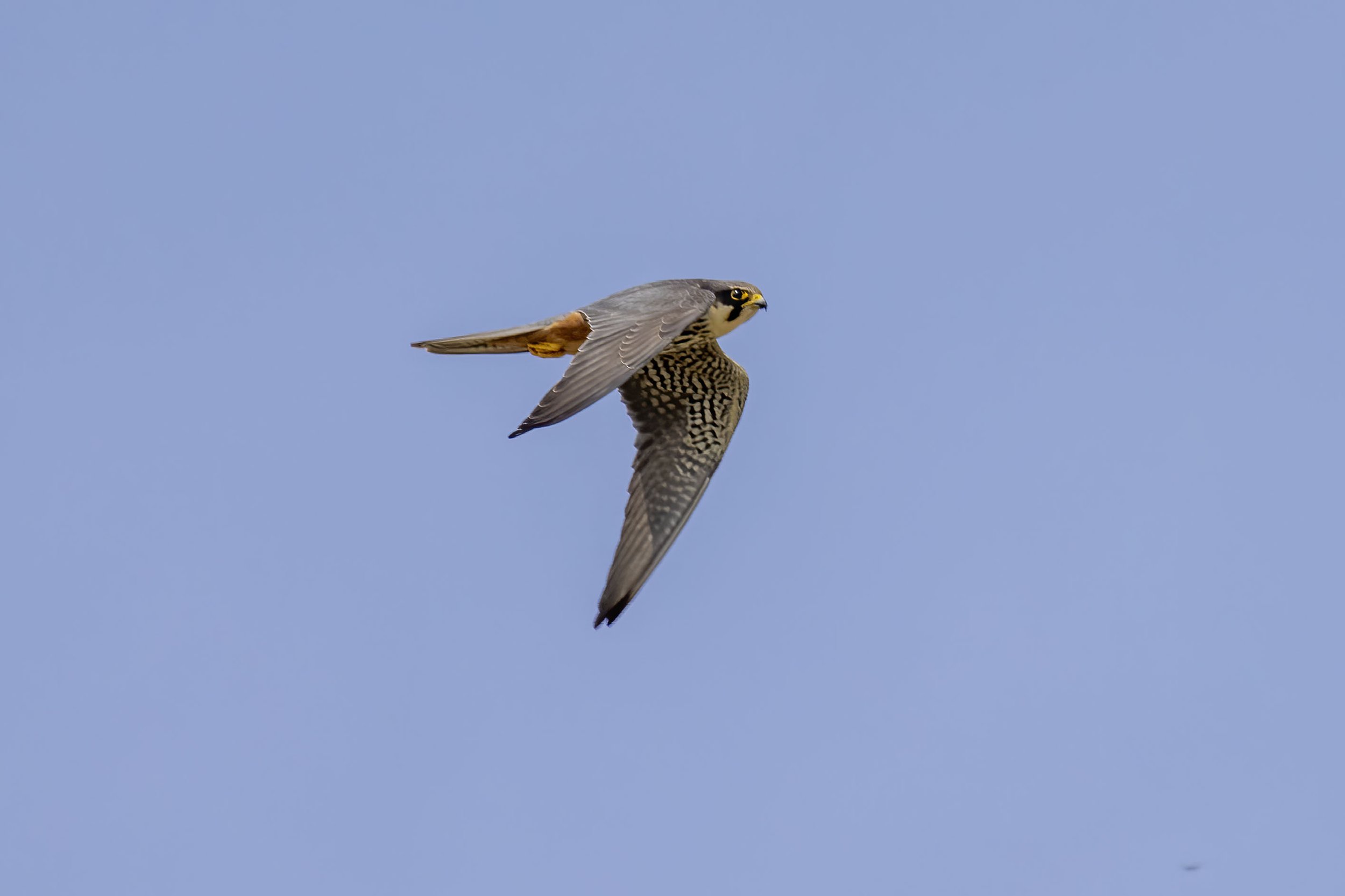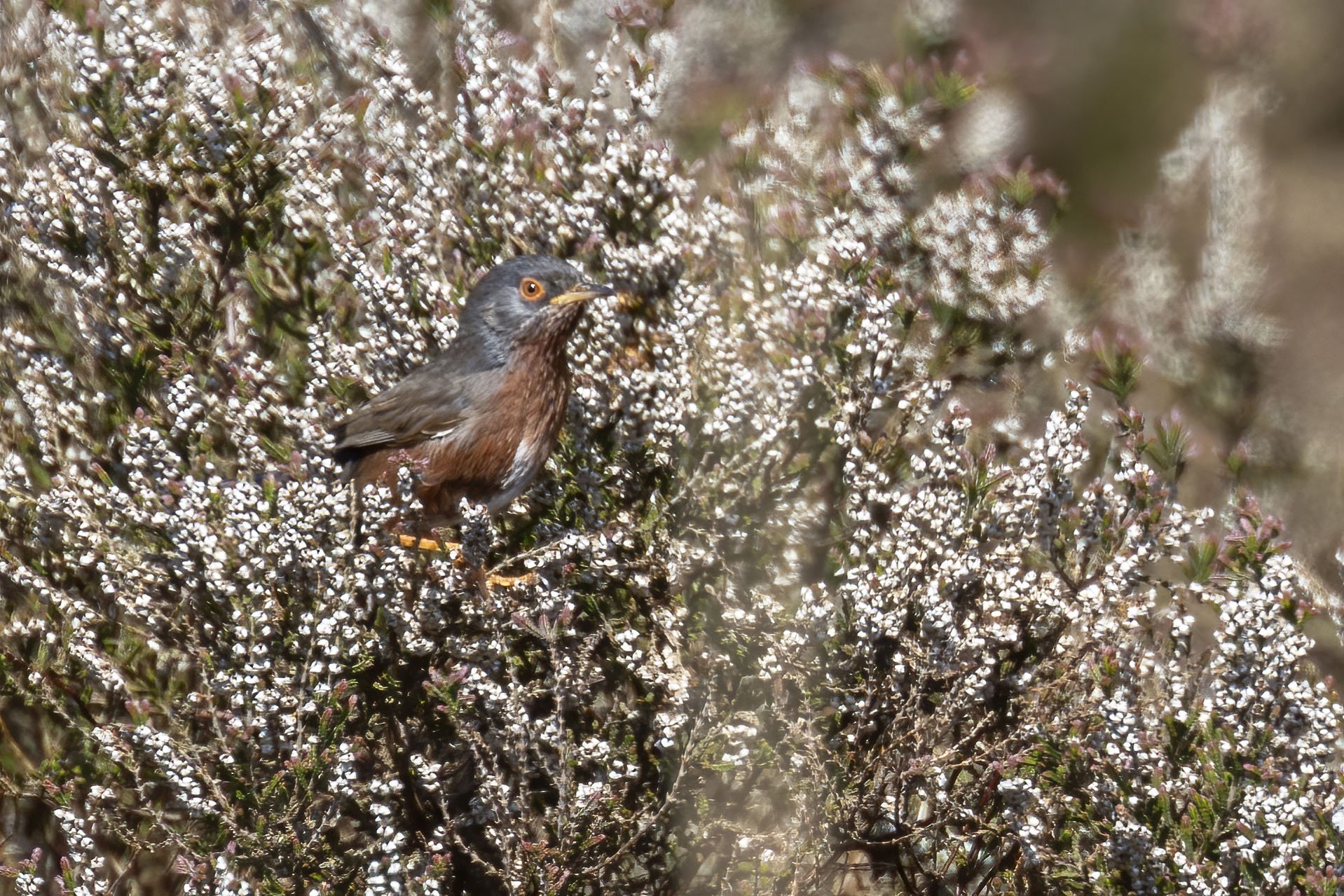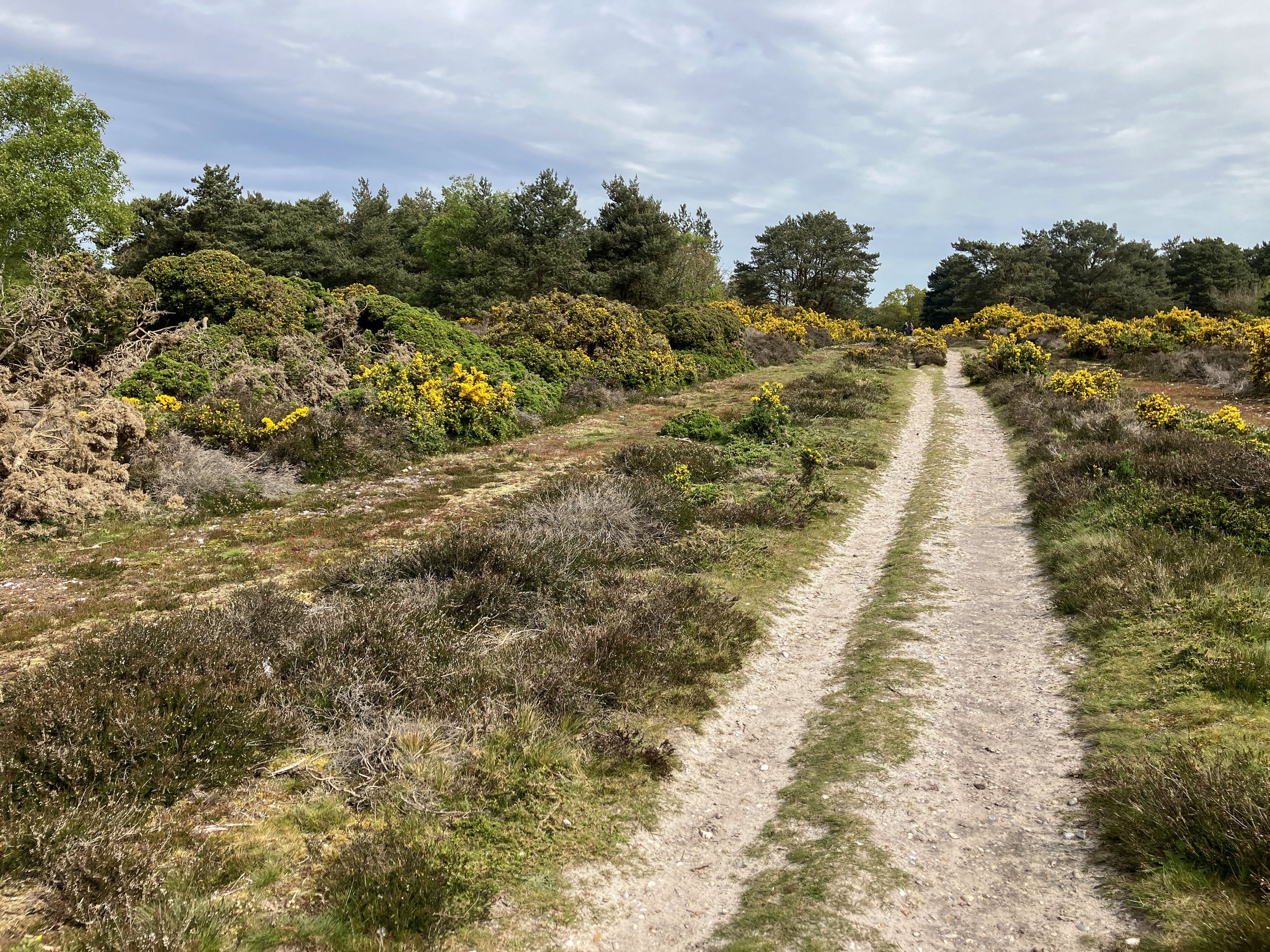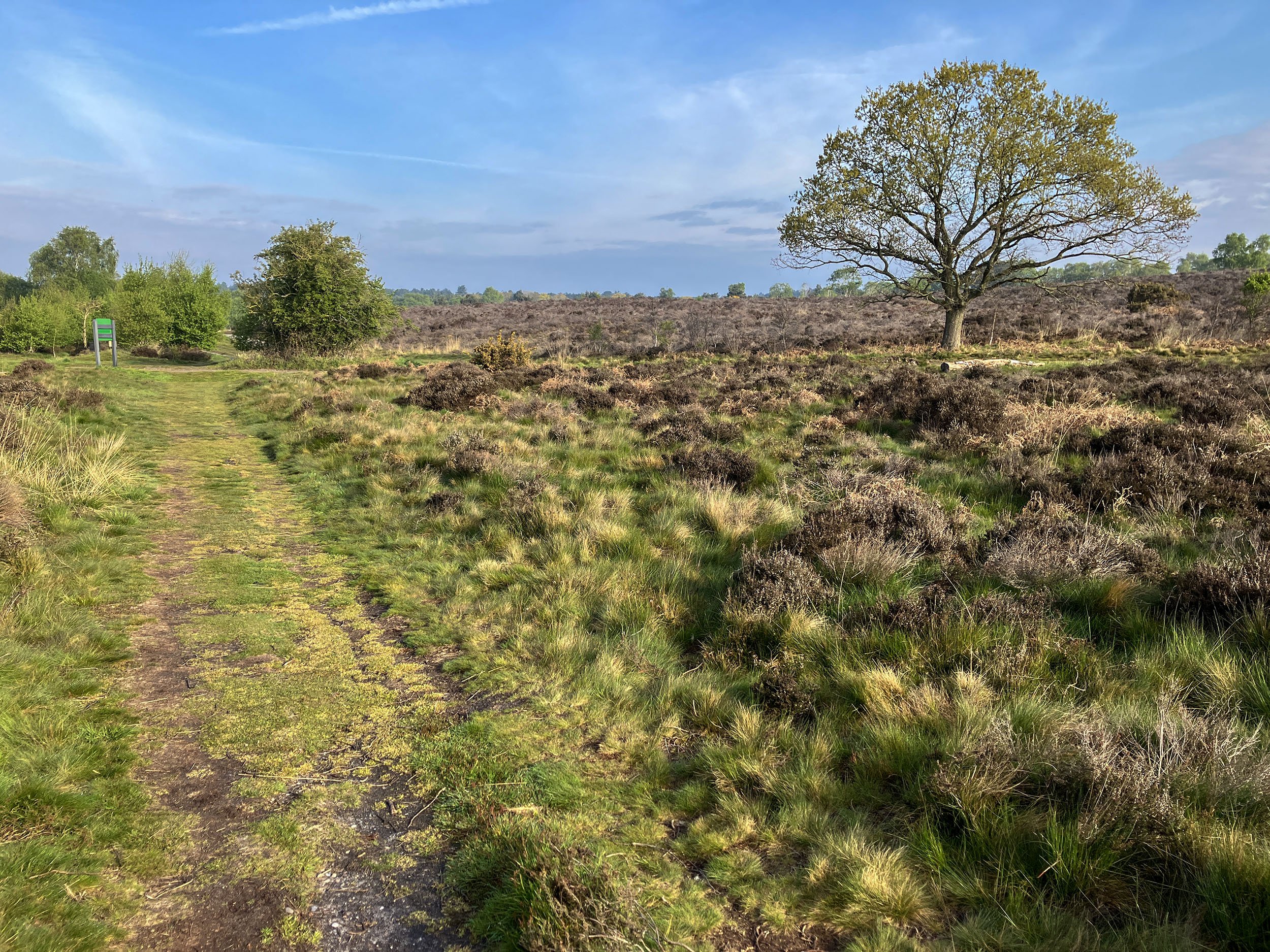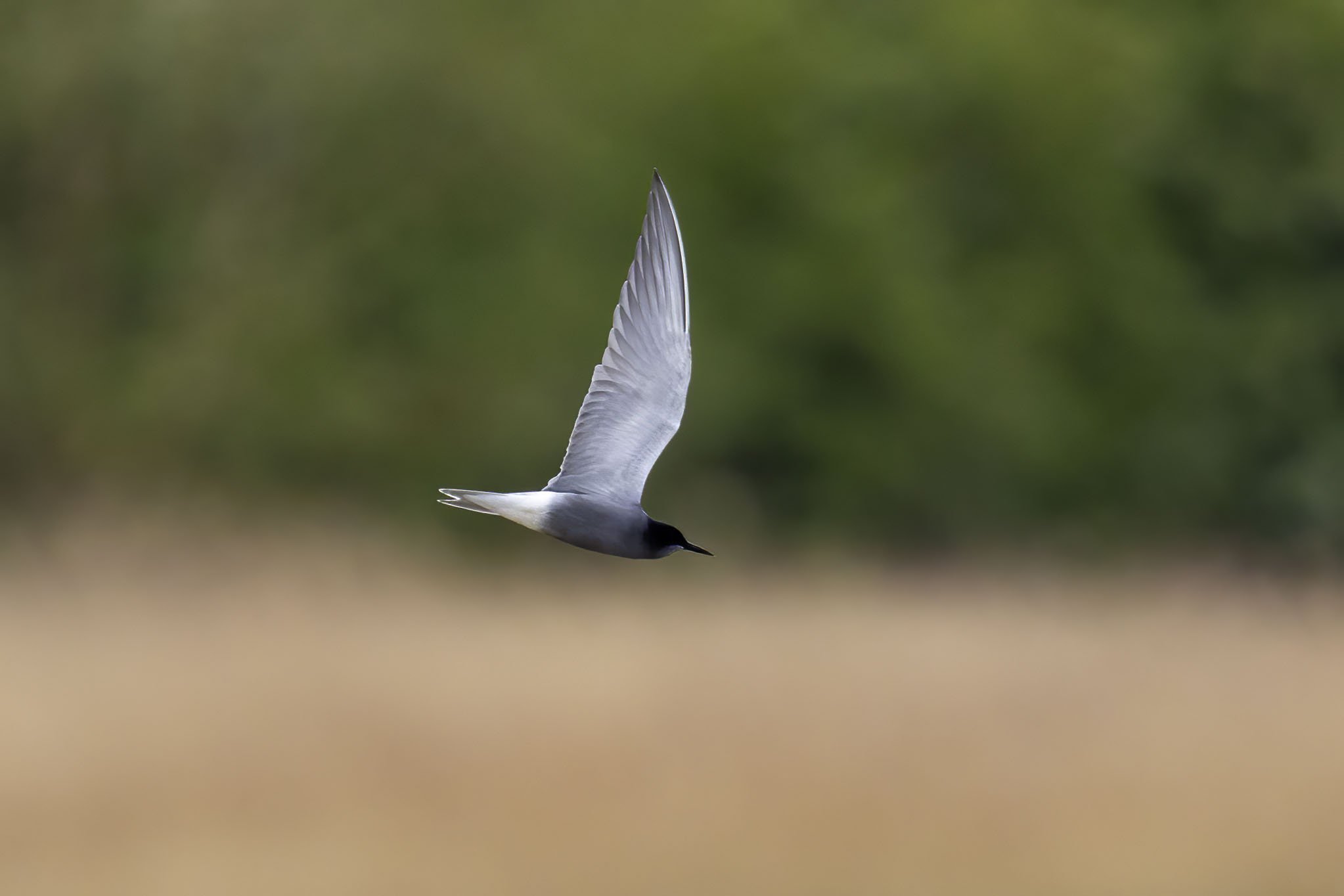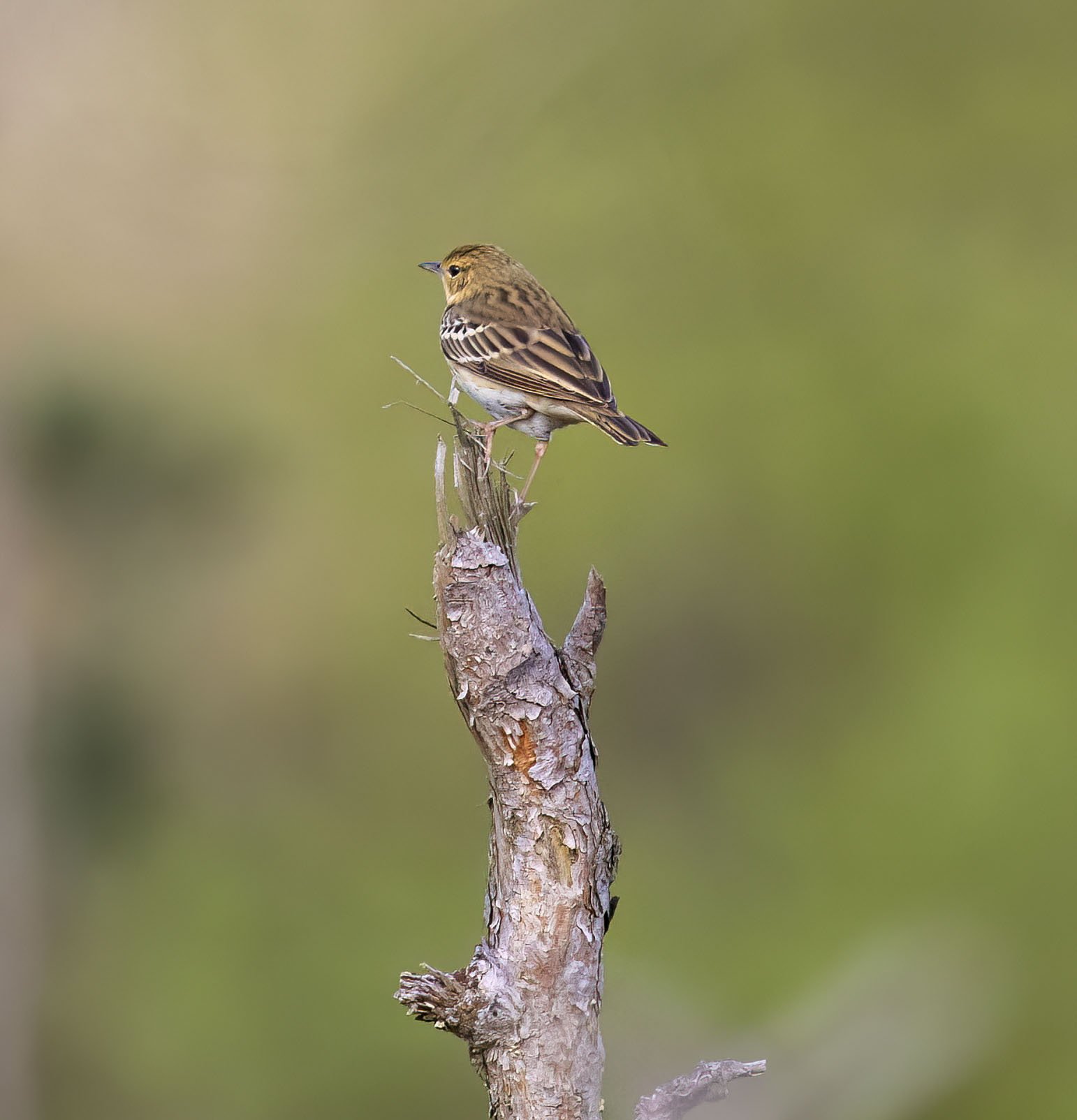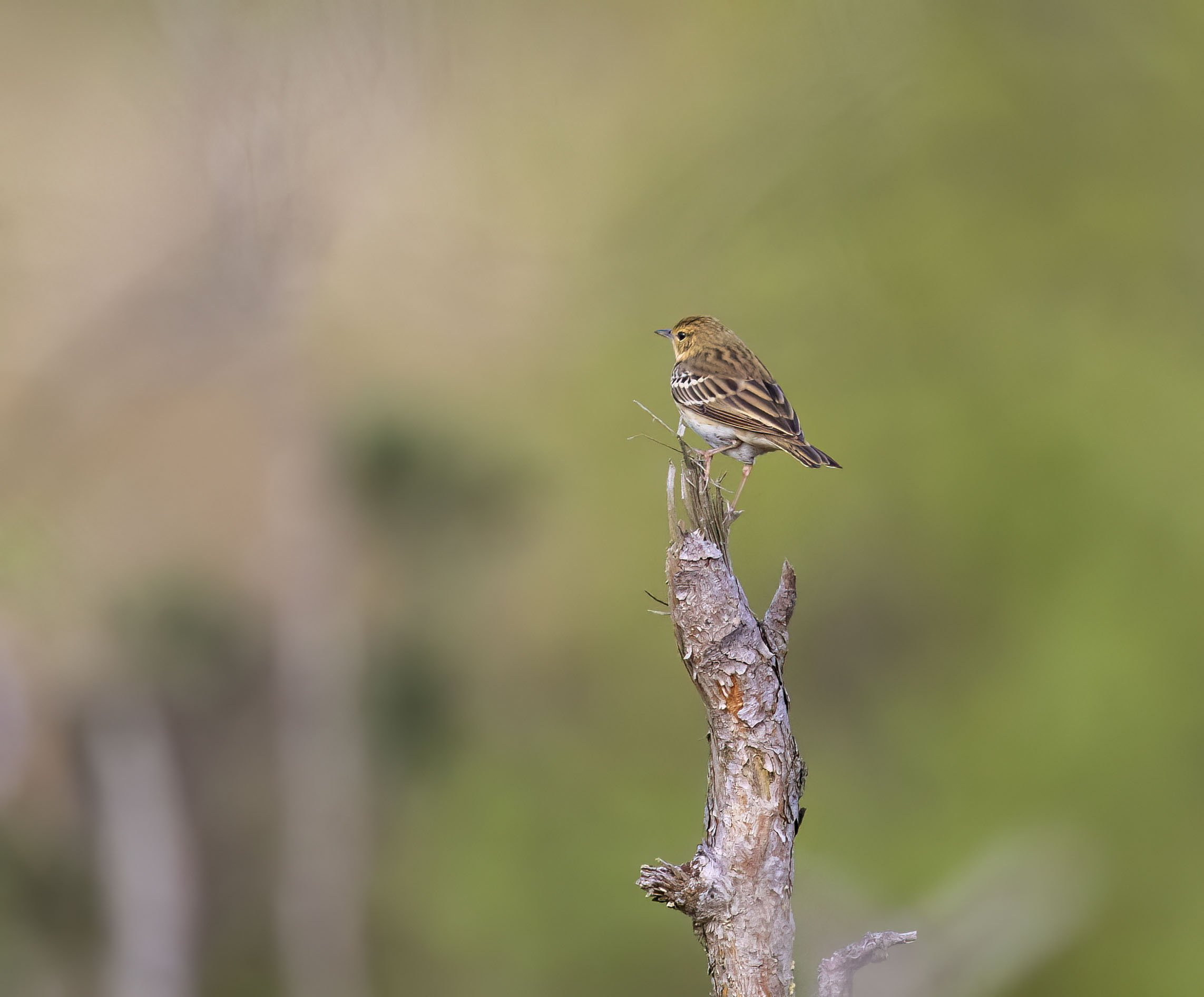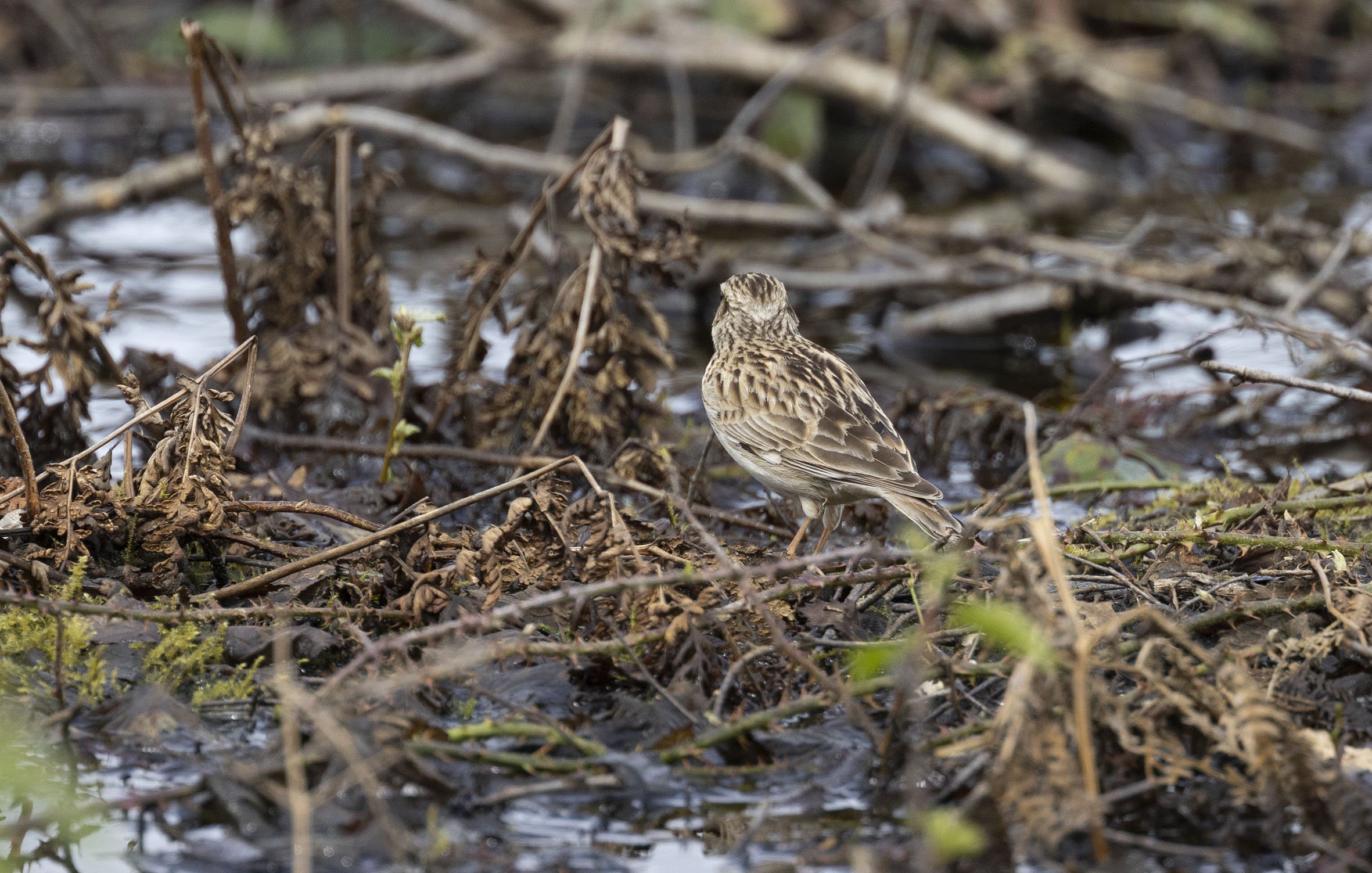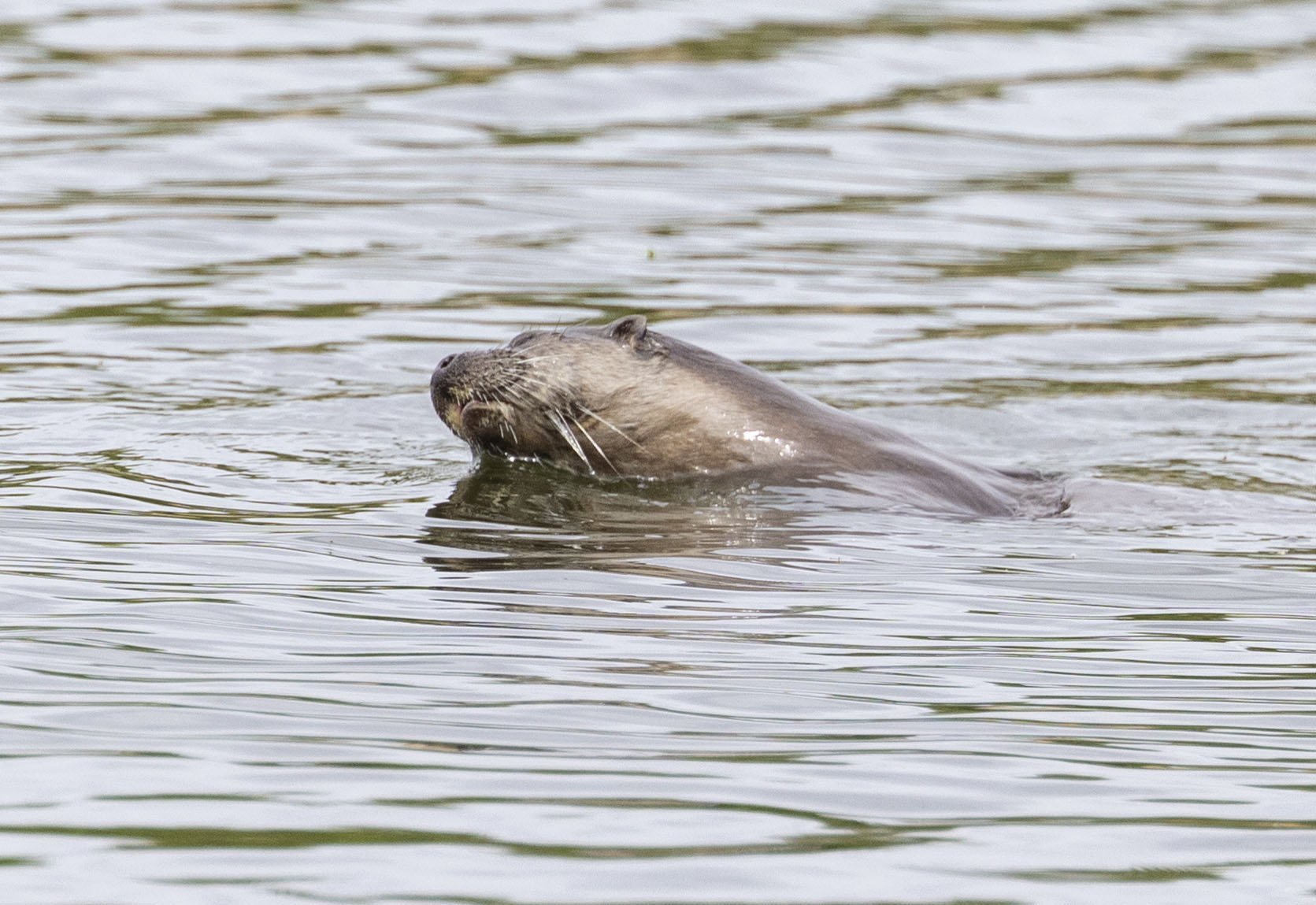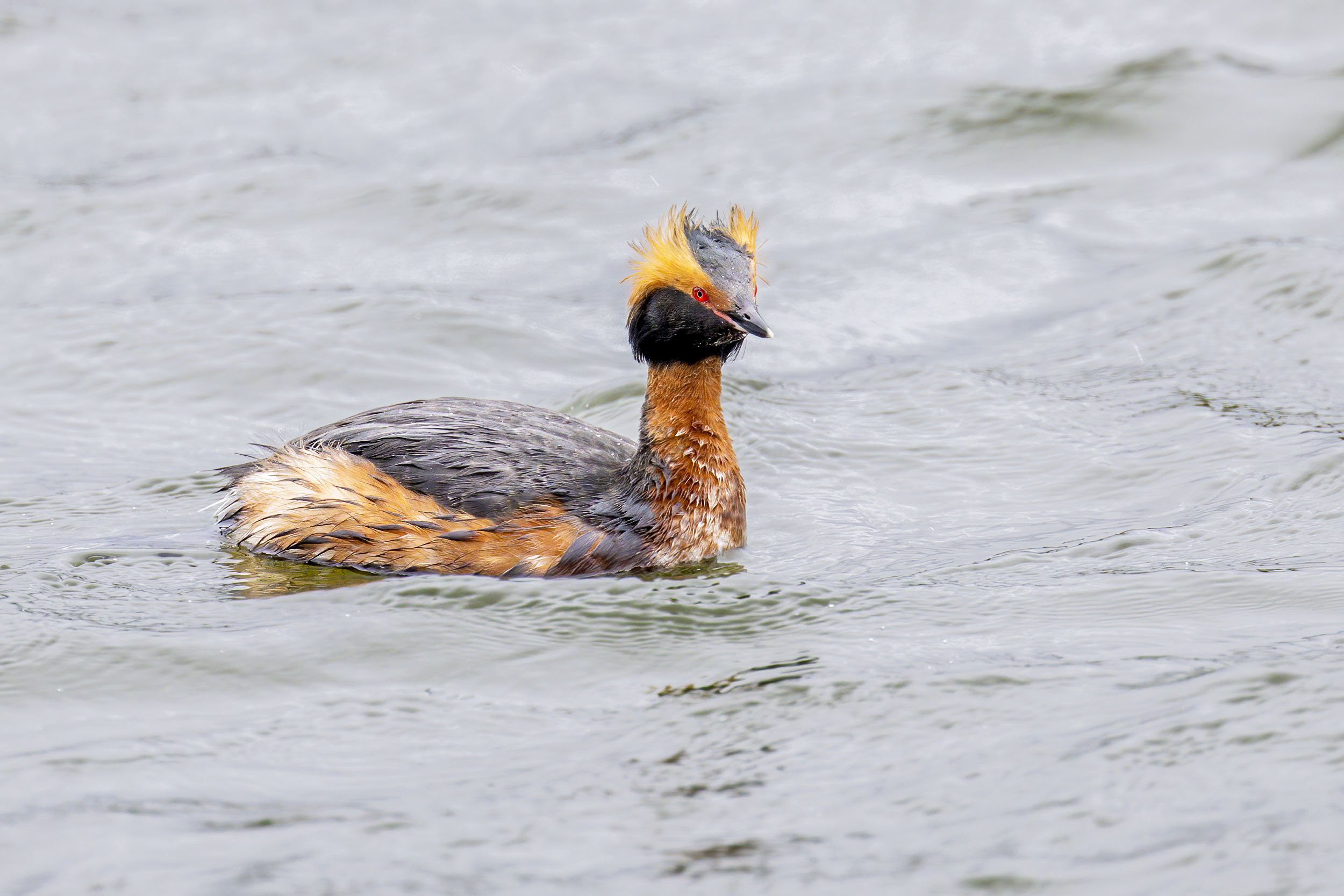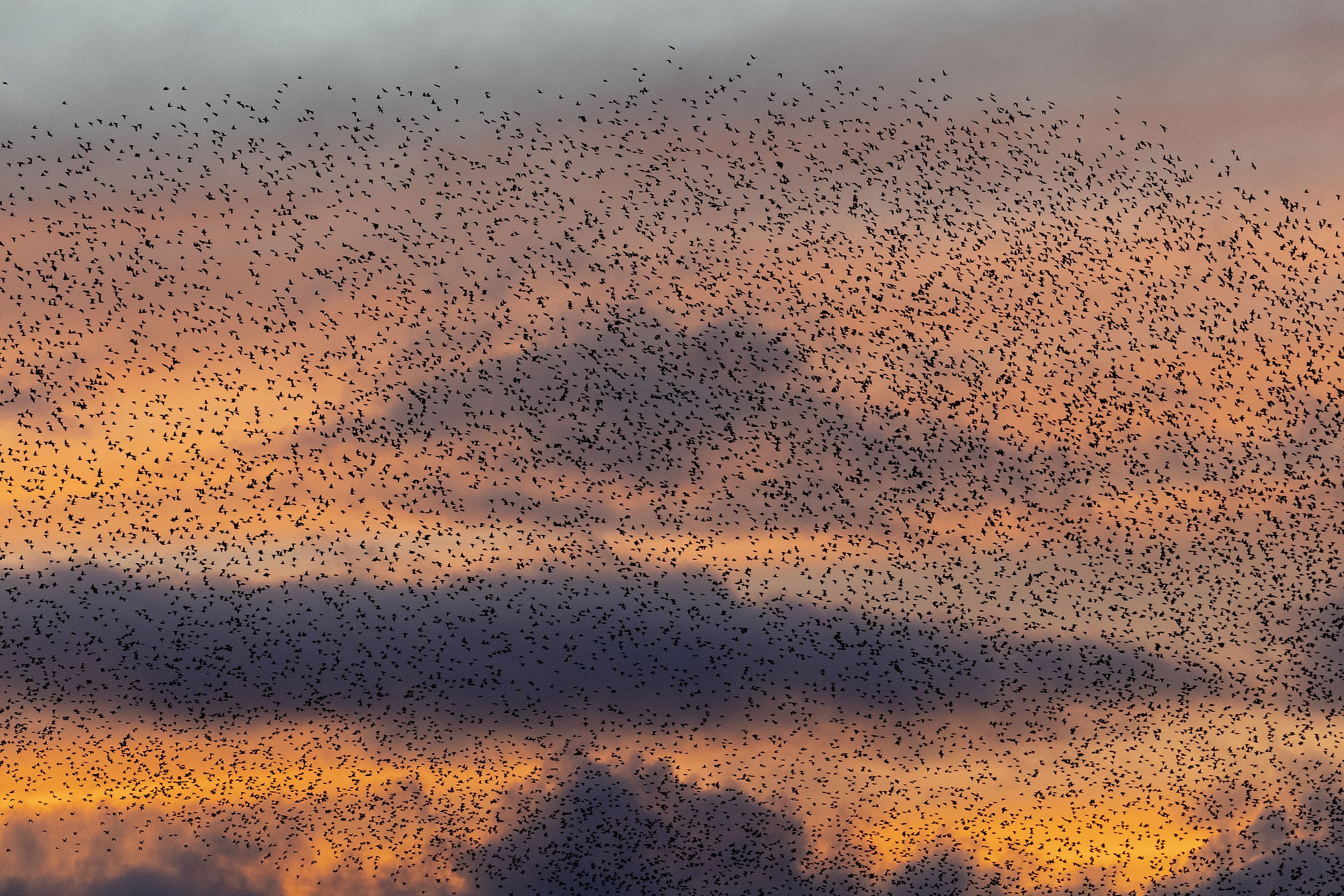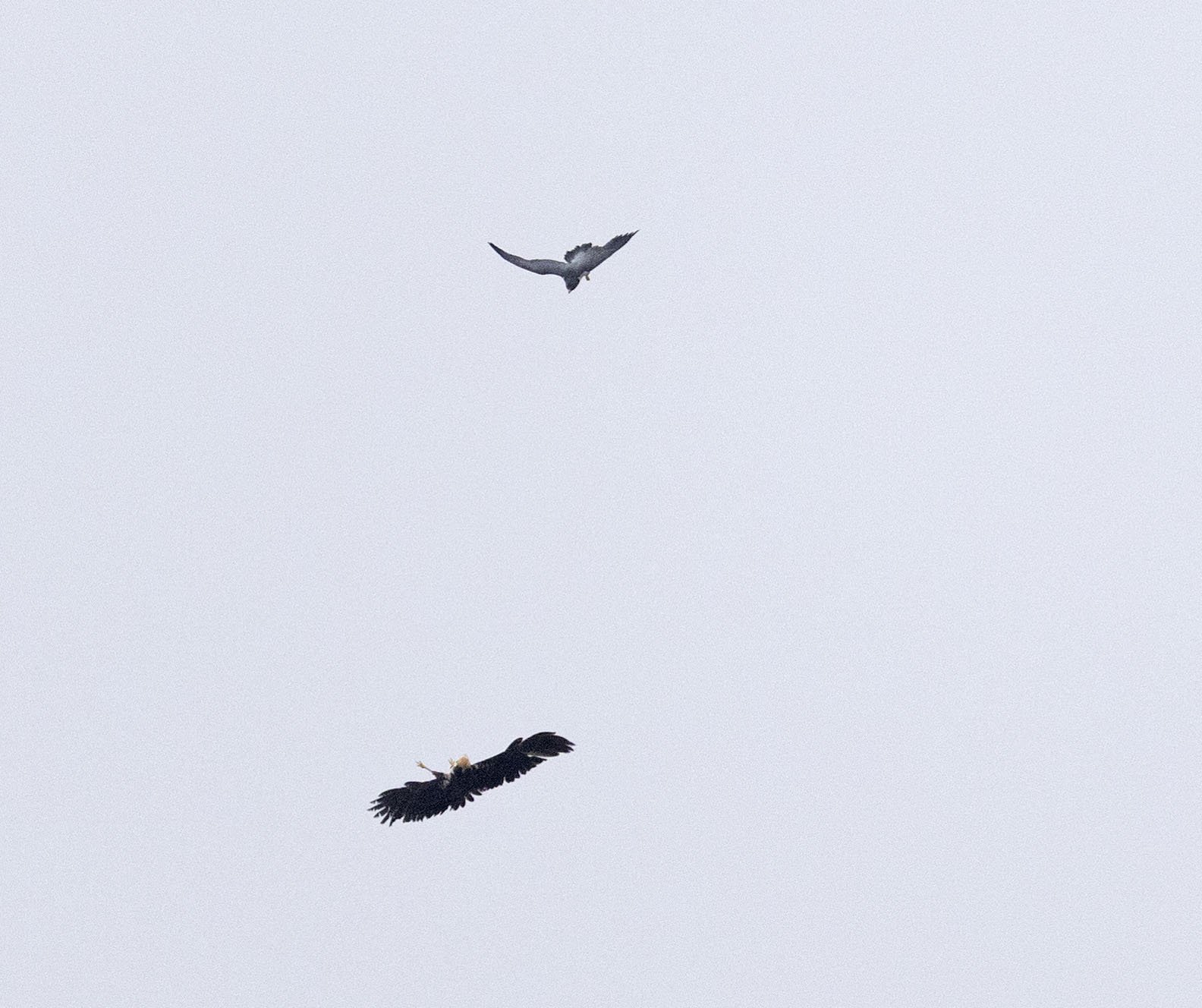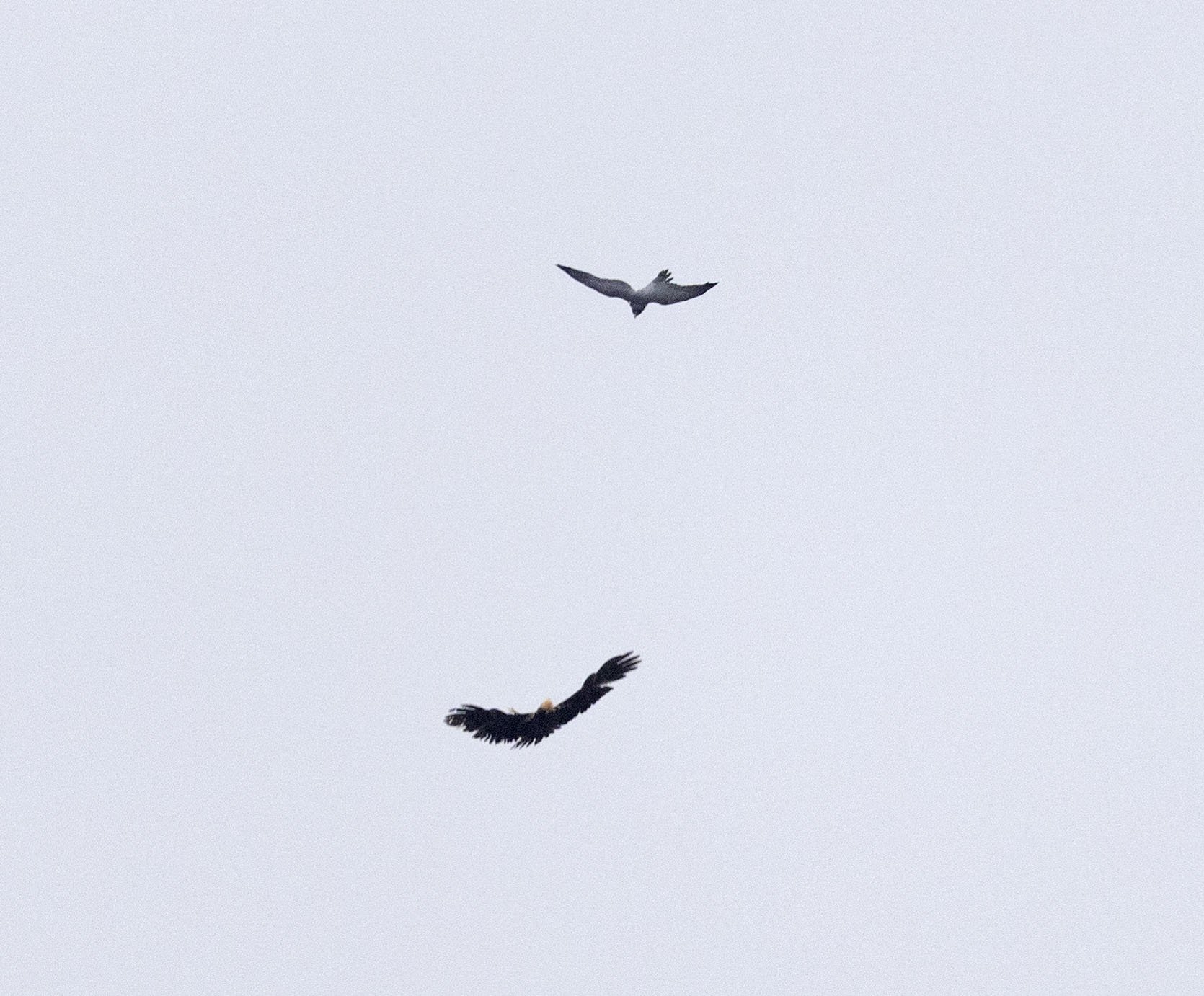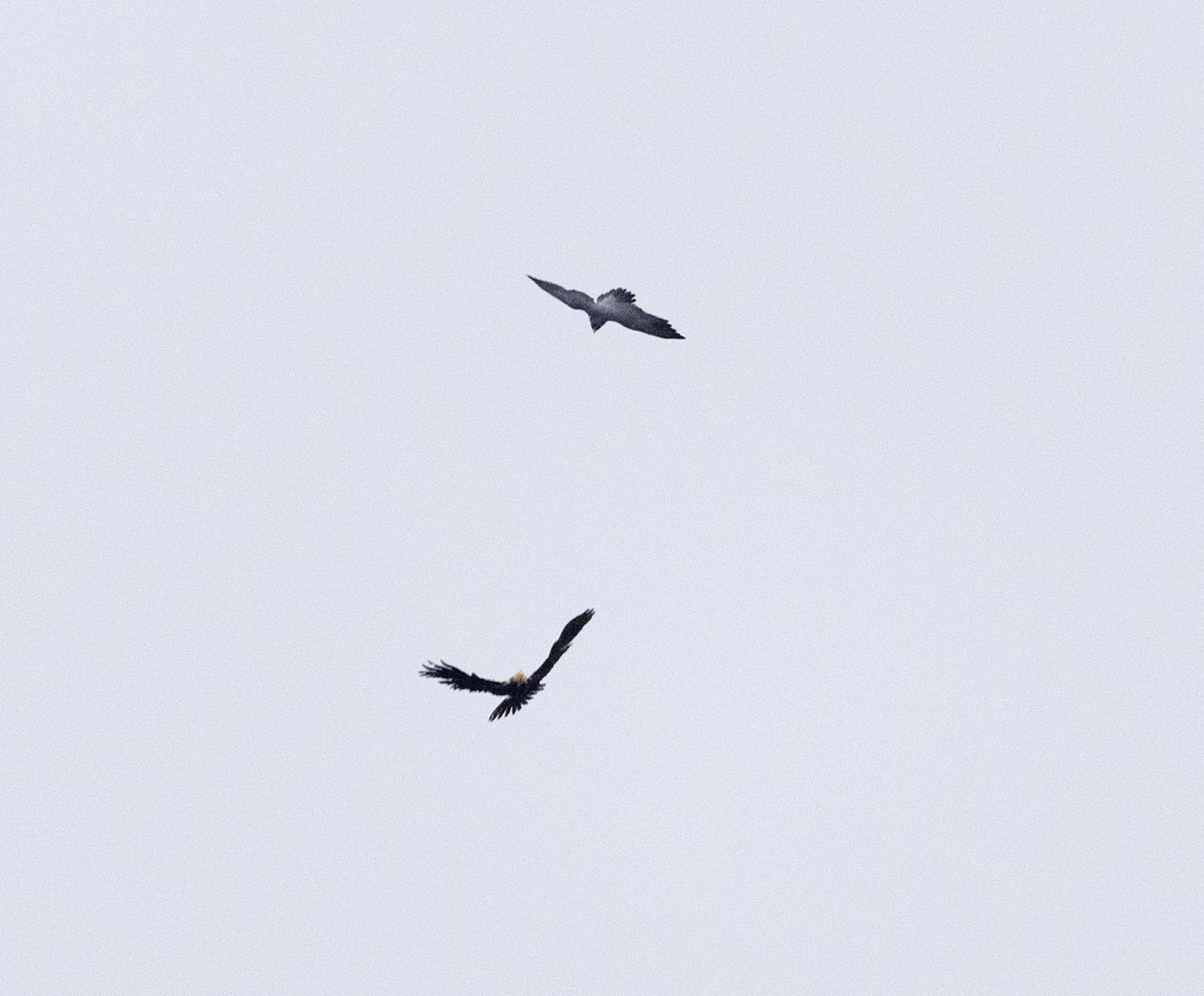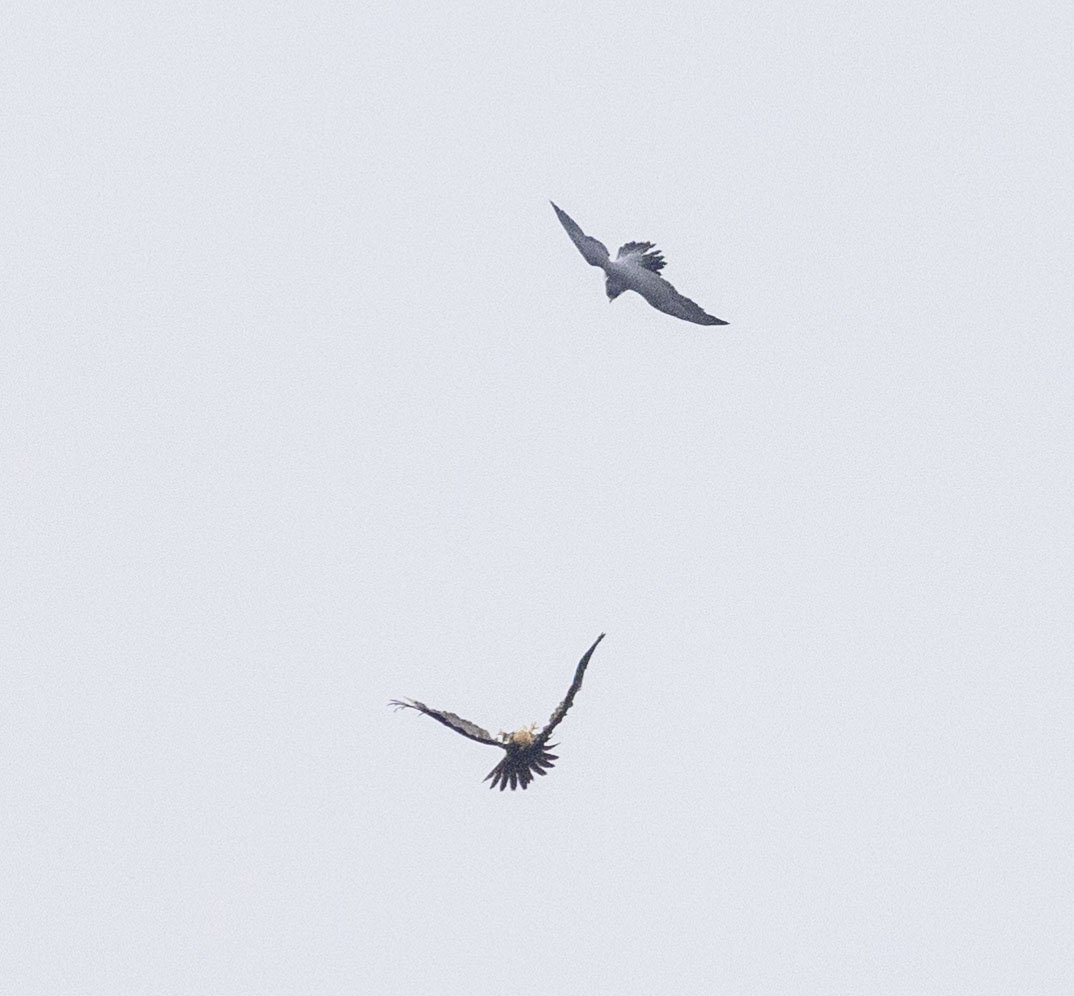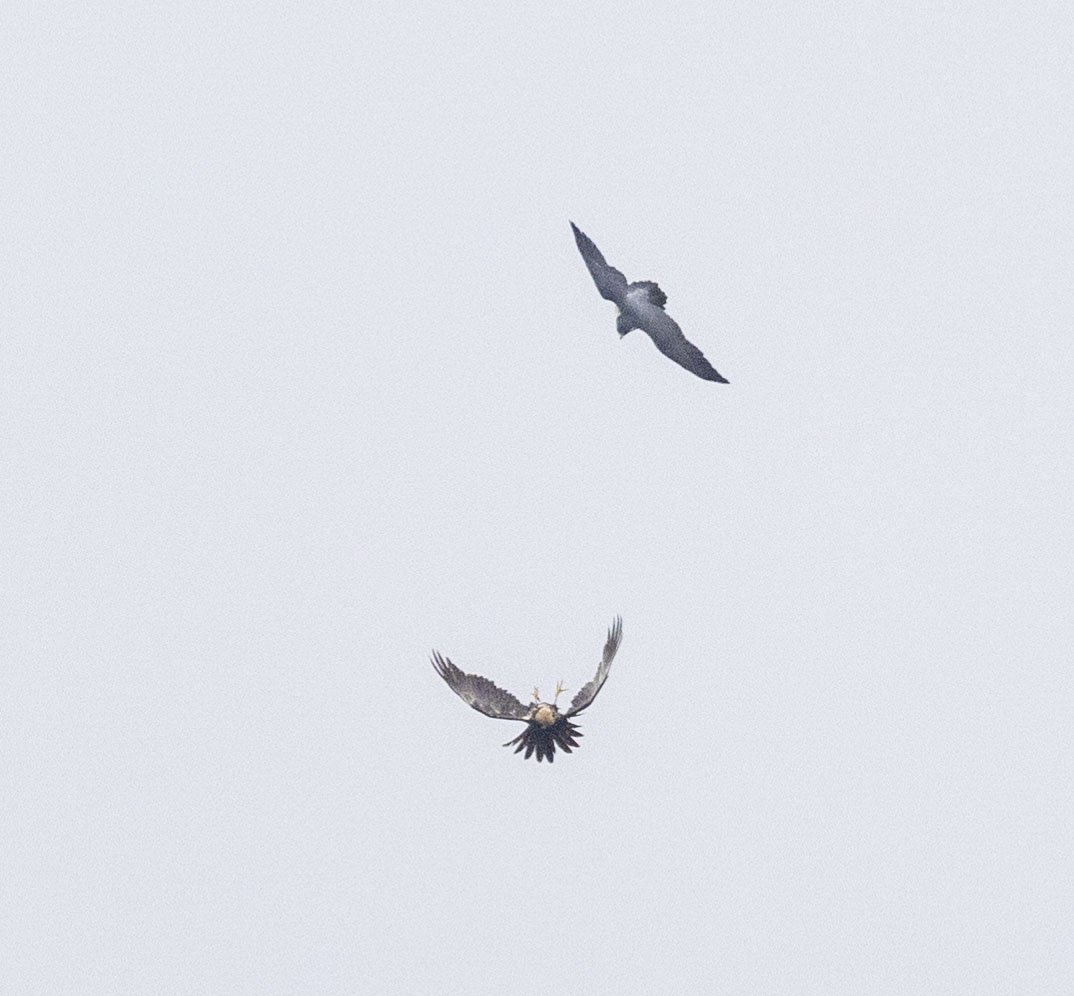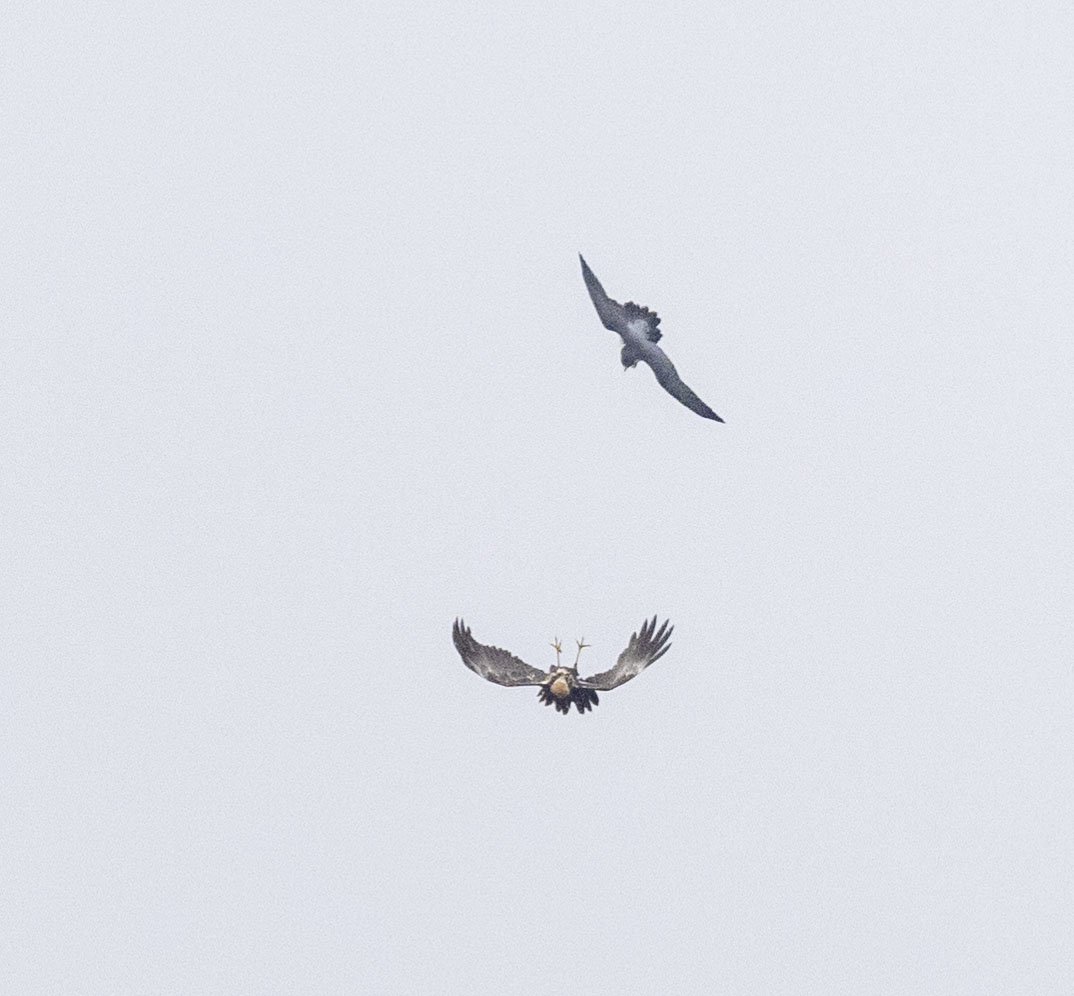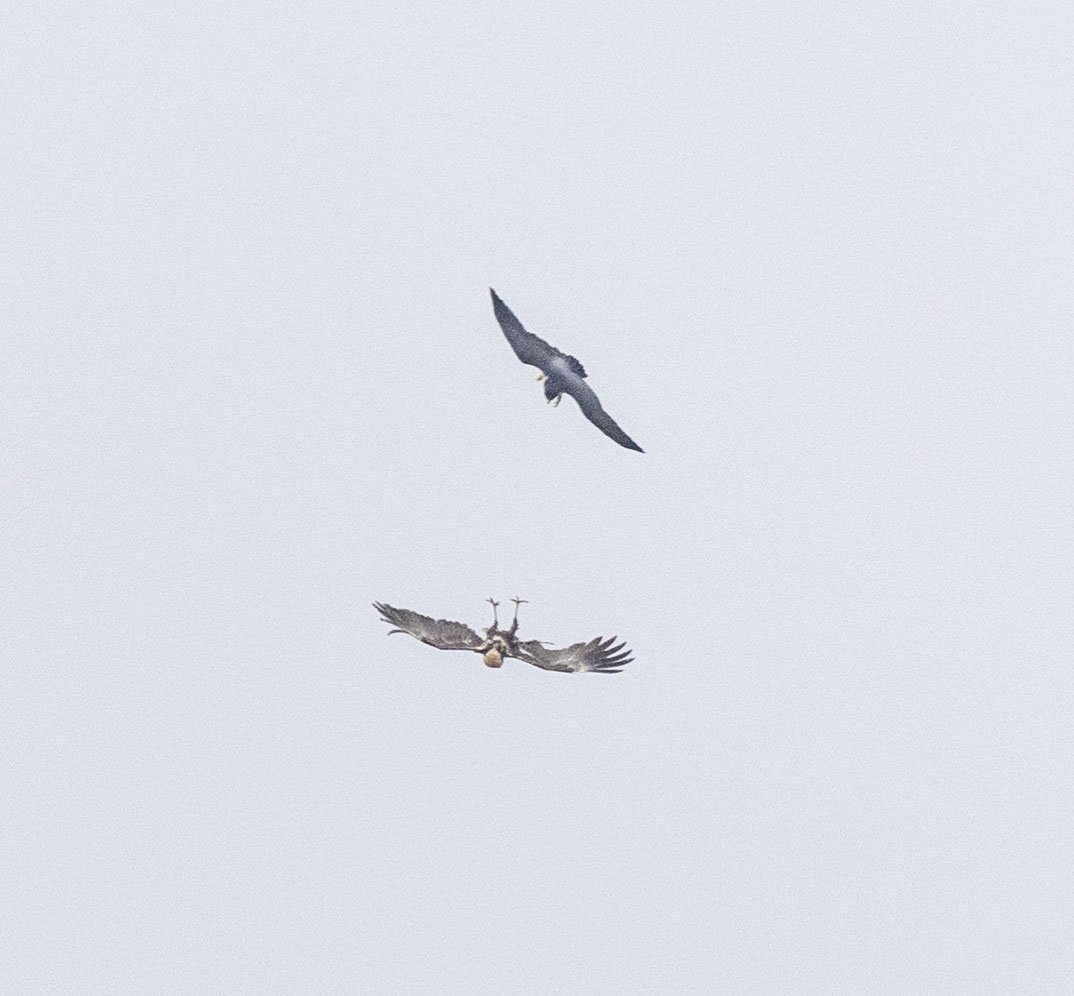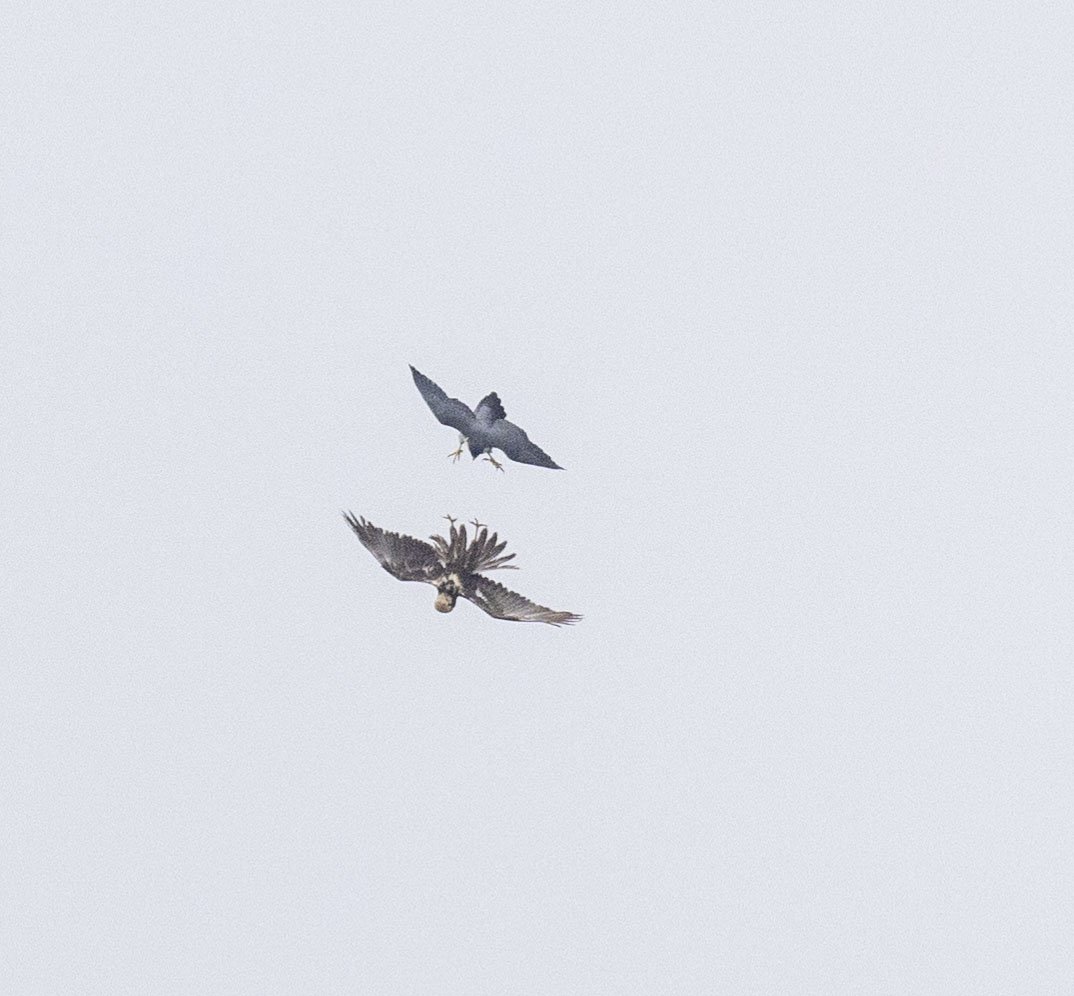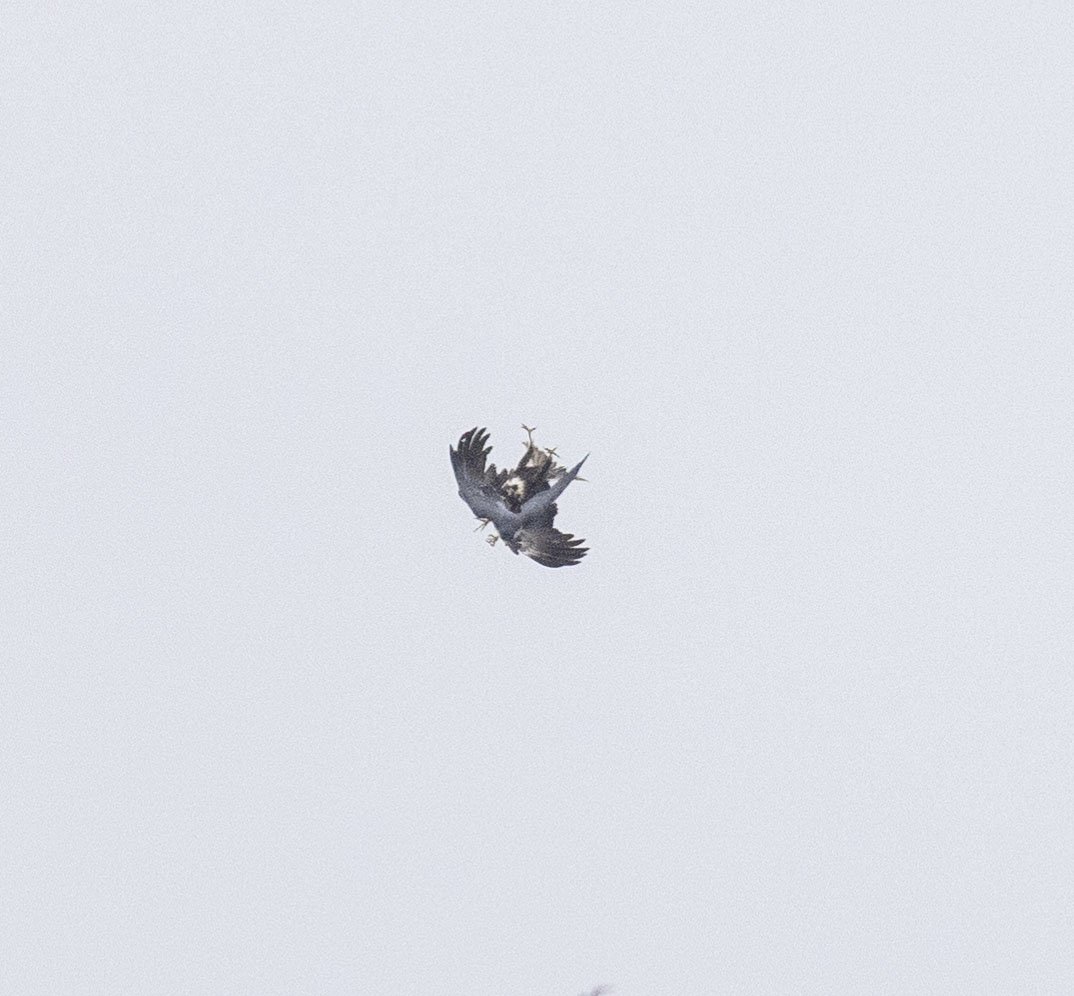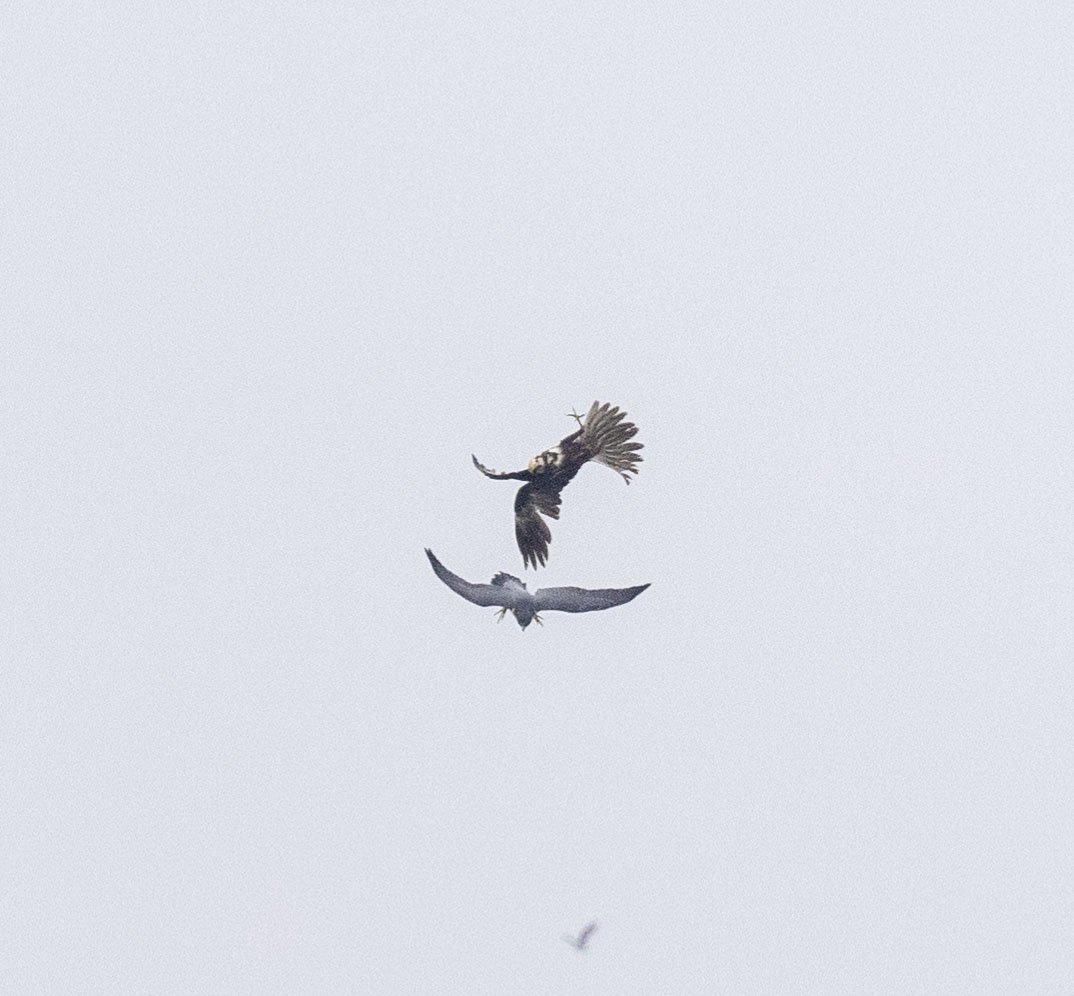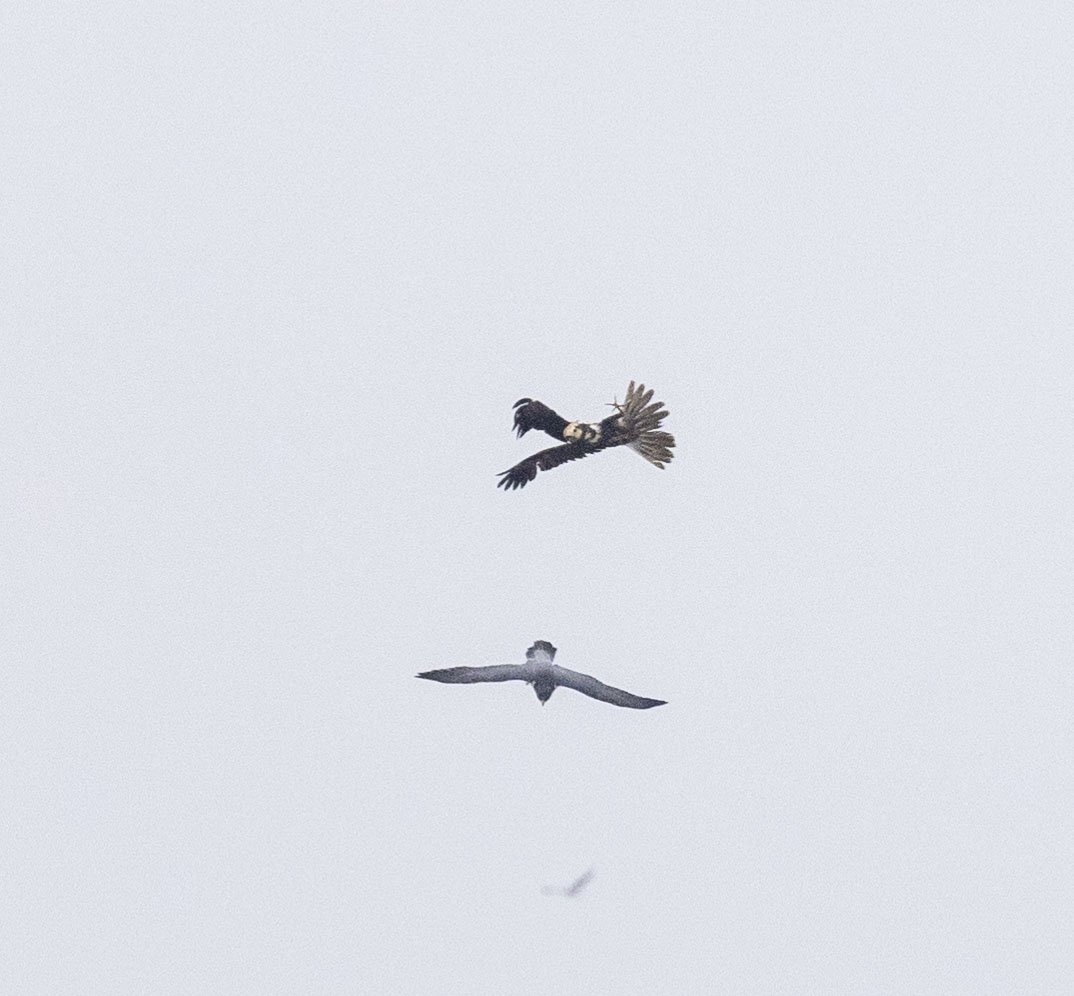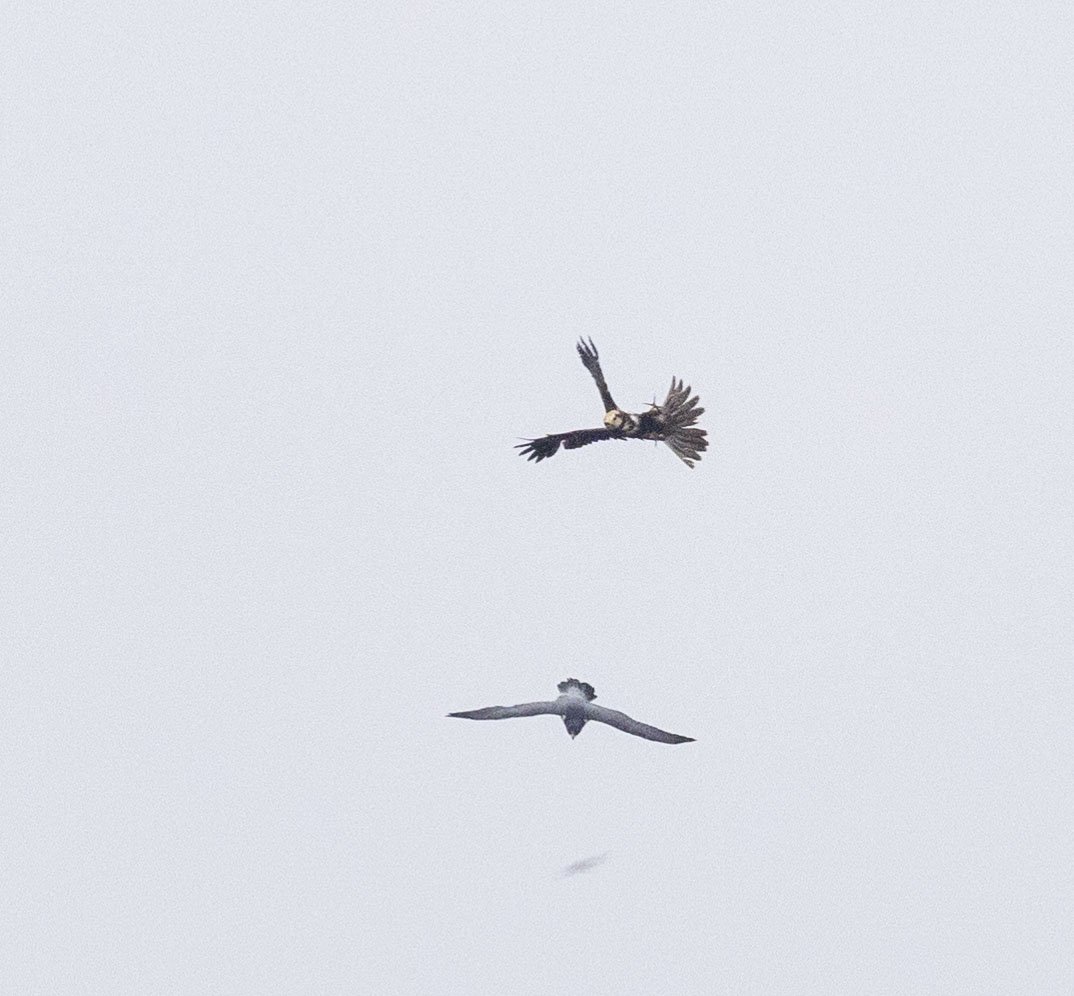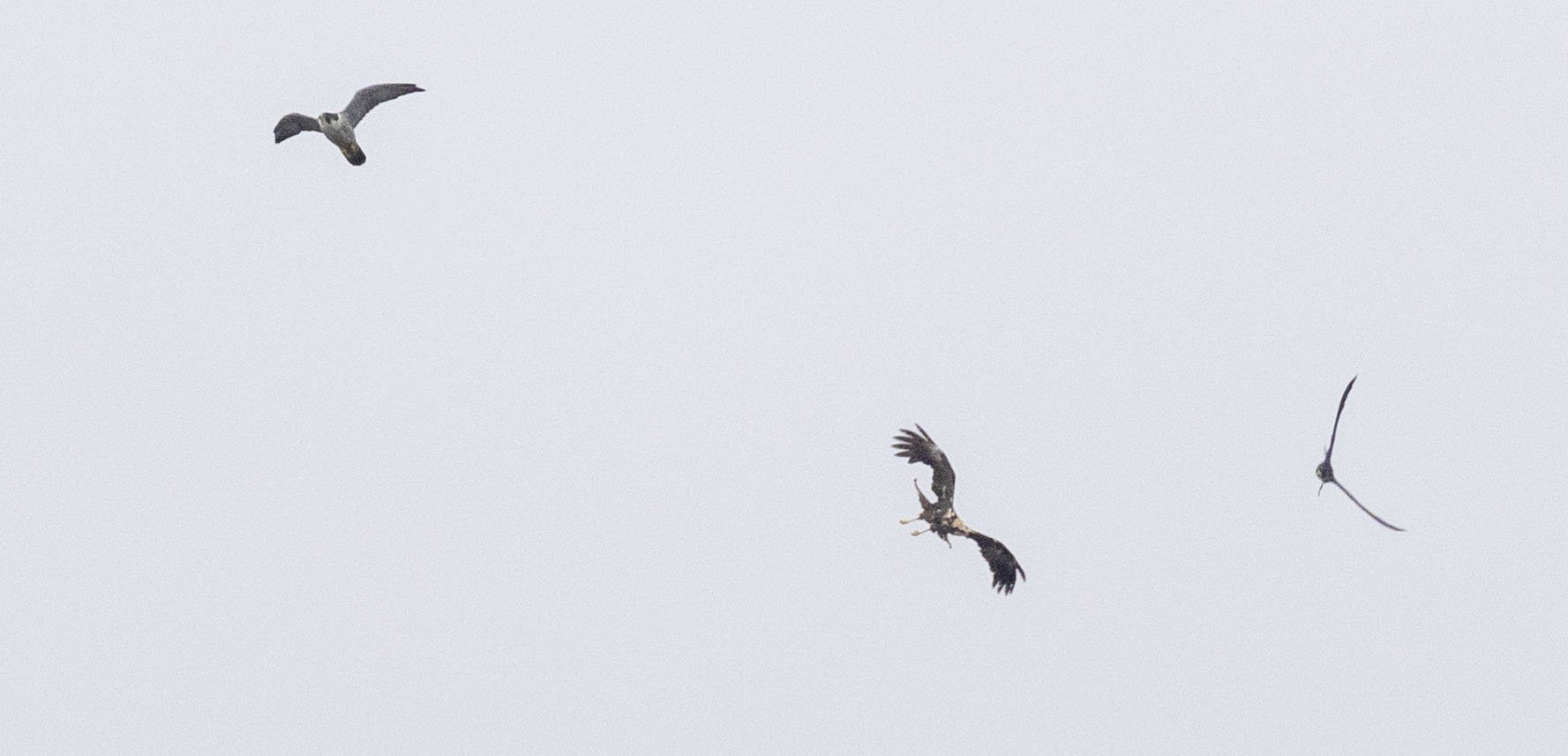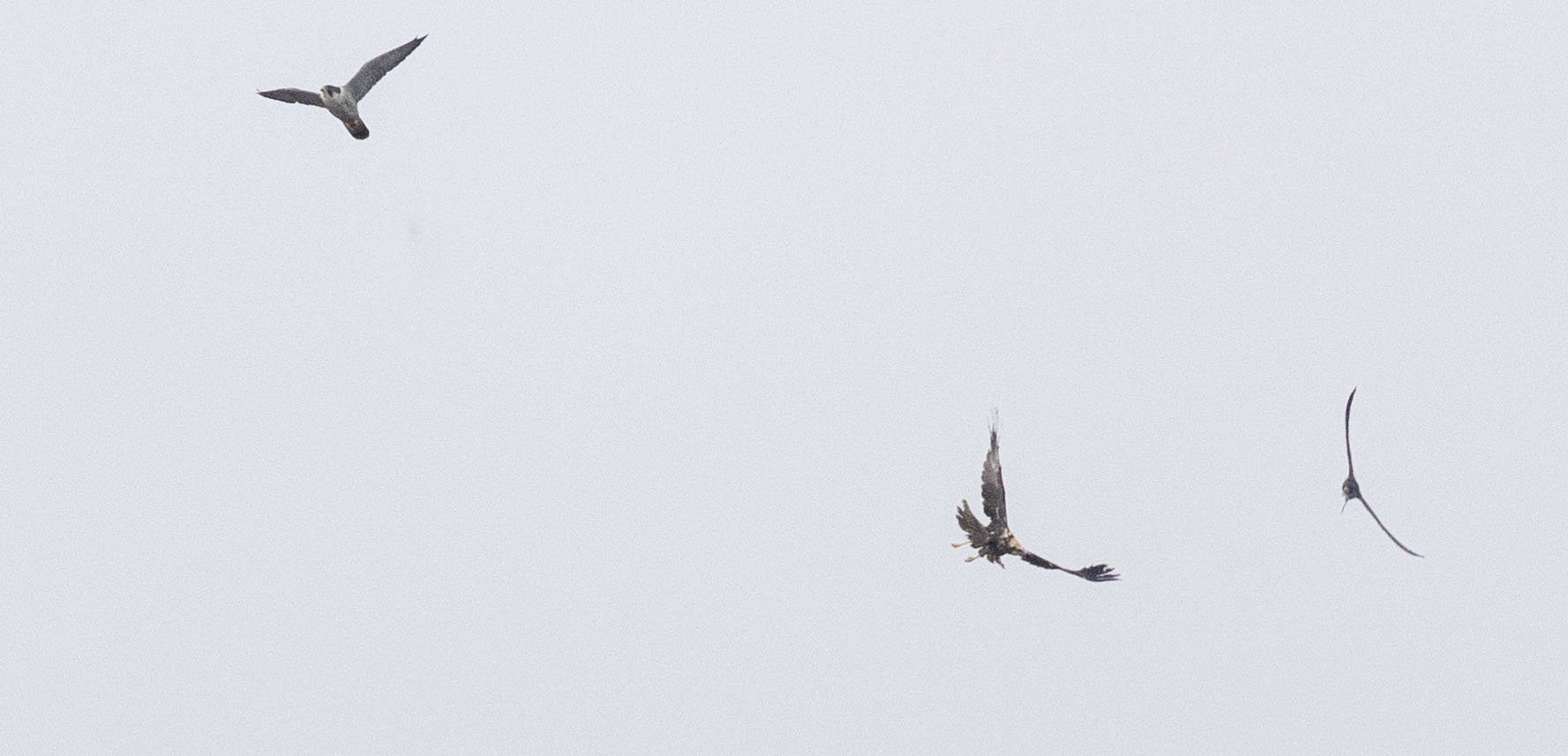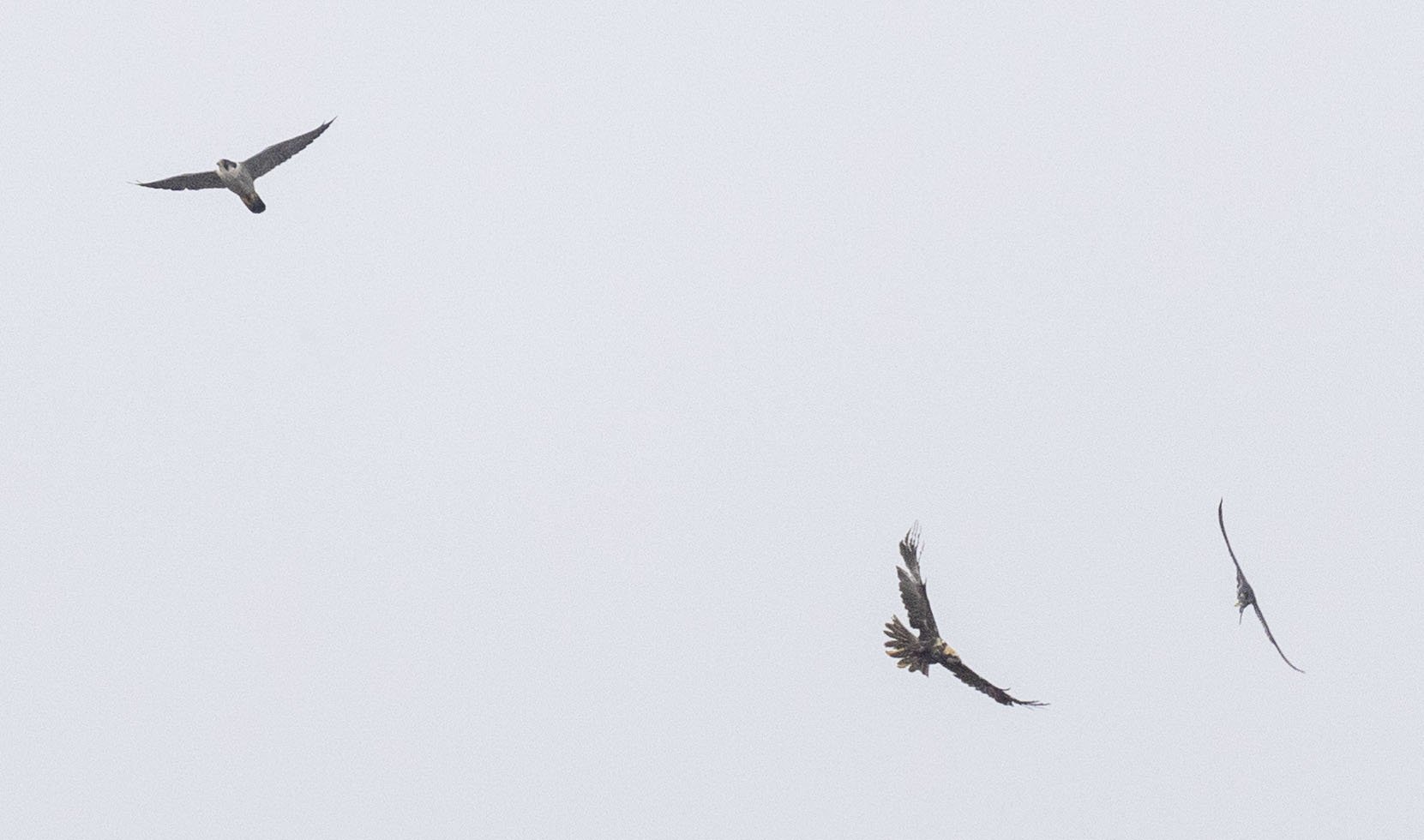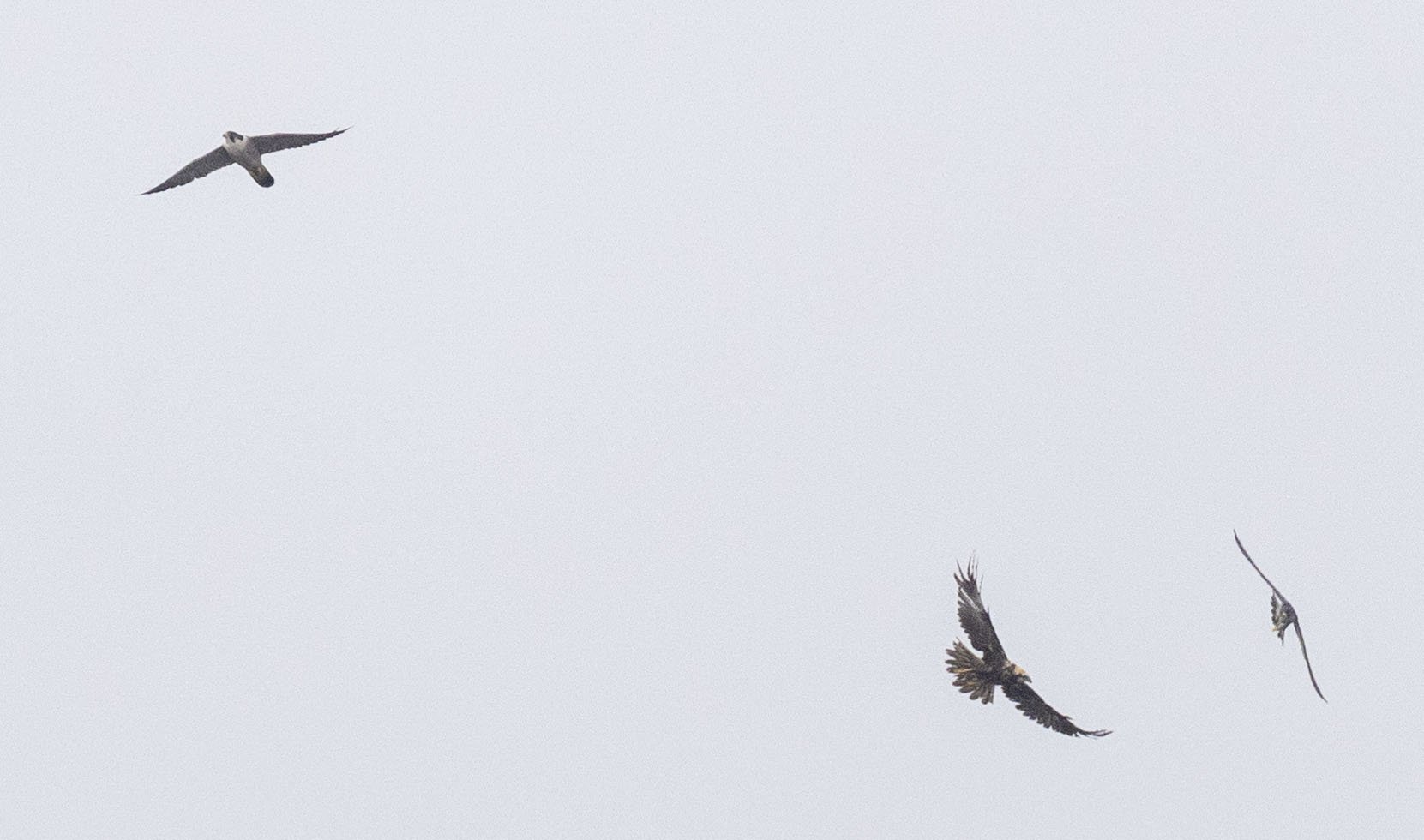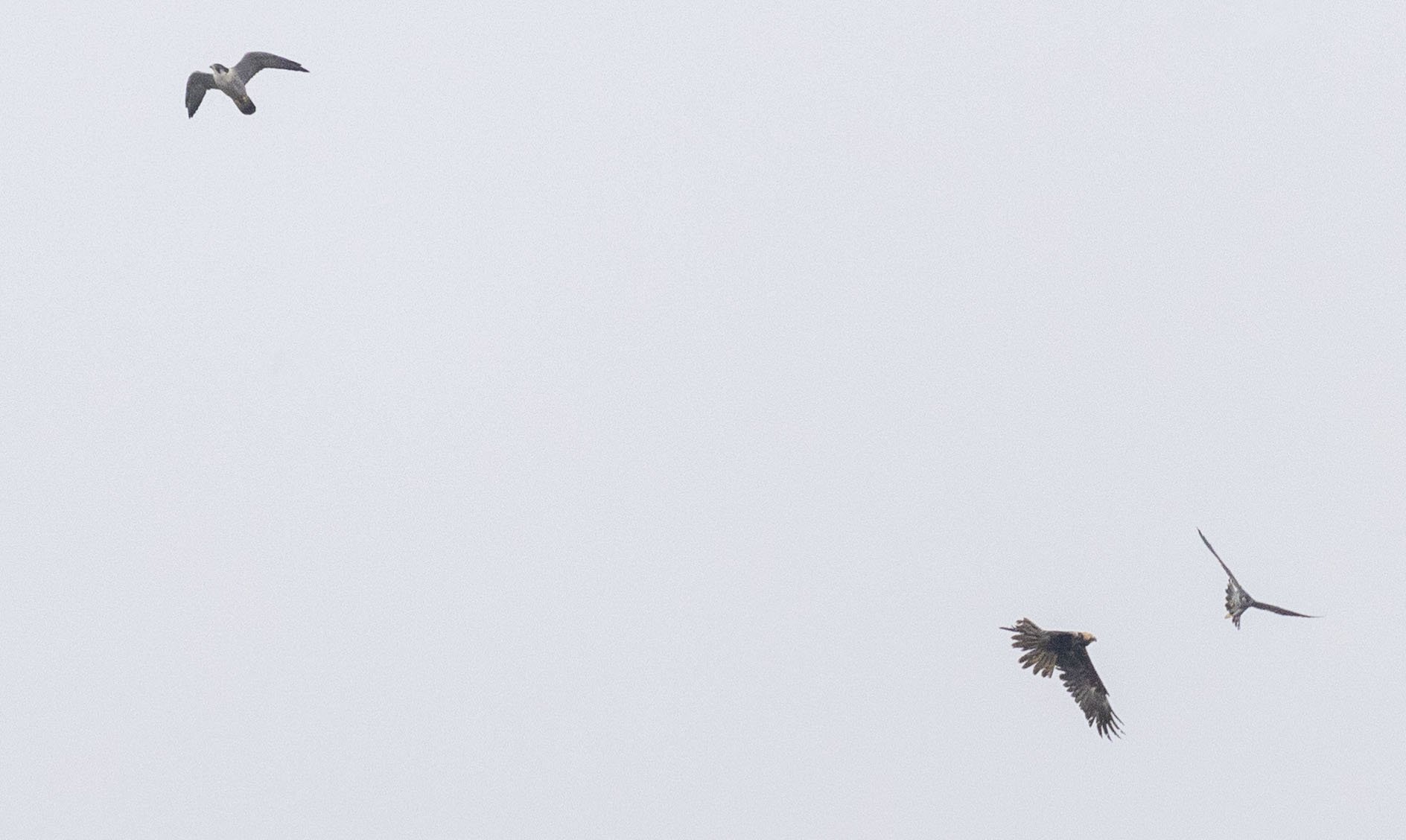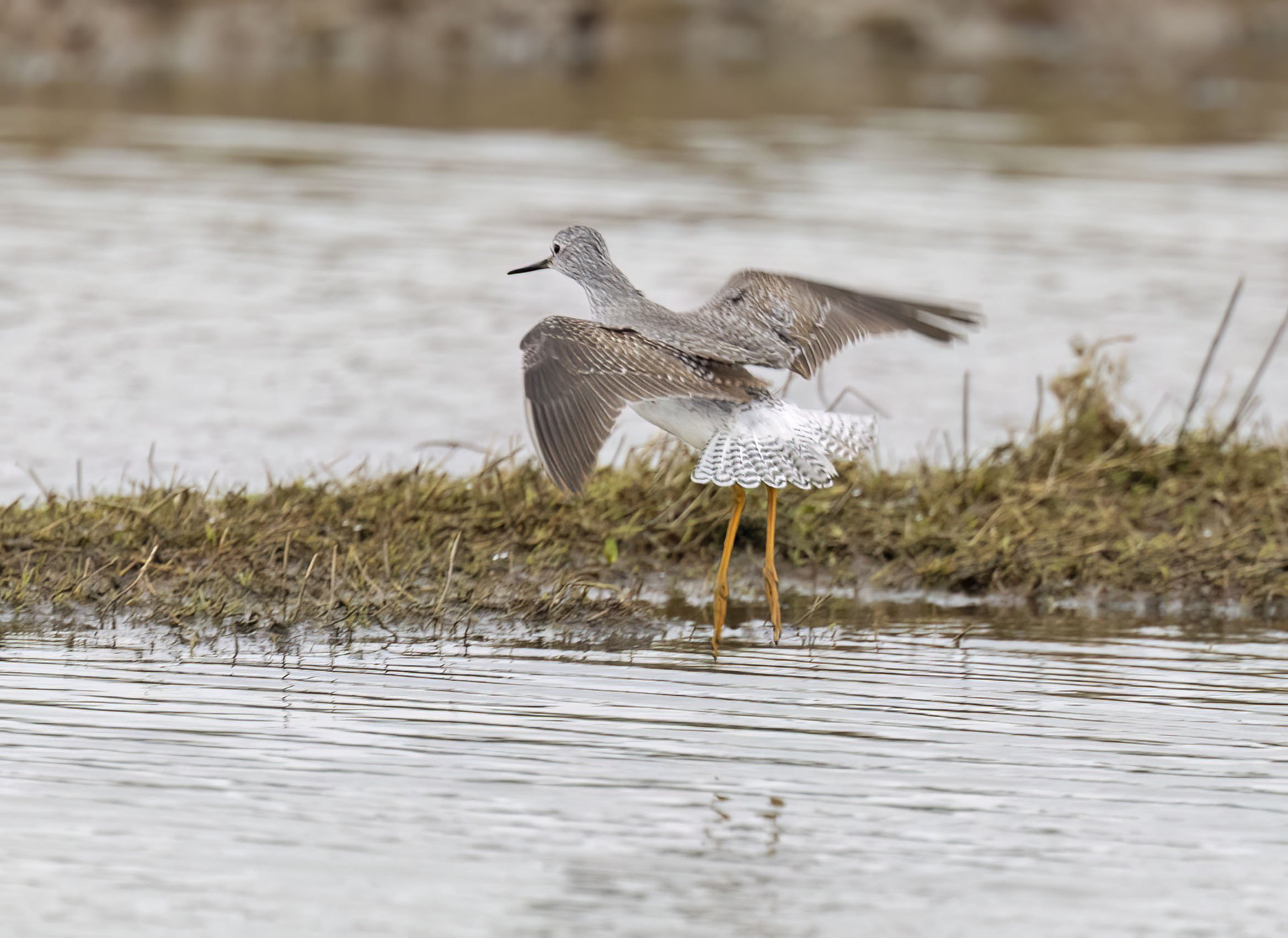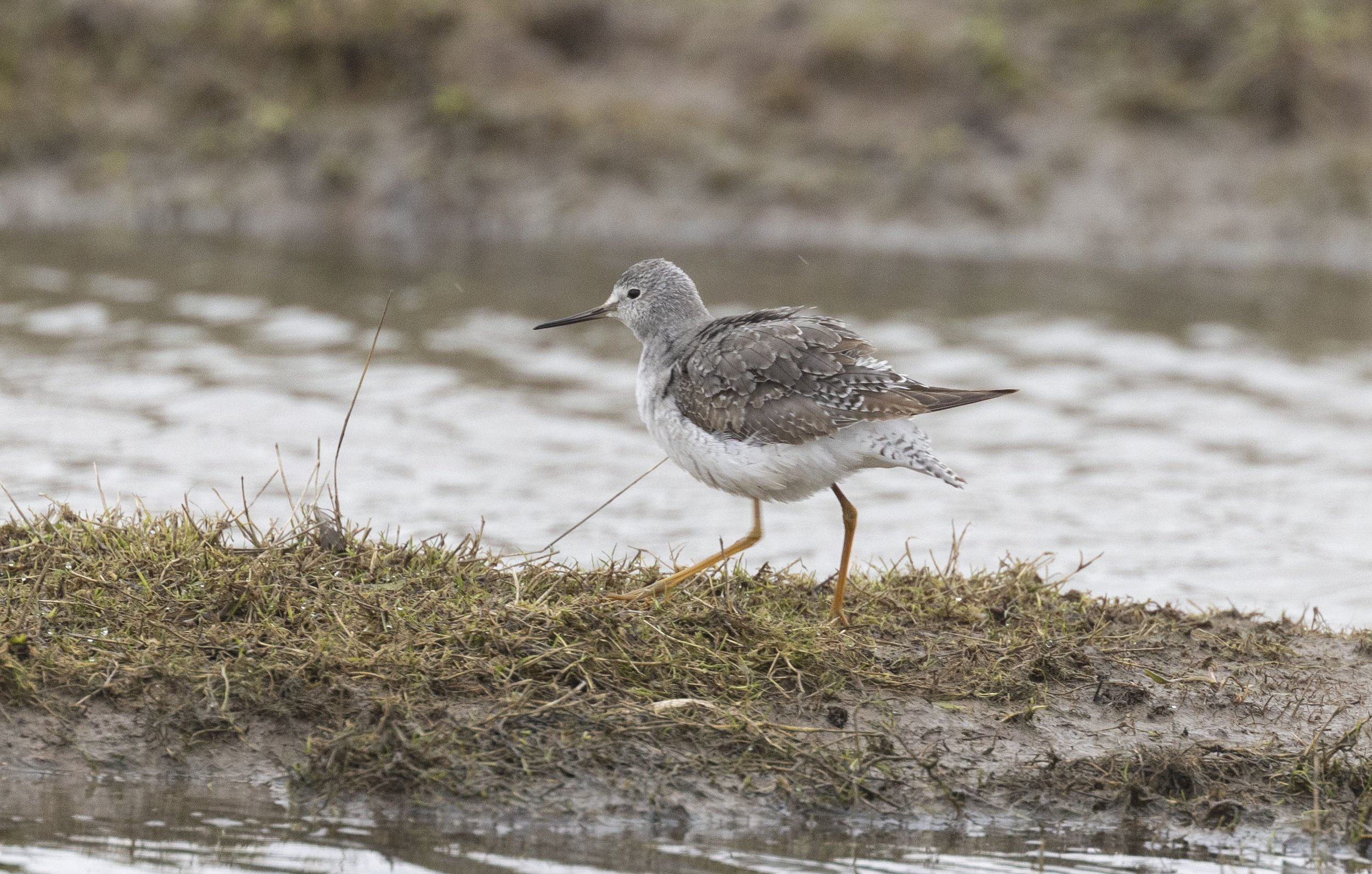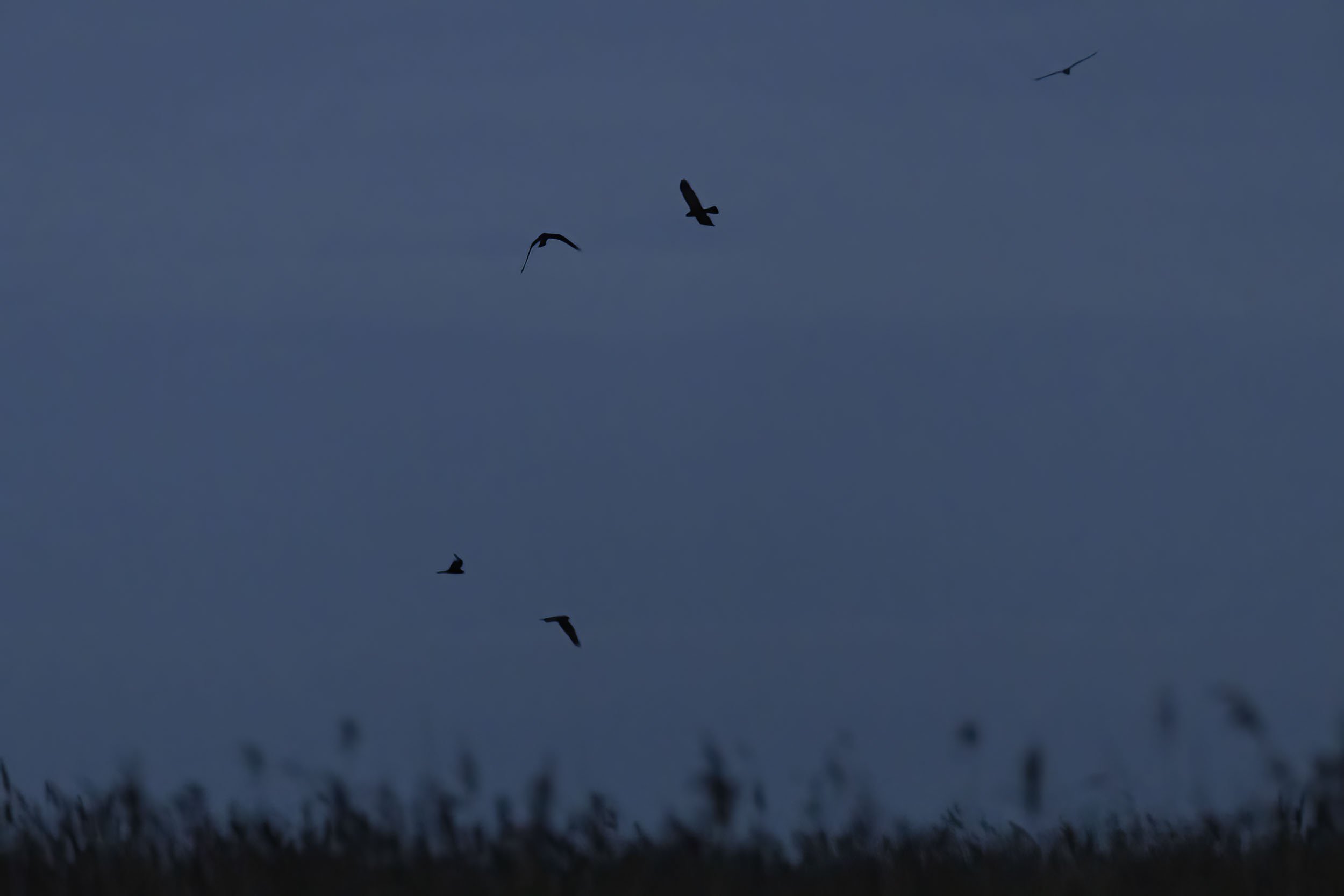A Siberian Stonechat at Gibraltar Point November 16th 2024 and personal musings about past Lincolnshire eastern stonechats
As a new subscriber to British Birds in 1975 the anticipation of the monthly mail delivery of the next issue revolved around the unknown content; would there be an article on identification of some tricky species or accounts of the finding of rare birds or a write up on an extraordinary influx of some scarce migrant or winter visitor or would it be a bit of a non-interest issue! Prior to subscribing I had been given a run of issues from the 1950’s all of which had been devoured searching for inspiration and information on rare birds to be honest. While at the BTO I had spent countless hours trawling through all issues from 1960 onwards reading and re-reading accounts of the finding of rare birds like the mythical Red-flanked Bluetail and photocopying identification articles like the Dusky – Radde’s Warbler paper by Ron Johns and Ian Wallace complete with Ian’s pen and ink sketches that spoke a thousand words. All of this information was of course to be hopefully applied in the field when the Lincolnshire coast was blessed by Easterly autumnal winds, or at least that was the theory.
The June 1977 issue of BB contained a paper entitled Identification and European Status of eastern Stonechats by Iain S. Robertson. Complete with some very grainy black and white images and a pencil sketch this threw up a potential rare bird that most people had never heard of or contemplated but the first European record dated back to October 11th 1883 on, where else but that fabled isle of Heligoland with the second on the Isle of May on October 10th 1913 but more to the point there had been an upturn in records since the late 1960’s with 10 in 1974 alone so there was hope of discovering one of these gems. In Lincolnshire we did not have to wait long as the Donna Nook stalwarts unearthed a first-winter female on October 7th 1978 that stayed to the 8th and allowed the avid few Lincs twitchers to watch it feeding around the rusty barrels and barbed wire dump. I even managed a couple of very distant Kodachrome slides of said bird. Later a spring male at Donna Nook in the previous May 1978 was also considered an eastern bird but identification of males is harder to prove than immatures.
first-winter eastern stonechat Donna Nook October 8th 1978 presumably Siberian Stonechat maurus
Two years later, a late autumn search at Donna Nook on November 9th 1980 revealed a dark looking first-winter eastern Stonechat that I identified as stejnegeri probably the first for Lincolnshire though at that time all eastern birds were simply classified as a race of Stonechat and it was not until 2004 that these eastern birds were split as Siberian Stonechat with races maurus, variegatus, armenicus and indicus, stejnegeri and przewalskii.
I was fortunate with further finds at Donna Nook of first-winter maurus probably male, from my notes on head pattern, on October 2nd 1987 by Ponderosa and an early first-winter female at Pye’s Hall on September 22nd 1994. I also saw another first-winter female maurus at Saltfleet Haven between October 1st – 3rd 2000 but that was it until 2016 when a first-winter male stejnegeri was found by Steve Lorand at Donna Nook on October 6th 2016 curtailing our search at Pye’s and involving some brisk southward walking. In the same glorious autumn, we found another eastern bird by Stonebridge car park on October 14th and assumed just on the paleness of the plumage and obvious differences from the earlier Donna bird that this second bird was maurus. The 2016 birds were written up with annotated photographs in a short paper in the 2016 Lincolnshire Bird Report pages 238 – 244.
The superb Challenge series thought provoking two volume series by Martin and Ray, thanks to Ray for permission to reproduce these images and I am sure Martin would not have mionded either
maurus now Siberian Stonechat, at least for a while
stejnegeri now Amur Stonechat as most people struggled to spell stejnegeri including me
As more identification features came to light firstly in Martin Garner’s Birding Frontiers, Challenge Series, Autumn, then in a new paper in BB we started to question whether the second 2016 Donna bird may also have been stejnegeri? The BB paper ‘Eastern Stonechats’ in Britain; by Andy Stoddart and Martin Collinson in the September 2019 BB noted that: Recent taxonomic changes to ‘Eastern Stonechats’ have separated Stejneger’s Stonechat Saxicola stejnegeri from the five taxa that now comprise Siberian Stonechat S. maurus. Images of birds trapped and confirmed by DNA analysis and new plumage features in the paper laid out a set of criteria for identification but two birds identified as one species were in fact confirmed as the other by DNA so things were clearly not that clear cut. The following two paragraphs probably sum things up nicely:
However, the fact that the provisional field identifications of some DNA-tested birds did not align with their genetic identity is a cause for concern. Individual variation and the lack of an absolute feature clearly pose a problem. At the same time, the questions around intergrades/hybrids remain unresolved while, to complicate matters further, could there even be, as suggested earlier, a lack of congruence between the morphological and genetic divides between the two species? In other words, could a proportion of ‘Eastern Stonechats’ be apparent Stejneger’s on plumage but genetically Siberian (or vice versa)? These (and other) lingering taxonomic questions also suggest that caution is in order.
Finally, even without these difficulties, any attempt to cherry-pick ‘distinctive’ individuals would still be problematic. How could ‘dark enough’ or ‘pale enough’ be defined? What about the more ‘intermediate’ birds? And, perhaps most importantly, given the difficulty of establishing true plumage hues, how much reliance can really be placed on field notes (if available), and, in particular, how useful are photographs?
The latest identification handbook, ID Handbook of European Birds by Nils van Duivendijk shows the most reliable features for separating what are now called Siberian maurus and Amur stejnegeri Stonechats and confirms at least that the Gibraltar Point bird is a first-winter male.
With all this in mind, and assuming I had not seen a Siberian Stonechat since 2000 a visit to Gibraltar Point to take in the features of the first-winter Siberian Stonechat found by Sam Goddard and still present early morning on the 16th, seemed in order. The weather men had typically got it all wrong and the afternoon was peppered by thick cloud and showers of light to moderate rain. None of the images below were taken in anything other than dull, though flat light and most were at ISO 3200 or above. The bird was at times fairly close to a male and female Common Stonechat but was generally on its own.
First winter male Siberian Stonechat (maurus) Gibraltar Point November 16th 2024. Images taken in slightly different lights, there was no sun while I was there, and different toned backgrounds could have the effect of changing the subtle colour tones of the bird’s plumage. Images taken later in the afternoon after a series of showers emphasise the blackish feathering in the crown and ear coverts partially due to the crown being wet. The bird could appear strikingly obvious and pallid at times but at others could look quite dark and at a distance could almost be passed off as a Common Stonechat.
The unmarked white undertail coverts and vent contrasted with the peachy underpart colouration. Depending on the angle of the head the mask formed by the blackish feather bases in the ear coverts could also appear striking or much less obvious. According to some published images the small very pointed bill is also a maurus feature with stejnegeri being thicker and blunter tipped.
After several showers the crown and head feathers became a bit matted with water. The buffy – cream tips to the greater coverts and greater primary coverts rule out this being an adult male.
In duller light there was more contrast in the mantle and scapular feathers with the dark feather centres appearing blacker. On the underparts the upper breast also showed a deeper orange colouration than the remainder of the underparts.
The darker orangy area on the upper breast shows well on this image taken in dull light just after some rain.
Also shown is the orangy colour on the upper breast in this flight shot where the throat appears to be marked with black feathers, actually feather bases and also note the black underwing coverts with pale whitish fringes another feature of first-winter males.
Most of the rump was essentially white to pale cream with a faint apricot wash to the uppertail coverts and distal part of the rump feathering. In flight at any sort of distance the rump looked uniform and pale creamy coloured but frozen images show the peachy wash.
The chin and throat were mainly white and contrasted with the peachy breast and underparts but faint blackish feather bases were visible in the throat patch.
The narrow white-buff fringes to the lesser and median wing coverts are shown here with the creamy – buff outer web fringe and tips to the greater coverts. The tail feathers were essentially black with a narrow and worn whitish tip. The pointed tips are usually a feature of juveniles.
In particularly dull light with thick dark clouds the apparent colour of the bird changed making it less contrasting and more female Common Stonechat like.
Unlike the Common Stonechats nearby nearly all of the Siberian’s feeding forays consisted of aerial pursuits of insects and this made it easy to locate. It used high perches in the buckthorn and elders and occasionally resorted to a nearby barbed wire fence. At one point if lew 150m out onto the saltmarsh to bathe quickly in a shallow area of water before quickly drying and preening and returning to the dunes.
The black underwing coverts contrasted markedly with the paler flight feathers typical of a first-winter male
The black tertials with crisp white broad fringes and the white-cream outer webs of the secondaries formed the typical striking wing panel.
Whitish tips to blackish tail feathers with narrow white fringe to outermost
All in all, a beautiful little bird but how does it compare to the two 2016 birds at Donna Nook?
Looking first at the presumed Amur Stonechat found at the south end on October 6th – 10th it was a dark looking bird and at a distance could have been passed over as a Common Stonechat. The following description was compiled by Steve Lorand who found the bird:
At distance, it resembled a female Common Stonechat, but differing light intensities and viewing angles could cause some variation in impressions of the bird’s general colouration. It was overall darker and more richly-coloured than any maurus birds seen by any of us, while the obvious sharply-demarcated throat patch and the deep orange rump were particularly striking features. In very good sunlight, the dark mottled crown and ear-coverts contrasted with the pale cream supercillium which met just above the base of the bill. A broad dark line from the bill passed through the eye and widened to form a patch on the ear-coverts. The creamy throat patch was very conspicuous, particularly with the sharp demarcation from the warm peachy-buff of the breast and slightly paler belly. The undertail-coverts were whitish. The underwing was silvery-grey with black axilliaries and underwing-coverts, thus determining the bird as a male. The upperparts were dark brown with orange-buff fringes on the mantle and scapulars. The greater coverts were tipped orange-buff. The primaries, secondaries and tertials were brown-black with cream fringes. The rump was a striking clean deep orange and the tail feathers were brown-black narrowly tipped with orange-white which extended along the outer webs of the outer feathers. One or two of Graham’s photographs show a creamy suffusion on the upper rump and also dark shaft streaks to two central uppertail coverts. The bill, legs and feet were blackish.
Presumed Amur Stonechat Donna Nook October 6th 2016. Note general similarity to a female Common Stonechat but clearly demarcated creamy throat and unstreaked orange underparts with obvious pale supercilium. These images are massive crops as the bird was particualrly flighty and impossible to approach
Blackish underwing coverts confirm that this was a male. The rather dark orange rump and rear flanks contrast with the black tail
Black underwing coverts contrast with paler flight feathers. Deeper orange underparts with only hint of paler colour on undertail coverts.
Orange not peachy underpart colour and dark upperparts, to some extent exaggerated by low sun, with dark ear coverts and crown make this bird look very similar to some female Common Stonechats. Note stubby looking bill with broad base a feature noted by Garner and Scally.
Deep orange rump extends over uppertail coverts with two obvious black shaft streaks on longest uppertail covert feathers.
Amur Stonechat Donna Nook October 6th 2016. Note here the pale creamy tips to the black tail feathers with the deep orange lower rump. and uppertail coverts also the fringes to the flight feathers are buff to rufous not white as are the tips to the greater coverts.
The second Donna Nook October 14th – 16th 2016. Found by GPC and ND after a long day slogging the Pye’s Stonebridge area this bird looked paler than the earlier Amur and suggested that it was a maurus but good images reveal features that appear to be at odds with that identification and suggest that it was probably a second Amur Stonechat.
The very pale underparts of this bird immediately suggest Siberian but note the heavy black centres to the scapulars and mantle and the deep orange rump just visible between the closed wings. The head is also generally dark with little sign of a paler supercilium. Tips to the greater coverts and fringed to the flight feathers are creamy as are the tips to the tail feathers. Bill looks a little stubby?
From the front underparts are richer coloured and contrast with the white throat. Head pattern is still very unremarkable with only a hint of pale supercilium. Alula and primary coverts are jet black.
Uppertail coverts are deep rufous with obvious black shaft streaks; tail black with pale whitish tips to all feathers. Fringes to flight feathers are creamy to buff but not white and mantle and scapulars quite dark with heavy black centres to all feathers.
On a duller day the underparts look much darker.
Black underwing coverts make this a male and note the rather dark coloured rump and darker uppertail coverts with white fringe to outermost tail feathers.
Blackish shaft streak on one of the uppertail coverts visible here in a poor flight image but also note the deep orange rump and uppertail coverts.
Deep orange or rump again visible in this image with general appearance of a darker duller bird than initial views suggested.
Rump and tail well shown here if you ignore the umbellifer stem
Lincolnshire eastern stonechat records:
A summary of the county records to date - details of some still need researching
Donna Nook May 23rd 1978 1, Adult Male Stejnegeri?
Donna Nook October 7th – 8th 1978 1, First-winter male maurus
Donna Nook first-winter October 8th 1978 - yep 46 years ago the barrle is long gone
Donna Nook November 9th 1980 1, first-winter male Stejnegeri
Bill black Chin whitish – creamy separated from breast which was pale orangey – buff; Paler under belly undertail coverts. Short narrow, pale supercilia to just over eye; Ear coverts dusky brown, Crown brown streaked darker blackish; Mantle brown with darker blackish streaking; Tertials black with orange fringes and tips; Primaries blackish – brown. Secondaries fringed with bright orange – buff forming a prominent pale wing panel. Rump orange and quite large, unstreaked and with a white lower edge. Tail black with buff fringe to outers and tips to all feathers; Prominent white patch in wing in flight
Donna Nook October 2nd 1987 1, First winter male maurus
Probable first-winter male maurus but note underwing coverts not seen
Feeding on seeded onion crop and weeds in field just north of Ponderosa; often in the same area as Whinchats and when perched at a distance could have been overlooked as that species. Generally pale buff above with dark wings and tail and very pale salmon below looking creamy at a distance.
Bill fine and black; a narrow pale supercilium ran back from the forecrown meeting over the bill to just behind the eye. Eye dark and large with a narrow white eye ring; lores dusky joining into a dark eye stripe/mottled ear coverts; ear coverts mostly buff-brown but with some underlying back feather bases showing through giving a mottled look; Crown buffish brown with rows of fine black spots extending backwards giving a streaked appearance from further off; nape buff-brown but only lightly streaked darker, mantle, back and scapulars all looked buff-brown with darker blackish streaking greater coverts blackish-brown with buff-brown edges and pale creamy tips forming a curved but narrow wing bar; Tertials black edged and tipped with white quite broadly on the edges; secondaries all fringed white forming a prominent pale wing panel; greater primary coverts all black with broad white edges; primaries black narrowly tipped with white; tail feathers all black tipped with white ; lower back-rump all white large and broad and often looking in flight to extend round onto flanks and cut off the tail; uppertail coverts salmon fading into the white of the rump ; throat / chin white – cream with greyish malar stripe ; breast and flanks salmon-buff at close range all feathers tipped paler ; belly and undertail coverts paler cream; legs black
Skegness October 21st – 25th 1990 1, First winter Female Stejnegeri/maurus
Skegness October 23rd – 25th 1990 1, First winter Female Stejnegeri/maurus
A Black and white image of one of these birds appears in the 1990 County bird report
Donna Nook September 22nd 1994 1, First winter Female maurus
Siberian Stonechat; first-winter female Pyes Hall September 22nd 1994.
Found feeding with four Whinchat and five Northern Wheatears on the bank of Somercotes Haven where it runs out onto the saltmarsh, perching on 1m high stalks of vegetation and making flycatching sallies from perches into the air and onto ground. Size of Whinchat alongside but paler on both upper and underparts. Overall pale buffy brown upperparts with darker wings and tail, with obvious white fringing, pale buffy-grey head, dark eye and whitish chin demarcated from pale peachy underparts.
Bill fine black; Large dark eye with a fine pale supercilium stretching back to rear of ear-coverts; crown pale brown with darker streaking, ear-coverts grey-brown with clear demarcation to whitish chin/throat; rest of underparts a lovely pale peachy colour with slightly darker area in centre of upper breast and with whiter undertail coverts. Nape and mantle pale buffy brown with darker streaking down mantle and on scapulars. Median coverts black centred with whitish fringes; greater coverts black with white tips forming a narrow but clear-cut wing bar. tertials black with white outer edges; secondaries edged prominently with white forming an obvious wing panel effect in combination with tertial edges; primaries and primary coverts black. Rump all a pale creamy/peach colour, unmarked and extending from uppertail coverts to a line level with top of tertials; when wings drooped this was seen to wrap around the whole of the rear of the bird joining up with the lower underpart colour and isolating the black tail. Tail feathers black with thin white tips. Legs dark. In flight with a scope I could not see any obvious black on the axillaries and therefore I concluded that the bird was a first-winter female.
Saltfleet October 1st – 3rd 2000 1, First winter Female maurus
Siberian Stonechat first-winter female Saltfleet October 2nd 2000
Gibraltar Point October 5th – 6th 2013 1, First winter Male maurus
Flight shots © Russell Hayes of the 2013 Gibraltar Point bird also shown below
eastern stonechat first-winter male Gibraltar Point October 2013 ©Russell Hayes
Donna Nook October 6th – 10th 2016 1, First Calendar year Male Stejnegeri
see images above
Donna Nook October 14th – 16th 2016 1, First Calendar year Male Stejnegeri?
see images above
Donna Nook September 23rd – 28th 2024 1, first-winter female maurus
found by Laim Andrews who has compiled thee annotated plates below from images ©Mark Johnson
November break in Suffolk
Last week we had a couple of days down in Suffolk staying at the Ship Inn at Dunwich with a long walk around Minsmere and Dunwich in some sunshine and a second cloudy day around Dunwich heath and Walberswick my old stamping ground from UEA days in the early 70’s.
Blue hour just before sunrise from Dunwich beach
Dunwich on a dull morning - our base
A Herring Gull on Greyfriar’s monastery remains of - would Herring Gulls have been resident in the days when the Monastery was active?
Beats the normal seaside rooftop view
Part of the resident East Suffolk Barnacle Goose flock heading up the coast to the favoured fields at Southwold early morning
The woods at Minsmere were in glorious colour but are largely ignored by most visitors who head for the hides and wet birds!
The woods were pretty quiet though but managed a Marsh Tit and a few Green Woodpeckers
some cracking fungi were in evidence in the woodlands and I even started trying to take some low angle pics with the tilt screen on the R62
a late Red Admiral on the sunny day
Gorse in flower in late November with plenty of spiders webs. The heather seemed to be recovering from the dire state we saw it in in April with a lot of new growth that hopefully bodes well for the Dartford Warblers next year
Dunwich heath and the woodlands at Minsmere
Although we used to see wintering Stonechats on the Suffolk heaths in the early 70’s Dartford Warblers were never dreamt of being confined to the South coast heaths at that time
male Stonechat in the heather
The feeding association between Stonechats and Dartford warblers was often evident on the heaths
Even if the warbler had to climb up very high
There were a few Dartford Warblers in the heather like this immature but they were tricky to see and usually fairly quiet
A couple of male Dartfords were doing a bit of singing
This male was feeding well up in some birch trees gleaning insects from the trunks and remaining few leaves
Minsmere looking from Dunwich cliff to the Sizewell thing - probably best in black and white
Cormorants flying past the ugly dome Minsmere - Sizewell
My first ever Marsh Harriers were a female and two juveniles at Minsmere on June 30th 1972 so it seemed a ppropriate to take a couple of images of this juvenile one of at least eight birds we saw in the late afternoon
Walberswick Marsh with the remains of the iconic windmill. I have so many great memories related to this place from my years at UEA when winter birding jaunts were often directed to the Minsmere - Walberswick duo with raptors high on the list of hoped for species.
Little Egret at Walberswick - it is daunting to think that back in the early 70’s Little Egret was still a BB rarity and six records at Cley in 1972 was described as remarkable and Great White had amassed only 10 British records by 1974 - we saw many Little of course and at least four Great Whites.
Male Marsh Harrier Walberswick - we saw at least six birds including two adult males - in the early 70’s Marsh Harrier was still a rare bird in Britain and even rarer in winter but we did see the odd one - how times have changed
Female Marsh Harrier pre roosting in the Walberswick reedbed - in the early 70’s we used to watch the raptors from the vantage point by the Lodge but the views from there are now almost totally obscured by trees while East Hills is also more tree covered and far different from when I saw my first Red-backed Shrike juveniles there in August 24th 1971 when of course the species still bred there. I actually saw a Woodchat Shrike there before my first Red-backed as I was looking on East Hills and came across a birder looking at the vagrant adult Woodchat before I managed to find the Red-backed Shrikes.
Walberswick was also the site that yielded not only my fist ever Rough-legged Buzzards, three over East Hills on November 10th 1973 one of which I distinctly recall was straight over my head at one point and not very high up. The same day I made notes on a Common Buzzard that was with one of the Rough-legs such was the rarity of that species in eastern England at the time. A move to Minsmere the same day also produced my first adult male Hen Harrier. In the ensuing winter of 1974 - 75 Rough-legged Buzzards arrived in East Anglia in even greater numbers and Walberswick provided us with a run of sightings with the astounding sight of 11 in the air on November 10th 1974 as we scanned around the reserve and Dunwich forest. The same day a Great Grey Shrike was on East Hills, an almost guaranteed species in winter in those days, two Hooded Crows, a ringtail Hen Harrier, female Marsh Harrier, 6 Bewick’s Swans and 20 Velvet Scoters completed a good day out! We were back at the hallowed site on December 7th and 8th amassing more sightings of at least five Rough-legged Buzzards, a Red Kite then a major rarity in the East, a Goshawk even rarer, male and two ringtail Hen Harriers, two Great Grey Shrikes, 6 Hooded Crows, Waxwing, male and female Marsh Harrier and Merlin.
A different adult male Marsh Harrier Walberswick
The same adult male as above a real stunner even in very dull and dismal light
Male Hen Harrier Walberswick - this male caught me by sutprise as it flew past quite close but in terrible light and I didn’t see it until it was well past us - one of the species that we used to rely upon on winter visits in the early 70’s with three or four birds typically roosting
In something almost worthy of the X files we had just emerged from cake and coffee at the Walberswick tea rooms when I decided to have a look at Birdguides to see if anything major was in the area and the top message was Black Redstart Walberswick by the Green which is exactly where I was standing! I then noticed a guy sat at one of the benches with bins and asked him if he had seen the Black Red to which he replied its on that roof! Grabbed the bins and camera and my first Black Redstart of the year a sadly declining species that I used to see easily every year but now often miss.
A Pallas’s Leaf warbler and unexpected Pallid Swift - November 4th a bonus late autumn day at Donna Nook
On Sunday November 3rd a Pallas’s Warbler was reported at Stonebridge car park Donna Nook. Not a great surprise given the good autumn for eastern vagrants but every one is a treat for the eyes and a bird not to be missed particularly when it is only 42 miles away. Thus, Monday saw me heading to said car park in the hope of laying eyes on this little beauty and maybe, just maybe getting some photos but the weather was pretty dire with thick dark clouds making it appear more like dusk than midday. Located fairly quickly it fed in a large willow and small hawthorns throughout the day but ISO 10,000 was needed to get even a slow shutter speed and stopping it in mid hover was a total impossibility. But what a gem and a great addition to the autumn’s sightings.
Initially frustrating to say the least nearly every shot was out of focus or the bird pattly hidden by branches and leaves
Named after the German explorer/naturalist Peter Simon Pallas who collected the first specimen in the area of Transbaikalia, near the Mongolian border, during the late 1700s, the Pallas’ Warbler or formerly Pallas’ Barred Willow Warbler and subsequently Pallas’s Leaf Warbler is a jewel the size of a Goldcrest or matchbox (younger readers look up matchbox on the internet) and weighing just 4-7gms the same as a new pencil. Breeding no closer than 3000 miles to the east of the UK in eastern Asia they generally move south to winter in southern China and north-eastern Indochina but late autumn high-pressure systems sitting over Central Asia bring a few birds to Western Europe in most autumns.
The first for Britain was obtained, shot, at Cley, one of my old UEA haunts, on October 31st 1896 as described below by the great DIMW in his superb tome Beguiled by Birds. It was also Ian who coined the phrase the seven striped sprite for Pallas’s Warbler a term well used.
From the superb Beguiles by Birds by the late great Ian (DIM) Wallace
A must read for British birders
With a total of just three records prior to 1958 this was a mega rare bird but the first of a series of late autumn influxes occurred in 1968 when 18 birds occurred. That autumn saw the first two records for Lincolnshire when single birds were trapped simultaneously at Anderby Creek and Gibraltar Point on October 19th. Further big autumns saw 29 recorded in 1975 and 33 in 1981 with an amazing 127 in autumn 1982.
I think everyone remembers their first Pallas’s Warbler and rightly so, it is usually a heart stopping moment when you see all those stripes and the first time it hovers that glowing lemon rump. My first was seen at Saltfleet Haven on October 30th 1976 but was slightly reduced in impact by the metal leg iron placed on it the previous day. It fed in dead elders and buckthorn in the dunes and I went back the following day for seconds and even managed to tale a decent picture on the old Kodachrome 64 slide with my Nikon F301 and Sigma APO 400 5.6 manual focus lens. My first found bird followed three years later at Rimac on October 27th 1979 and in the magical autumn of 1982 I managed to see no less than five birds. October 21st 1988 was a Pallas’s red-letter day when we found three birds at Pyes’ Hall and by the end of 2023 I had seen a pretty amazing 62 individuals in Britain compared to 196 Yellow-browed Warblers of which I have even had seven on my local patch at Barton.
Pallas’s Warbler Saltfleet Haven October 1976
If Goldcrests are very active and Yellow-browed Warblers extremely active then Pallas’s Warblers are hyperactive and add to this a willow that seemed to be open but still had several million leaves and branches and the dullest of days getting any decent images of this year’s jewel was fraught with problems but all in all I was pleased to get some shots reflecting its character.
Every Pallas’s Warbler deserves a concerted effort and a day of anyone’s life.
even bramble briars were against me
a 250th of a second is not a lot of use for action shots
Given the conditions this image was not too bad
Escaping the willow’s branches and leaves but with a rather nasty white sky background
getting all the stripes in one image is a tricky business
a pretty typical view in the brambles
and a peepo shot
foraging for insects under the bramble leaves was more frequent in the afternoon
a bright light in the darkness
its that who you looking at shot
had to make do with a lemon rump shot in an almost still moment rather than the desired hovering shot
As the afternoon drew to a close at 15:20 I was sat in the car to make a phone call but as is the case it seems with so much bird finding I needed a call back so I got out to have a last look around when a couple walked up to the car next to mine and asked what I had been seeing concluding with we have just seen a Swift, well we think it was a Swift but its a bit late! Rapid walk with 100-500 in the increasing gloom and there is a Swift drifting over the dunes - its got to be a Pallid or so we assume in fact what was almost the first British Record was just up the coast at North Cotes on November 4th 1975 being seen the following day just to the south at Rimac : I could see very little with the bins so took some images and fortunately it flew right over my head a couple of times but I was on ISO 10000 to get a reasonable shutter speed and the grey sky was almost blown out trying to keep some detail int he bird and not ending up with a set of silhouettes; A quick look at the screen on the camera quickly confirmed it was indeed a juvenile Pallid Swift but after about ten minutes I lost sight of it and assumed it may have drifted off south. Images below - to say they are record shots is an exaggeration but at least they show the key features. What next? I am surely due a Hume’s but maybe could the nana finally fall in Lincs.
terrible images of the juvenile Pallid Swift in the late afternoon gloom at Donna Nook they look almost monochrome because there was no light in the gathering gloom
appeared to be feeding well but still moved off
October 25th 2024 – the last chance saloon.
Having always been more inspired by trying to find birds than looking at other people’s Lincolnshire has been a good location for me and in the course of my 56 years’ birding forays I have managed to find 12 new birds for the county and a total of 303 self-found species but in recent times things had rather dried up on the bird finding stakes and adding another species to the county list seemed rather unlikely given that many of the obvious gaps had already been filled. A total knee replacement in mid-August 2023 at least gave me an excuse for finding nothing during the rest of the autumn but spring 2024 was dire and I estimated I had walked 500 miles and not found a single scarce migrant. Early autumn was no better and in a lighter moment I even put out a joking Tweet suggesting that I was due a big find in the autumn;
That would be some prediction. As we all know September is a month of constant westerlies with no East Coast potential so a two-week trip to Western Canada, postponed twice already, seemed a safe bet but pre-departure weather maps showing highs all the way to Eastern Siberia were a little worrying. Trying to avoid looking at bird news while I was away sadly failed and I had clearly missed the fall of the autumn – what had I missed in Lincs? Back in Lincolnshire early October a local walk turned up a pair of Snow Geese with the Humber Pink-feet https://www.grahamcatley.com/blog-1/twosnowgeeseonthehumber birds with the best credentials of any I had seen in the county but the weather pattern for the next two weeks looked decidedly uninspiring and after daily early morning rounds of Waters’ Edge in search of a Yellow-browed Warbler someone else found one in the viewing area while I was 400m away! It seemed the birding gods had turned against me again. Looking at the wind predictions for the next few days on windy.com on 23rd it looked at if a light south-easterly on 25th could maybe, just maybe produce a few birds. A decision was made and I headed to Donna Nook for what may be a last chance saloon for the autumn. The coastal strip between Ponderosa and Pye’s Hall had been good to me over the years since I started working it in the late 80’s with my best day’s migration on October 18th 1990, finding Olive-backed Pipit, Arctic Redpoll and five Parrot Crossbills amongst a monster arrival of thrushes and Goldcrests, being written up in the December 1992 issue of Birdwatch Magazine. Other notable rare finds along this strecth of coast included Central Asian Lesser Whitethroat, Greenish and Radde’s Warblers, Siberian and Stejneger’s Stonechats, three Pallas’s Warblers in a day and then of course the nearly finds like the Little Bunting that I was on the wrong side of the dunes when Chris and Neil found it and two skulking locustellas, one on October 29th that must surely have been a goody. Talking of Little Bunting my list of 334 British self-found species did not include a single bunting but I did find the second Little Bunting for Cyprus! With the Environment Agency destruction of the Pye’s Hall migrant trap and the progressive death of the dune scrub and trees the Stonebridge to Pye’s sector had clearly less potential to hold migrants but with a couple of Red-backed Shrikes, Barred Warblers and while I was away Siberian Stonechat and Red-breasted Flycatcher the locale still had pulling power.
Driving down to Donna on the 25th it was foggy all the way with light drizzle and the last approach produced a few thrushes in the roadside hedges always a positive sign but the car park bushes were not jumping with migrants. The weather remained damp and foggy so I only took my 100-500 lens and set of towards Pye’s.
The rather sad remanis of the former migrant trap that was Pye’s Hall, on a sunny day
A few Redwings and Song Thrushes in the bushes with a couple of ticking Robins were scant reward as I approached the dell on the inland side of the dunes. A gang of Reed Buntings, standard Stonebridge – Pye’s fodder, were flighting between the dell and the saltmarsh then at about 09:45 I heard a thin tsic call coming from out on the edge of the saltmarsh. It seemed unfamiliar but was clearly not the tic of a Little or Rustic Bunting. Could it be just a Song Thrush or an odd Robin call? The fog was a little less dense but there was still a light drizzle and visibility was not good. I decided to walk out into the saltmarsh just to be sure the call was coming from something common. Reed Buntings kept getting up from the tide wrack just beyond a small clump of sea buckthorn and conveniently perching in full view. The call had gone and I was almost about to give up looking when what appeared to be a Reed Bunting got up and perched with its back to me about 10m away. It looked unremarkable but kept fanning its tail revealing large amounts of white on the two outermost feathers then it leant forward and dropped down. Other birds, Dunnocks, Wrens and the odd Chaffinch were still getting up and I moved to scanning them when the bird I had been watching suddenly flew out and called the tsic call as it headed for the large hawthorns in the dell – IDIOT why did I not look closer at it when it was in view? I suppose because it looked quite like a Reed Bunting and I had forgotten just how similar first-winter Black-faced Bunting can be to Reeds but this was surely just an odd Reed Bunting and the call was from another bird?. Not wanting to flush it again I scanned the hawthorns in the dell from a distance and eventually saw it climbing up through one tall hawthorn. In the fog it looked as unremarkable as before but then it turned to face me and a striking pale sub-moustachial stripe and chin – throat with a pale pink lower mandible said this is no Reed Bunting but it cannot be a Black-faced Bunting! The rest of the underparts were creamy with the most prominent dark streaks on the rear flanks and the legs pale fleshy pink. It turned side on and the head pattern with just a faint paler supercilium and grey shawl were visible while the upperparts lacked any pale tram lines shown by most Reed Buntings and looked more Dunnock like. I scrambled for the camera and managed to take a few images through the fog before it flew into the other end of the dell. I managed a few further brief views in the hawthorns but when it landed on the track all the birds flushed before I could creep round the reeds to view them. Then it showed one more time in the big hawthorn and I lost it. Two birds flew out and across the saltmarsh towards the inundation channel but I wasn’t sure if it was one of them. I spent the next hour desperately trying to re find it but failed to see or hear anything and then I eventually dared to look at the miniscule pictures on the back of camera. The first ones had its head turned away and were distinctly soft then there was a side-on shot that looked to be almost in focus! And then there was one showing the head – on view. It looked good but I was still doubting myself and needed some confirmation. A quick look at Birdguides showed a scatter of Yellow-browed Warblers on the East coast but nothing major not even at Spurn – how could I have the only eastern mega? Another search of all the Reed Bunting hot spots revealed a fall of Dunnocks, 20+ in total, Wrens and at least 40 – 50 Reed Buntings but no sign of the Black-faced. At this point I realised two things my phone was nearly flat and the latest Collin’s App only has an image of an adult male Black-faced Bunting. I took two BOC shots of my dire images and WhatsApped them to a few people in the county. Asking James Siddle if I was making a big up cock his immediate response from Scilly was No! but apart from Neil Drinkall who identified it no-one else responded and I assume they wondered why I was sending them pictures of a Reed Bunting! The bird had disappeared at around 10:15 and understandably only a couple of people made the effort to come and join the search but I stuck at it for another six hours before giving up and heading home to check references on ID.
Looking at the new Handbook of European Birds by Nils van Duivendijk there was an image of a first-winter that was even less marked than my bird but all the features were supportive and other texts mentioned the call and the tail fanning habit. Happy that this was indeed a Black-faced Bunting I put a message on the Lincs Rare bird WhatsApp group that night but pointed out the negative search details.
The original image showing what little there was to work on through the fog and murk
First-winter Black-faced Bunting Donna Nook October 25th 2024 - the faint paler central crown stripe, pale creamy sub-moustachial and chin and the pale pink lower mandible are visible in this shot along with the faint paler wing bars, creamy almost yellow tinged underparts with heaviest black streaking on the rear flanks and the Dunnock like black and brown striped mantle scapulars
First-winter Black-faced Bunting Donna Nook October 25th 2024 - the slightly rusty tertial fringes and again the heavy black rear flank streaking stand out - pale fleshy legs almost visible
While trying to relocate the bunting in the scrub I made this sound recording of the call which I had completely forgotten about in the subsequent mayhem.
On the following morning, Saturday 26th a small group of birders gathered in the area where the bird was last seen but in spite of there being good numbers of Reed Buntings present there was no sign of the bunting in question by 09:46 when I received a call from Owen Beaumont informing me that he had re found the bird with a small group of Reed Buntings and it had been trapped at the regular ringing site at Quad three! This was somewhat staggering as the ringing site was, as the bunting flies in a direct line not using the coastal route, 3.85kms or 2.4 miles from where it was last seen. Surely there were not two! Owen kindly brought the bird round to Stonebridge as we assembled all the searchers present and it was briefly photographed before being released into the hawthorn by the car park emitting a rather loud series of hard tsic call notes, somewhat more harsh sounding than the calls heard the previous day. It preened briefly in the hawthorn before flying out and across the road and into more impenetrable scrub south of the car park. In spite of my views being less than optimal on the previous day it did not show any obviously different features and the assumption had to be made that it was indeed the same bird particularly given the species rarity in a British context although news of a third bird for the autumn trapped in Pembrokeshire the same morning does raise the question has there been a major movement of this species into western Europe this autumn?
First-winter probably female Black-faced Bunting Donna Nook October 26th 2024
First-winter probably female Black-faced Bunting Donna Nook October 26th 2024
First-winter probably female Black-faced Bunting Donna Nook October 26th 2024
First-winter probably female Black-faced Bunting Donna Nook October 26th 2024
So, persistence pays and the bird finding gods do eventually reward. My 13th addition to the Lincolnshire list – will there be a 14th? At last, a rare bunting and being the 12th for Britain a major rare bunting find – maybe now I can find some more regular rare buntings.
Update from October 29th - some slightly better field images but the bird very elusive and never remotely close for photography
The Black-faced Bunting’s favoured habitat looking towards the remnants of Pye’s Hall october 29th 2024
The habitat chosen by the Black-faced Bunting here taken on 29th - the bird fed on the ground along some tide wrack that was in the long grass and reed fringe of the tidal realignment and would fly up into the buckthorn and elder scrub when disturbed. I saw it in this small dead tree first thing on the 29th but it was always behind branches and I failed to get any focus on it!
close up of the bunting’s habitat on the edge of the dune system near Pye’s Hall, Donna Nook - later in the day it would fly up onto the dunes and into hawthorns and into the big buckthorn and elder clump where it could sometimes be heard calling
Edge of the tidal realignment where the bunting was first found by the elder and buckthorn clump in the distance
with a Reed Bunting for direct comparison
first-winter Black-faced Bunting Donna Nook October 29th 2024
first-winter Black-faced Bunting Donna Nook October 29th 2024
first-winter Black-faced Bunting Donna Nook October 29th 2024
Identifiable on a vis mig?
searching for the elusive bunting
Donna Nook and Saltfleet October 16th 2024 - a day of twigs, leaves and zero light
The reality of birding the Lincolnshire coast where birders are thinly spread and birds even more so!
Started out at Stonebridge and walked down to Pyes Hall picking up a few birds, two Brambling started things off and it was then that I realised 3200 ISO was the order of the day - thrushes were numerous mainly dark coloured continental Song Thrushes but with a scatter of Redwings, Blackbirds and four Ring Ouzels. Dunnocks and Reed Buntings were in abundance and my first Woodcock of the autumn blasted out of the marram but as usual the big bird remained elusive or should that be absent? A few Robins but no crests until the last bushes at Pyes revealed a very nice Firecrest that remained stubbornly camera shy all morning: one Goldcrest was the only other crest seen and apart form a few Rock Pipits Song Thrushes were the main item of interest. By lunch time I was nearly back at Stonebridge chatting to Chris A when we both saw what appeared to be a swallow coming down the dunes but it turned into a small bat! a strange looking thing with dark blackish brown foreparts and paler buffy brown rear end but it just continued south at a height of about 2m until lost to view - surely likely to have been an incoming migrant?
After a few thrushes first birds of note were two Brambling against the nice dull white sky
Such smart birds should make some effort with them in winter if we get any staying
Song Thrush, Redwing and Blackbird the flavour of the Donna bushes 16th
As one Ouzel flew off another actually sat still for all of a minute or so - in itself a strange event
and showing both its sides
Managed to get 1000th second at 3200 ISO
This Song Thrush just dropped out of the sky into a tree I was stood under - cracking bird - wonder where it was yesterday - presumably a 1cy bird with the median and greater covert tips that colour
branches and leaves and bits of a Firecrest
Views of many things seemed to be looking upward!
a juvenile Ouzel against the inevitable white sky
juvenile Ring Ouzel coming at you
and another adult
and away
Its a bunting and surely looks good enough to be rare!
I like Reed Buntings with their infinite variations in subtle plumage features but a rarer species once in a lifetime would be a nice find
Song Thrush incoming over the saltmarsh after a North Sea crossing
Arriving in Lincolnshire is much safer than Southern France or Spain but many will reorientate and head that way for a winter maongst the mad human gunmen - watched one hunting thrushes in the Alpilles one winter - really saddening
Newly arrived Song Thrush over the saltmarsh - like the feel of this shot and the Canon R62 focused well on a very small target with the RF 100-500 lens again at 3200 ISO
So after four hours of scouring the same few bushes and grass and buckthorn I gave in and went to look for the Yellow-browed Warbler at Saltfleet - found it quickly chasing a second bird out of its favoured willow and it continued to do that all afternoon every time the second bird tried to have a feed - so a new arrival? Well Chris A did the same area as me at Donna in the afternoon and had 3 Yellow-browed Warblers plus the same birds I had, 4 Ouzels, Firecrest et al - they must have arrived in the afternoon surely I had not missed three in the 4 hours I had been there as one clearly then stayed in one of the two sycamores that I had stood next to for about 30 minutes, and its not big! Lincs coast birding reality
Yellow-browed Warbler at Saltfleet - a bird with attitude and very vocal which helps
Yellow-browed Warbler in a willow with far too many leaves and branches
always in the dark under the canopy
and yet more leaves across the bird
Two Snow Geese with the Humber Pink-footed Goose flock very high wild bird credentials
October 7th wandering around Waters’ Edge looking for a Yellow-browed warbler, seemed a decent chance, there were the usual hoardes of Pink-footed Geese flighting east and south-east as the departed their roost on Redcliffe Middle Sand. Casually scanning the flocks for something different I was actually quite shocked to see something very different! two adult white Snow Geese tagging along with one of the Pink-feet flocks.
Two adult Snow Geese with Pink-footed Geese over Waters' Edge October 7th 2024
Snow Geese that appear with feral Greylags and the like or wandering flocks in the summer are rightly regarded as of suspect origin but birds accompanying Icelandic and Greenland breeding Pink-feet have much better credentials as genuinely wild birds with increasing numbers now breeding in Greenland so this pair seem to be looking good
After this sighting the birds disappeared to the south-east but after two weeks away and missing most of the East coast arrival of Siberian Vagrants I just had to head up to Bempton for looks at the first winter Daurian Shrike and a few Yellow-browed Warblers - thus I was not back on the Humber when Wayne and Neil picked them up returning to the Redcliffe roost at 18:15hrs.
The 8th dawned dull and cloudy after overnight rain but it was reasonable light and Tom picked them up in the roost by 06:50! we then watched them, sometimes alongside a lingering Spoonbill, until heavy drizzle made viewing difficult and I returned for breakfast. Suitably refreshed I chanced on potetial views from Chowder Ness but as I drove down Far Ings road at Barton thousands of Pink-feet were heaidng south-east - a quick phone call to Neil and Tom confimred though that the Snow Geese were tardy in their departure and I was soon watching them with the scope from Chowder car park. They were in one of th elast flocks to leave but thankfully came right my way and passed quite close allowing some better images than the previous day as they again veered off south-east inland possiblty over my garden! Searches on the Wolds as far at Searby fdailed to find any geese at all so they must be moving a considerable distance to feed. Beow some real wolrd / light and distance images of the roosting flock and their passage over Chowder. Suirprisngly easy to overlook head on ina flock of Pinks.
The Pink-footed Goose roost on Redcliffe Middle Sand early October 8th 2024
Even at a range of 1800m two white geese are visible in amongst the Pink-feet
Not that obvious in a line of head-on Pink-feet
Sticking with the Pink feet flocks and ignoring the local flocks of Greylags and Canada Geese is surely a positive sign
They usually tag onto the outside of the Pink-foot flocks
Being white they are easier to find in a big flock of Pink-feet than other grey goose vagrants
Red-backed Shrikes and an obliging Whinchat Donna Nook September 2024
In the late 70’s and 80’s passage Red-backed Shrikes were regular on the Lincs coast in August - September with some off passage birds staying in an area for several weeks - tey have been few and far between in recent years though so the prospect of two together at Donna Nook last week was enticing and a test for the new Canon RF200-800 lens -
The first of the two juvenile Red-backed Shrikes was a slightly greyer bird than the second and less confiding
The first bird on a rather nice lichen encrusted perch in the dunes
with some ruffled feathers
The second bird frequenting the area nearer the car park was more confiding
This perched bird saw this bee coming towards it but instead of flying after the bee it sat and waited end the bee flew close enough for it to reach up and snatch it out of the air - magic see sequence by scrolling down
almost there
got it
While waiting for the shrike to appear this very obliging Whinchat perched close by for several minutes
confiding Whinchat on sea buckthorn
the Lincolnshire coast August 31st to September 3rd 2024
With winds in the East for the first time in the autumn a journey to the Lincolnshire coast seemed in order but August 31st produced just two Pied Flycatchers and a lot of walking between Pyes Hall and Saltfleetby - Theddlethorpe - Sunday 1st we ventured to Gibraltar Point with a little more success and on 3rd I headed back to Donna Nook with little to show but twitched the Greenish Warbler at Saltfleet in the afternoon - My 5th in Lincolnshire but the first since 2005 which by sheer coincidence was in the same clump of trees on Sea Lane Saltfleet as the bird below
The sad remnants of Pyes Hall what was once one of the best migrant traps on the Lincolnshire coast killed off by tidal inundation in a poorly devised Environment Agency scheme
The few bushed and trees that are still in existence between Donna Nook and Pyes Hall are all dying and there is little to hold any migrants that do drop in but a fair abundance of mosquitos for them to feed on
This was one of the two Pied Flycatchers that were the only migrants seen on Saturday 31st - I included some of the autumnal colours in the shot to balance the bird
here this Pied Flycatcher has just swallowed a spider it caught in the grass
Sunday September 1st we headed to Gibraltar Point but the morning was also pretty migrant free apart from three Pied Flycatchers and four Lesser Whitethroats - the sea has exposed old WW2 defences along the beach never seen in 60 years
with a lack of birds we searched for Wasp Spiders after lunch to no avail but several colonies of Sea Aster Ming Bees were active with their cuckoo Black-thighed epiolus, Spotted Bee-burglar, Red-tailed Spider Wasp
Sea Aster Mining bees Gibraltar Point September 2024
Black-thighed epeolus - Epiolus variegatus
Spotted Bee-burglar
Red-tailed Spider Wasp
As we watched the bees two Whinchats and a Wheatear appeared and there seemed to be a chance of birds arriving at last - a few hours spent around Syke's Farm area revealed a good arrival of Pied Flycatchers a few Redstarts and Willow Warblers and a Spotted Flycatcher but we ran out of time to search for any better goodies
a cracking juvenile Lesser Whitethroat at Pyes Hall on 3rd but apart from this bird two Pied Flycatchers, a Redstart, a Wheatear and a Sedge Warbler were the only back ups
Spotted Flycatcher and scruffy Chiffchaff Rimac - another long and arduous walk with little reward
Greenish Warbler Saltfleet Sea Land September 3rd
Greenish Warbler Saltfleet Sea Land September 3rd
Greenish Warbler Saltfleet Sea Land September 3rd
Greenish Warbler Saltfleet Sea Land September 3rd - colours varied with light and also where the bird was in the willow with light reflecting off the leaves
Terns in Northumberland June 2024
I had been meaning to make a trip to Northumberland for a few years to hopefully photograph Roseate Terns around Coquet Island their UK stronghold but I was not sure if the boat trip from Ambvle took you close enough to the Island to get any images then in June a Bridled Tern appeared on Coquet and organised and general boat trips with Puffin Cruises http://www.puffincruises.co.uk/ seemed to be getting good views of the terns so I booked a trip on the evening of June 25th, boat running at 17:00 at high tide and the weather forecast seemed to be sort of OK. As it was only a one hour boat trip the tern colony at Long Nanny was an obvious addition to the day being only 30 minutes away and with the added attraction fo the female American Black Tern nesting close to the warden’s hut, paired to a male Arctic Tern one of the most bizarre bird pairing occurrences ever.
The Bridled Tern was long gone but at least I had images of the one on the Farne Islands taken back in 2013 on another tern foray by boat. Driving up to Northumberland the weather was getting hot and sticky at 23C but on arrival at the coast there was a pleasant sea breeze and some cloud. The rip off UK car park demanded £6:50 for 3 hours which was in hindsight never enough and I could have parked another 1Km away for free all day, again knowledge in hindsight. The pleasant 1km walk through the dunes revealed a few Dark Green Fritillaries but with limited time I wanted to get to the terns and gave the butterflies rather short shrift.
I took only the Canon R6 amrk 2 and the newly acquired Canon RF 200-800 lens determined to test its suitability and ability to focus from a moving boat. It is proving to be a great lens but the minimum focus is nothing like the RF 100-500 and hence the Fritillary shots were a bit distant.
Dark Green Fritillary Long Nanny June 2024
Long Nanny looking north to Beadnell Northumberland with Arctic Terns on the beach in the foreground
Approaching the tern colony the noise is intense and Arctic Terns are really up close to the viewing point by the warden’s hut with one bird that regularly perches on the post by the hut being quite aggressive and offering some AF challenges at close range. The 200-800 lens was really useful with the zooming out option often necessary when birds were really close. The light was not at its best being around midday with heat shimmer but I liked some of the images of birds fighting high abover the breeding colony. Below are a large selection of images taken from the viewpoint and also down on the beach.
Arctic Tern Long Nanny June 2024 with Canon RF 200-800 and Canon R62
The female American Black Tern was initially sitting on its hybrid eggs but later the male Arctic Tern came in and the ABT went off to the beach for a wash and brush up and then went to the sea presumably to fish with a long wait for it to return to produce some decent flight shots but when she eventually did come back in the male appeared reluctant to leave the eggs and this allowed several photo opportunities as the ABT flew round and round in front of the VP attempting to land. Below are a series of images; she had lost several tail feathers presumably in a battle as it was not normal moult but a few white feathers were appearing on the head and the flight feathers were somewhat worn and brown tinged in the good light.
female American Black Tern, Long Nanny Northumberland June 25th 2024
By mid afternoon the weather was going down hill with increasing thick cloud from the north-west and it was distinctly cooler. I headed down to Low Hauxley where I have watcher fishing Roseate Terns from the beach in the past looking towards Coquet Island but all the birds were well out apart from this second calendar year Artic Tern and a few Sandwich Terns.
Coquet Island looking across from Low Hauxley - the 200-800 lens has to double as a landscape lens
second calendar year Arctic Tern Low Hauxley June 2024
The Glad Tidings III the Puffin Cruises boat that goes around Coquet Island; the crew were great at getting close to birds and offered an educational commentary - birds seem to accept the boat and you get very close to Puffins and Guillemots on the water. On the way out I picked up five Manx Shearwaters heading south and got a few record shots below.
Manx Shearwater off Coquet Island June 2024
seabirds south end of Coquet Island June 2024
Bridled Guillemot Coquet Island June 2024
Atlantic Puffin Coquet Island June 2024
Sandwich Tern Coquet Island June 2024
Being a general trip for tourists there is a mix of natural history on offer including entertaining seals but it was the Roseate Terns that I was really interested in and although views were excellent and pretty close I was pleased I had the 200-800 lens and you are always left wanting longer to make the most fo the photo opportunities available. As noted the light was very poor and hence my ISO’s were up with the moving boat also needing decent shutter speeds but overall I was very impressed with how the 200-800 lens performed and of course I knew how good the AF on the R62 is so that was not really a surprise but moving birds, moving boat and moving people all added to the challenge. It would be good to go back and I am amazed that no-one has organised a dedicated tern photography trip on this boat as was done with the Bridled Tern twitch.
All in all a great little trip in spite of the light and the Roseate Terns were superb.
Roseate Terns Coquet Island June 2024 Canon RF 200-800 with Canon R62 from offshore boat
Roseate Tern -
a weekend in the Lake District
Hoping for a repeat of our Wood Warbler experience of 2022 we headed up to Sophie’s in Kendal for three days but quickly realised that timing is everything and that a forecast of a hot sunny weekend, the Windermere Marathon and a variety of other events meant that it was rather too humanified for me but we had some good birds and a really nice variety of odes that I did not expect.
Grasmere May 2024
The woodlands were in full leaf making Pied Flys and Redstarts hard to see and we never managed a Wood Warbler at all - maybe they had already stopped singing?
Friday we arrived late afternoon and headed up to Ambleside for the Dippers - the young were just fledging with some still in the nest but sadly Soph spotted a Mink in the stream where the birds were feeding: by the Sunday two birds had fledged but the Mink was back and actively hunting them looking in every nook and cranny in the retaining wall where the young were sheltering - fortunately one flew quickly as the Mink approached and fingers crossed they survive. Took rather too many images all with the Canon R62 and the RF 100-500 with and without the 1.4 converter
Juvenile Dipper on the Sunday evening only two days out of the nest but already starting to look for food in the moss though still being fed by the adults - hopefully it will survive
The North American Mink in the stream - a beautiful mammal but should not be here
Grey Wagtails were feeding young on the same stream as the Dippers
The Esthwaite Ospreys
Male Osprey - never close and in the heat haze
Down the roadside a cracking Golden Ringed Dragonfly landed on the back of an overgrown wall hence the very poor angle and image - then it flew off never to be seen again
Easy to hear male Pied Flycatchers singing but the closed canopy made seeing them a bit of a challenge
male Pied Flycatcher
not seeing many spring birds I tend to forget they can have quite pale rump
This male was quite distant and under the canopy so the RF 100-500 with the 1.4 extender produced a shutter speed of just 1/250th second at ISO800 and f10 hand held but the IS on the lens and body combo is very good
female Pied Flycatcher paired to the male above
this male has a mix of old brown juvenile and new black adult primaries
we picked up a few Beautiful Demoiselles but they were mainly up in the oaks and hard to get an angle on - a nice bright female -
male Beautiful Demoiselle up in the riverine trees
On a very hot 23C Sunday we headed to Foulshaw Moss NR in the hope of seeing White-faced Darter that I had mistakenly assumed did not emerge until June but which the net suggested could be on the wing in late April and surely with the weather as it was there was a decent chance? On arrival even without the aid of the new 8x21 Swaros that we bought for Julia at Minsmere, she spotted an Adder sat on the track by the welcome centre cabin - a promising start
Adder on the track at Foulshaw Moss
the area swarmed with Large Red Damselflies landing on anything particularly clothing and hair and there were odd Four-spotted Chasers and Azure Damselflies but not the hoped for darters then we picked some up darting over the pools but at 40m not close enough for photography - two intruding Ospreys displayed but in the intense heat images were very very poor.
Intruding Osprey carrying a fish? and displaying Foulshaw Moss May 19th 2024
the other intruding Osprey
Persisting with the search for a close White-faced Darter, Julia and the new bins picked one up almost within camera range but with some very dodgy lighting - but it was my 42nd species of odonata in the UK and long overdue
nice perch but about 60m too far away
White-faced Darter closer but tricky lighting and on a boardwalk you cannot just get round it
while searching other pools for darters those new bins came across this perched Downy Emerald but as was becoming the norm it was partly obscured and at a tricky angle fro the light but a species I had not expected to see in the area due to lack of research
Downy Emerald Foulshaw Moss May 19th 2024
with a couple of hours to spare and cooler weather on the Monday morning we headed back to Foulshaw to try for perched White-faced Darters on the premise that it was not so hot and they might be less active; the boardwalk was littered with sunning Common Lizards and while the AF struggled to find their eyes Sophie resorted to MF with my gear and of course got the best shots
Sophie’s Lizard shot - good old MF
Common Lizard Foulshaw Moss
In the cooler weather my hunch paid off and several White-faced Darters were warming on the wooden boardwalk - not the most aesthetic of perches but nice and close for some images
having seen a lot in Sweden the urge to visit a site in the UK was not high but this was a good add on
about time they were reintroduced to Thorne and Hatfield where they historically occurred
Hunting Hobbies
Every year I delight in watching the amazing skills of hunting Hobbies with the dragonfly challenge dominating the late April - May scene. This year I have mainly been using the Canon R62 and the Canon RF 100-500 sometimes with the 1.4x extender but it has been a pretty hot spring and there has been a lot of atmospheric distortion even at pretty close range so there have been an awful lot of deletions! Catching the moment the bird homes in and snatches the dragonfly in flight is a real challenge and even if you can half predict the snatch the bird often jinks up or left or right and can disappear out of the frame particularly when they are close enough to produce a decent sized image. Using the R62 on its maximum of 40 frames per second I did eventually manage one sequence of a bird catching a Hairy Dragonfly that I was pretty pleased with but it was a pretty heavy crop and I still endeavour to get some bigger and better images and it would be good to get them lower down with a backdrop but due to the ehat they have almost invariably been hunting high us this spring. White skies have also been the norm with few days when blue has been in evidence.
Hobby just about to snatch a Hairy Dragonfly - these insects are clearly very rich in protein as the birds often hunt for about an hour a day and end up with a full crop before drifting off to perch up and digest.
Hobby just after the snatch - dragonflies are typically dismembered in flight with the wings being dropped and the juicy bits consumed ina few seconds
the dramatic manoeuvres produced by birds hunting insects are a sight to behold
A flight portrait with a blue sky backdrop for a change
From the small head and delicate look this is a male
Birds sometimes produce vertical stoops of up to 200 feet to take up coming dragons
Dragonflies are held in the foot and eaten on the wing
A visit to Suffolk April 28th - May 1st
We booked a three night stay at The Ship in Dunwich, well recommended and good value, intending to just wander around the local heaths and Minsmere one of our favourite parts of the country. After a night and morning of rain on 28th travelling down was distinctly unseasonal with flooded roads and dull, dull weather and rain but by the time we checked in at 16:30 it was almost fine and our first wander revealed a pair of wailing heath chickens on the nearby Dunwich heath. Not having seen or heard a UK Nightingale since 2006!! I was keen to hopefully hear one or two. My first early morning foray onto Westleton Heath quickly revealed two singing birds though views were lacking. Later in the day we came across another seven birds and in total we heard 16 around the Dunwich - Minsmere area and one at Lakenheath Fen on the return journey. Two were seen or at least bits of two were seen hence the very poor images but the iphone recorded some nice song in an area not plagued by human background noise. Why are they absent from Lincolnshire well species declines but also habitat and food availability must be involved - appalling spray drift from intensive arable farming pervades the whole of Lincolnshire and it minuscule woodlands and tidy tidy farms.
Msle Nightingale in song Westleton Heath April 2024 - typically very skulking this was a good view!
Nightingale habitat Dunwich Heath April 2024 - three males were singing along this track with wailing heath chickens and Woodlarks on adjacent heathland
singing male Nightingale Westleton heath April 2024 - we spent over 4 hours trying to see birds in this rea and this was the best view located with Julia’s new bins!
Dartford Warbler was another of my targets and in the past they have been very easy to hear and see on the Westleton - Dunwich heaths but my first morning foray revealed brief views of just one bird in 2 hours in an area where there are usually 5-6 pairs; the state of the heath though quickly suggested the reason - most of the heather was dead, at least 80% in most areas and consequently no insects and so no warblers. Asking local people the reason was stated to be cold wet winters and an explosion of heather beetle. Looking online it seems that this beetle is killing large areas of heather around the country. Eventually we did find three pairs of Dartford Warblers but they were flying long distances in search of food and even feeding in silver birch trees. Images were terrible.
Dunwich Heath with dead heather April 2024
Heather looking slightly better on Westleton Heath - a pair of Dartford Warblers and Woodlarks were nesting here April 2024
Dartford Warbler
Male Dartford Warbler searching for food in silver birch
Dunwich Heath April 2024 - in two days we walked nearly 19 miles across the heaths and around Minsmere in beautiful weather - heard two singing Redstarts but didn’t manage to see any
early morning on Westleton Heath
Stone-curlew or the more apt wailing heath chicken on Dunwich heath - always distant and heavily cropped but great to see and listen to their vocalisations
Stone-curlew Dunwich Heath April 2024
female Stonechat Dunwich Heath
Minsmere sausage rolls are a bit of a local attraction
the distinctive calls of passing Mediterranean Gulls are a newish addition to the heathland birding scene as they commute to the favoured pig fields
We stopped off at Lakenheath RSPB on the return trip and had a long walk in rather hot and humid conditions - I was hoping for feeding Hobbies but unlike my last visit about 20 years? ago all the Hobbies were very distant - roll on the next blog post
Another day at Frampton Marsh - dangerously becoming a habit
With the prospect of a few nice birds on offer and the usual draw of the cake filled cafe I was tempted down to Frampton RSB for the second time this year on Tuesday. The Bonaparte’s Gull was a bsent but I have seen several 1000 in Canada and the Us so no real problem and the adult and 2cy Little Gulls along with a nice Black Tern were more than adequate compensation. Add to them some nice Ruff, a Red-breasted Goose that stayed stubbornly distant with the Brent Goose flock and the rather dapper Lesser Yellowlegs still occasionally frequenting the fence line by the parked vehicles in the car ark, a pair of Garganey a flat white and chocolat ebrownie and in spite of the very strong and very cold wind it was another visit to remember.
Tree Pipits and Woodlarks in the forest
Late to the forest this year so did not get my first Tree Pipits until 11th but at least seven singing males already in: with more habitat looks like there will be more Woodlark nest this year as well
Tree Pipit Anthus trivialis
Slavonian Grebe and Otter at Barton
April 10th and a Slavonian Grebe in decent summer plumage was on target pit but it remained mainly hidden in a narow channel and the reason was clearly the presence of an Otter that was fishing in the pit - not as pristine as the last summer plumaged Slavonian Grebe here in April 2011 https://www.grahamcatley.com/grebes/slavonian-grebe
A splendid male Bittern and a female from last week
March 19th and an afternoon visit to the hide to see if any of the old Marsh Harriers had returned, to no avail, but just as the sun disappeared behind the increasing cloud cover a male Bittern appeared in a channel in front of the hide. A bit wary and watching the hide he did settle to some fishing and caught a couple of small items but then skulked off into the reed where he promptly let out some loud booms. I have only ever seen a Bittern booming once and it seems they tend to do it from thick cover so although this male reappeared a few times in the channels he always went out of sight to perform his booming. A really striking male with beautiful coloured lores and skin around the bill base which appears in my images as powder blue but through the optics it was gently tinged with mauve. And the harriers were too consumed in their antics to pick him up or there might have been some nice mobbing action to have photographed - maybe another day?
The female featured in the second section was seen last week and flew in to land near this male attarcted by his magnificent booming. She landed and ran through the reeds keen to find this stunning chap. It was one of the few times I have sene a bit of sunshine in the last few weeks.
male Bittern Botaurus stellaris Barton March 2024 - the blue facial skin around the lores is indicative of a male and this bird confirmed that by booming loudly!
female Bittern Botaurus stellaris March 2024
Starling roost and weather
The weather on February 21st was less than appealing for the bulk of the day and even when the rain sort of stopped in the afternoon light showers and drizzle persisted. The Marsh Harriers failed to perform and I was going to call it a day when the cloud started to break a little as I headed back to my car and the first flock of Starlings arrived. There was a bit of colour on the western horizon and the Starlings were building up quickly so I picked a decent location and decided to stick it out. Initially just some nice orange and yellow strips the sky just got better with deep orange and beautiful blue tones combining but I needed the Starlings to move into the right position and they stubbornly refused for most of the evening but on odd occasions they flew far enough into the colour to make for some nice images. There was not much bunching in contrast to the previous evening when it was raining but ideal conditions and action seldom come together.
A rather special Purple Sandpiper
Dean Nicholson found a colour ringed, flagged Purple Sandpiper at Mablethorpe, Lincolnshire on January 21st 2024
After close scrutiny Dean saw that it also had an orange colour ring and a green flag with 9LA inscribed though it was often hidden by the flank feathers;
Enquiries revealed that it had been ringed as a chick on August 30th 2021 at Longyearbyen, Svalbard, Spitsbergen 78:13N 015:40E and 2831kms from Mablethorpe
According to the BTO Migration Atlas published in 2002 there was at that time only one recovery of a British ringed bird in Svalbard, there may have been others since. Norwegian ringed birds have been found in Britain on several occasions but this would appear to be the first record of a Svalbard ringed bird being seen wintering in Britain. There is no doubt that it has been much closer to a Polar Bear than I will probably ever be hence the reason I went to see it - odd I know but a tenuous connection to the extreme North
The Mablethorpe Purple Sandpiper Calidris maritima complete with its Green leg Flag sporting the code 9LA revealing its natal location near Longyearbyen Svalbard - enjoying the acorn barnacles and other juicy morsels on the concrete outfall markers
A day at Frampton Marsh RSPB
Thursday 25th I headed down south to Frampton on a pretty grey and initially damp day but I was avoiding the plumbers. The long staying Lesser Yellowlegs was in the field by the car park but then disappeared though it returned later in the afternoon but there were plenty of other birds to entertain. Beautiful Pintail are always a treat, the Wigeon and Teal are silly tame plus wintering Ruff, a Spotted Redshank, three Avocets and masses of Lapwings and Golden Plovers. The Brent Geese included two Pale-bellied in the Dark-bellied throng. A massive adult female Peregrine sat around on the fence posts while the male gave chase to a few waders and then both of them set into a juvenile Marsh Harrier - distant but entertaining and using the 40 frames per second on the R62 you see all the action that is over in a flash.
Frampton Marsh RSPB with the sun trying to break through the heavy clouds.
Dark-bellied Brent Geese with two Pale-bellied in some shots - the constant calls of Brents are a real featur eof the winter bird scene
Art, birds and a cafe to boot a spot on reserve
One of the three Peregrines seen during the day
Pintail and Wigeon reminded me of a Lars Jonsson painting in Birds and Light one of my favourite art works
adult Peregrine
Adult female Peregrine - a classic scene from an estuary in winter
Sparrowhawk perched on the lookout for a meal
The wintering Lesser Yellowlegs with its newly moulted scapulars - apart from the fence and parked cars that provided obstacles it is so tame I found myself having to move away as it approached me at times
As the rain held off and there was a glimmer of hope of a sunset I decided to wait for the Marsh Harrier roost and ongoing project trying to get representative images of birds coming into roosts - the full moon came up behind thinning clouds and I was hoping for a passing Marsh Harrier but these were the best I managed but the Starlings performed a little better
The sun broke through briefly and offered a little window of opportunity on the roosting harriers with passing Starlings inevitably prompting a few shutter activations
Marsh Harrier and Starlings
Black-throated Thrush
An adult male Black-throated Thrush was found at Top Hill Low in East Yorkshire only 26 miles away but having seen the male at Wykeham in early 2023 and the fact that photos looked as if the bird was generally partly hidden in scrub did not encourage me to make the journey then this week Tony Davidson posted some really nice shots on Twitter and with the cold weather and beautiful light forecast it seemed worth a trip. The start was not auspicious with queues on the Humber Bridge and all the way to Beverley I managed to get 8 miles in 45 minutes! Then is started to snow and by the time I got to the turn to Top Hill the access road, all 4 miles of it, was pretty tricky and pot holed to boot. Finally arriving at 09:30 I realised there was no-one in the car park, no map of where the bird was and by the ringing hut on Birdguides failed to ring any bells as I had not been for over 20 years!. Thanks to Tony a quick phone call and I was soon in the right spot but with no birders anywhere what was going on? Two Fieldfares defending the last few berries seemed ominous then there standing out like a very soar thumb was an apparition of black and white sat head on in a willow. A few record shots and I looked round for other birders but still no-one. I got a few better images in the beautiful sunshine and then it flew - towards me and landed again taking a few berries. This continued as it came closer and closer and showed no sign of being bothered by my presence. Swapping from the 2x converter to the 1.4x I took a few 100 more images and then settled down to try and get some flight shots as it hovered off the end of the berry bearing branches, some of which worked and some didn’t but what a privilege to be alone with this beautiful bird in these weather conditions and still no other birders after nearly 90 minutes. Checkout the greater underwing coverts. It called a few times while feeding and as people eventually arrived it moved into an adjacent small pasture field and fed on the floor. Well worth the £3.50 entry fee.
Since my first a young male at Coltishall in Norfolk in February 1976! I have seen nine of these splendid thrushes in Britain and just the one Red-throated Thrush! It would be a great bird to find and I check a lot of Blackbird flocks in
Black-throated Thrush Turdus atrogularis Top Hill Low, East Yorkshire January 18th 2024


